
Бесплатный фрагмент - Bible of the Time
…from the Big Bang to the present day…
When I was writing this book, all the time I was looking for the answer to the question that you may ask me. Why is it necessary — to know History? Will we get more satisfying, tasty food, or special pleasure this way? Increase personal safety?
I like it.
I will try to clarify the meaning of the word «like».
If we learn history so well that we can see the past inside our heads, then we will push the boundaries of our precious personality. We will become… immortal, figuratively and perhaps literally. Take a step towards great resuscitation. After all, the world is eternal. Partake of it. And for this you need to read this book many times. You can slide up and down in Time until the past becomes present.
Let’s go from trilobites and horsetails of the Mesozoic era to Antiquity and the Middle Ages. We will plunge into the world of sophisticated dances, clash of swords and sighs of steam engines. We will ride through the empire of Genghis Khan, learn the poems of the Incas, plunge into the world of the great social experiment of Red Russia. Let’s take a look at World War II step by step. Let’s go through major and minor conflicts after this war. This way you can tell the truth to those who are trying to deceive us.
The story is this; while flipping through the pages, you can see it well. But if you move the book aside, the picture quickly fades. Close your eyes — what is there? Darkness floating in circles. Try creating text with pictures in your head. Does not work? Human memory is structured differently than a computer; it is analog. This has advantages and serious disadvantages.
Let’s single out the scheme of History, focusing on which it is possible to resurrect its entire organism.
Let’s learn to resurrect
Original in Russian — Оригинал на русском языке — Рем Ворд, «История от сотворения мира»
Big explosion
The Big Bang is a generally accepted theory of the origin of the universe.

Of course, this is the realm of scientific legends and fantasies. First, everything that is now in the world (including this light itself, and even it seems that time itself) is in the so-called proto-Egg. This is an area of space, the size of an atom, with a density of 10 to 90 kg / cm³. For reasons unknown to science, both a large and at the same time a very small Egg explodes. One plasma passes into another, and back at an unimaginable speed, while emitting the so-called relic short-wave radiation. After 380,000 years, everything calms down. The first stable hydrogen atoms appear.
Another 400 million years of boring gray void, and gaseous nebulae appear. Thanks to the all-pervading force of gravitational attraction that does not know distances, cold gas is concentrated in hot stars and, numbering billions of stars in the galaxy.


Our Galaxy (with a capital letter), otherwise — the Milky Way (Latin — via lactea) is formed 13 billion years ago and has 400 billion stars. The Solar System is 4.5 billion years old. Our Star Abode has eight recognized classical planets, as well as at least five so-called dwarf planets, including Pluto, now expelled from the A group.
Geological eons
Katarchei, Archean
Our planet Earth is formed from a protoplanetary disk in a fairly complete form about 3.5 billion years ago. The first primitive life forms, nuclear-free cells, prokaryotes, appear in its waters after the termination of devastating asteroid bombardments (eon Katarchei, duration 600 million years), as well as the formation, as a result of a chilling glancing blow on Gaia, an object the size of Mars, the future companion of lovers Moons…
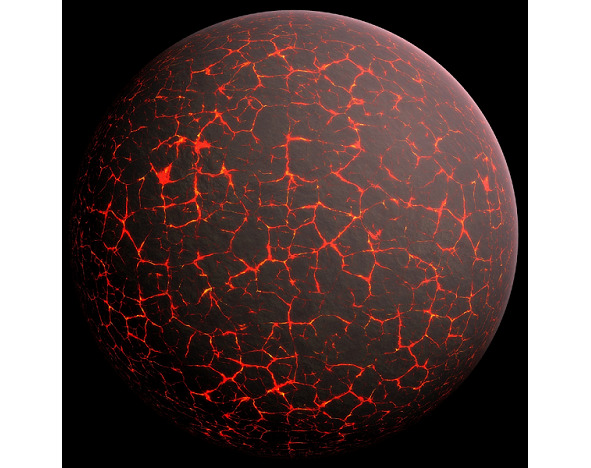
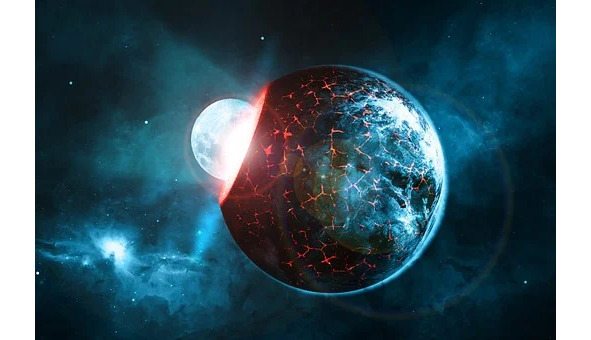
However, for a long one and a half billion years of the stage of development, called Archaea, life forms hardly develop. The top of the current day after day, year after year, hundreds after hundreds of millions of years of the demiurgic process is prokaryotes, bacteria without a nucleus and eukaryotes at all, the basis of plants and animals, which have this nucleus. Multicellular algae, barely visible to the naked eye, appear.
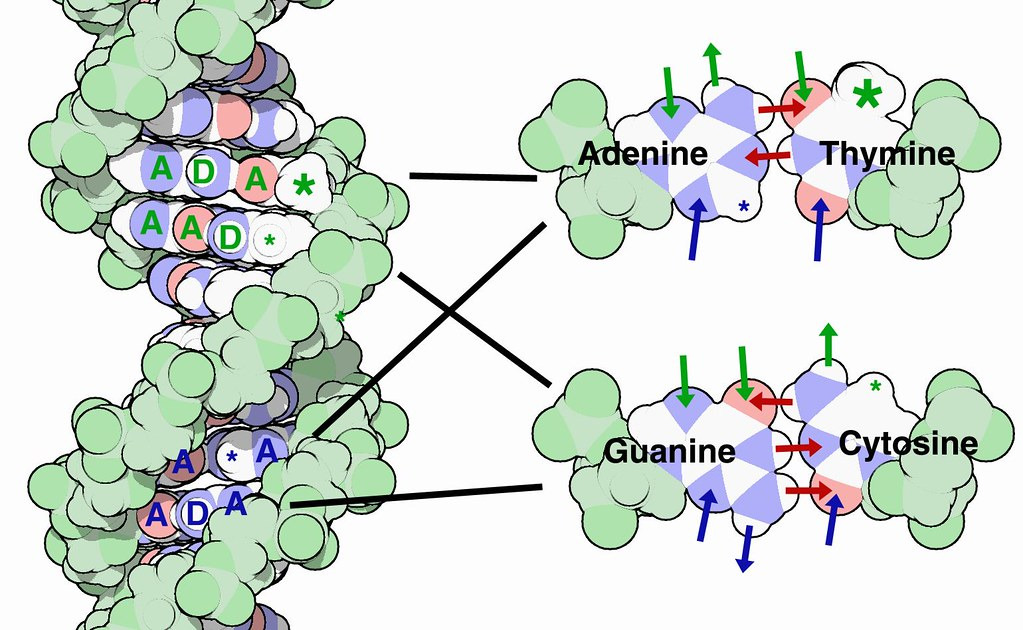
All these organisms have a single, universal common ancestor. The genetic set of living things on Earth is exactly the same. DNA is assembled from four biological molecules — adenine, guanine, cytosine and thymine.
Proterozoic
Proterozoic (Greek «earlier life») — the longest geological period, 2 billion years, starts 2.5 billion years ago. For one reason or another, oxygen accumulates in the atmosphere. This gas leads to the extinction of almost all anaerobic creatures. The ozone layer is forming. The next trouble is the great Huron glaciation (2.4 — 2.1 billion years ago). Methane combines with oxygen to form carbon dioxide, which is more transparent to reflected light. As a result, the Earth turns into a huge «snowball». It is as cold at the equator as it is in modern Antarctica. Life is preserved in polynyas and reservoirs with melt water.

Volcanoes increase levels of carbon dioxide and methane. A new perturbation is being prepared. For some thousand years, significant territories are freed from ice and the planet’s climate returns to the norm known to us.
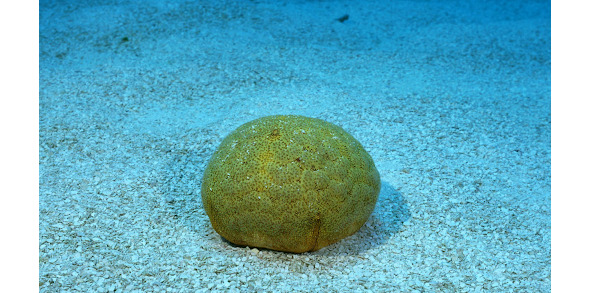
The second option, explaining the presence of signs of glaciers in the equatorial regions, is a fairly rapid rotation of the Earth’s poles, followed by their return to their place. According to some bold calculations of scientists, the replacement of the North by the South and vice versa takes almost a single day.
One way or another, sea sponges appear, that is, aquatic multicellular animals leading an attached lifestyle, as well as fungi, essence, eukaryotic communities that combine the characteristics of plants and animals. As a result of their vital activity, soil appears.

The single continent of Rodinia is split into two parts. Pieces of sushi diverge to the poles. The northern half is called Laurasia, the southern half is Gondwana.
The sun increases luminosity by 12%. The era of the Precambrian or Cryptozoic, «Hidden Life» (sometimes this is how the aeons of Archean and Proterozoic are called together) ends.
Phanerozoic
Multicellular beings, namely, higher plants, adorn the Universe with themselves 580 million years ago, laying the foundation for the Phanerozoic («manifest life») aeon. In this period of time we are also living with you.

The first era is called the Paleozoic («Ancient Life»). The Paleozoic is divided into several periods. Let’s remember; Cambrian, Ordovician, Silurian, Devonian, Carboniferous and Permian. These periods of time last for 20—60 million years.
In the Cambrian, organisms learn to build strong skeletons, which can be identified by paleontologists or forensic experts. The star of this period is the trilobite, a pretty rounded arthropod, a kind of prototype of modern cancer.
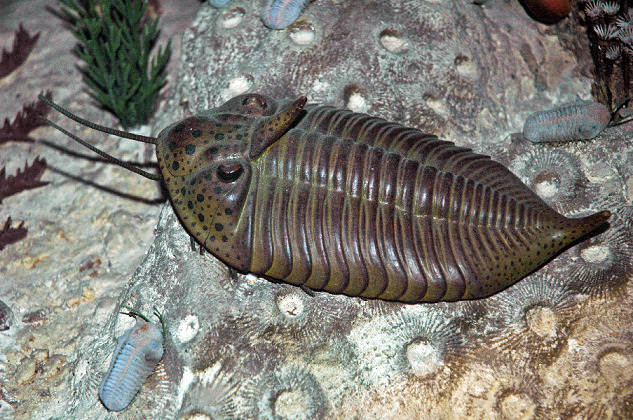
There are those that, with some stretch, can be ranked among the modern cephalopods - reminiscent of octopuses and squids. Their heyday falls on the Ordovician. The Silurian, lasting “only” 25 million years, is marked by two massive (up to 50% of the genera of marine life) extinctions. One of them, which occurred 443 million years ago, Ordovician-Silurian, was caused by the movement of the Gondwana continent to the South Pole and a sharp drop in ocean level. The already thriving brachiopods (something like our oysters), bivalve molluscs, bryozoans (colonies of small worms) and corals were especially affected. The Devonian period is characterized by terrestrial vertebrates, the famous cross-finned fish, insects, as well as gymnosperms (“naked” seeds are hidden in cones), fern and horsetail plants. Shellfish and fish appear. Trilobites, on the other hand, are rapidly dying out with such an abundance of predators. However, a massive pestilence at the end of the Devonian affects more than half of all marine life. The reason for this may be the fall of a comet.

Quite a long (60 million years) Carboniferous period, or Carboniferous, begins 359 million years ago. It is characterized, as the name implies, by intense coal formation. Gymnosperms develop and thrive: conifers, cordaites (trees that resemble these very conifers), and cicadas (a cross between a palm tree and a fern), baluns and horsetails. Amphibians thrive in warm swamps. Here are the stegocephals, they are labyrintodonts, resembling a crocodile-newt, and ripidists, an even larger 8-meter crocodile. In the seas, sharks frolic, reaching 13 meters. lengths Above our heads soar mega-neuras - dragonflies with a wingspan of up to 65 cm. This heady air itself is characterized by an increased - up to 35%, oxygen content (now 21%).
In the Permian period (the name comes from the naming of the Russian city, in the vicinity of which this stage is highlighted), the continents are united in a different way. Formed, washed by the great ocean of Panthalassa, the global land of Pangea.
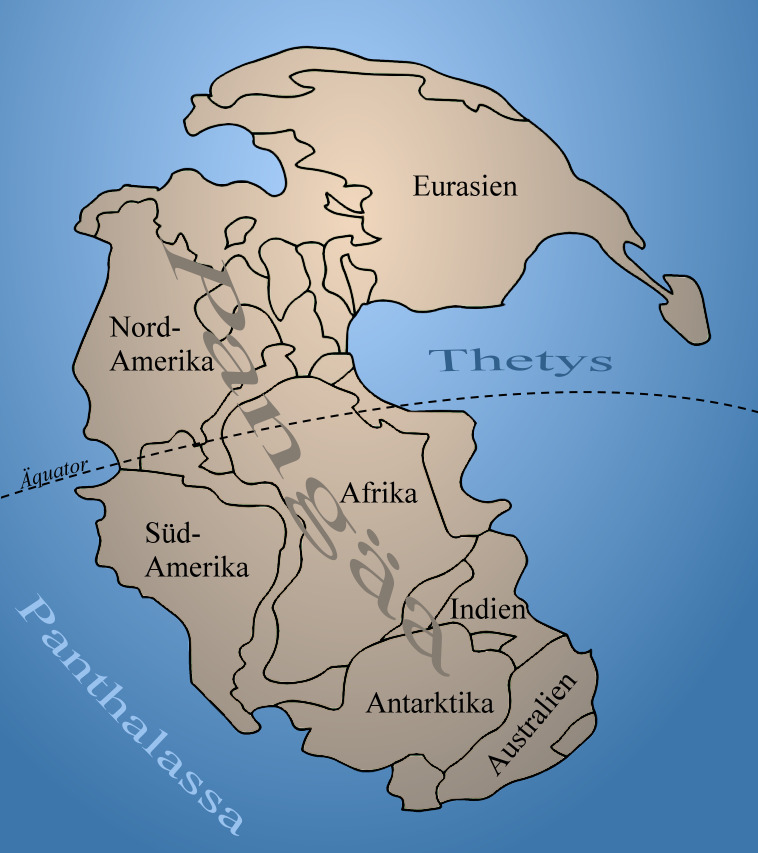
In the Jurassic period of the next era, it will split into the six continents we know. The geological process is now characterized by a sharp decrease in the area of inland water bodies and the onset of deserts. Sand dunes cover almost the entire territory of present-day Siberia. Carboniferous deposits (coal) are overlain by Triassic variegated sandstone and shell limestone.
The successes of speciation of the Permian are rather modest — only a few species of insects. The period ends with the largest Permian-Triassic extinction in history, 252 million years ago. In less than 60 thousand years, 96% of marine species, 70% of terrestrial vertebrates and 83% of the insect class die. The main hypotheses of the causes of this event are as follows. The first is the fall of an asteroid with a diameter of several tens of kilometers onto our planet. A crater in the Wilkes Land area in Antarctica, a 300 kilometer ring anomaly, seems to confirm this version. The second is the release of greenhouse gas from frozen and for the time being resting at the bottom of methane hydrates. In this case, the oceans boil, riddled with bubbles, like champagne in a bottle freed from a cork. In less than half a century, the water column releases four trillion tons of methane into the atmosphere. The weather is going crazy, harsh, 6 Сº in a year of warming give way to cold snaps and this is not at all to the liking of the inhabitants of the planet. The third is anoxia (suffocation). Water interacts with hydrogen sulfide released into the atmosphere by Siberian traps, flooding vast territories with lava and losing oxygen. Animal remains also emit hydrogen sulfide, which exacerbates the tragedy.
Be that as it may, the cute trilobites, and with them the Paleozoic itself, comes to an end.
The restoration of the biosphere takes five million years. The Triassic, the first period of the Mesozoic era, opens.

Of the surviving reptiles, archosaurs stand out. Who are these «initial lizards»? They are classified according to the characteristics of the skull, nasal septum and jaws. The lucky ones become the ancestors of modern birds and crocodiles, as well as the entire family of dinosaurs. Belemnites appear, a kind of squid, ammonites with shells twisted into a spiral, gastropods (gastropods), i.e., snails, as well as bivalve mollusks known to us — oysters.
Bony fishes, they are also ray-finned fishes, are distinguished from armored fish with ganoid scales (rhombic plates that connect in a semblance of an external skeleton).
A classic turtle is being formed.
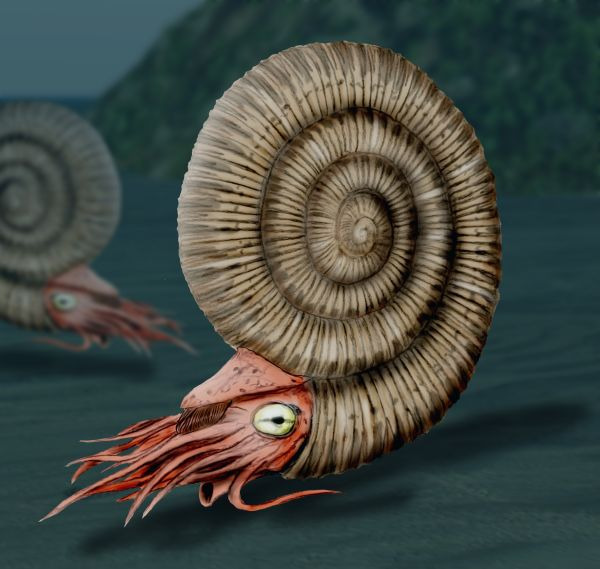
Synapsids, they are also theromorphs, they are animal-like, namely, their suborder cynodonts of the theriodonts group (animal-toothed lizards), according to Darwin’s theory, become the ancestors of us mammals. This lizard has four very long legs, lays eggs, has wool, judging by the structure of the nasal septum, it warms the inhaled air and, in general, is no longer a cold-blooded reptile.
The Triassic lasts 50 million years and ends 200 million years ago with another global catastrophe. The reasons for the Triassic-Jurassic extinction may be the same that marked the onset of this era. The result is the liberation of ecological niches that dinosaurs immediately occupy.
Dinosaurs, that is, «terrible lizards» differ from the usual reptiles for this time only in size. There is no fundamental difference. But, size does matter. The largest representative of the group of herbivorous sauropods (tetrapods) — seismosaurus, reaches 36 m in length, 20 m in height and weighs 140 tons. Titanosaurus weighs only 50 tons, but is much more widely represented in fossil remains. Theropods, that is, bipedal animals, are usually predators. Their champion is Tyrannosaurus Rex. Height to the end of the thigh is 4.5 meters, length is 13 m, weight is 8 tons. The modern African elephant can boast of a slightly smaller mass.
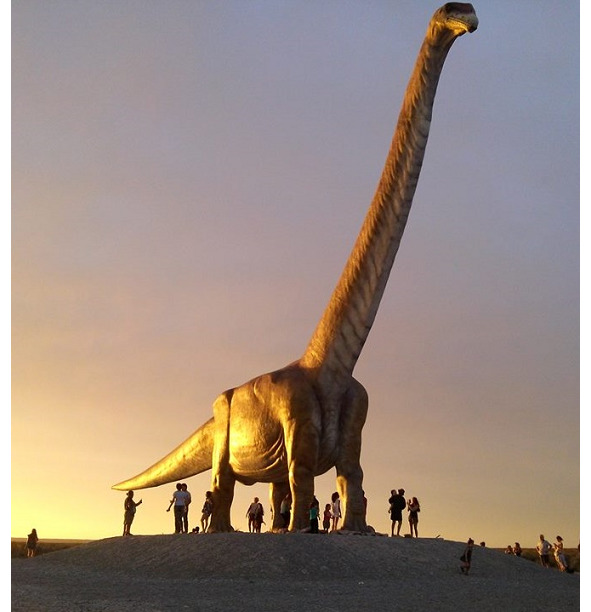
The Jurassic period (named after the Jura mountains in Switzerland) is characterized by clastic rocks (sharp stones), shales (layered accretion of minerals), igneous rocks (basalt is a loose gray stone with crystalline inclusions), clays and sands. All this is evidence of the disintegration of Pangea into continental blocks, with the accompanying formation of many shallow warm seas. Treelike ferns with branches lying in one plane, forming a semblance of a leaf, and also, similar to palm trees, but less lush 10—18 meter cycads, are spreading. Reef communities (simply reefs) are formed from coral polyps formed in the Triassic.
Archeopteryx appears — an «ancient bird» the size of a crow, clumsily, according to paleontologists, planning from tree to tree. Actually, the scientific community still does not have a generally accepted theory of the origin of birds. It is in the Jurassic that pterosaurs, flying warm-blooded lizards, conquer the air. A well-known representative of this genus, the pterodactyl suborder — pteranodon has a wingspan of considerable 7 meters. Also known are their big brothers, found in North America quetzalcoatl, 12 m wide, which corresponds to the dimensions of a light bomber during the Second World War.
The Cretaceous Period (Cretaceous), which began 145 million years ago, is characterized by abundant deposits of correspondingly writing chalk. What students use to draw signs on the board from the remains of funny invertebrate marine animals — ammonites, is formed. Vast tracts of land diverge, forming bodies of water, warm shoals and islands. Flowering plants appear, they are angiosperms, with a flower as a reproductive organ and complex double fertilization.
This is extremely pleasing to insects, which become the main pollinators of plants. Their diversity is increasing dramatically. Mesozoic landscapes flourish
In the sky, together with pterodactyls that look like huge bats, real, that is, feathered birds, already fly.
All this idyll ends 65 million years ago, during the Cretaceous-Paleogene great extinction, which was most studied by scientists.

The main version is the fall of a celestial body, which caused the appearance of the Chicxulub crater near the Yucatan Peninsula (Mexico). The diameter of the killer asteroid is 10 kilometers, the depth of the crater is 17—20 km. width 180 km. The impact force is 2 million times greater than the energy released during the testing of the most powerful hydrogen bomb AN 602 on Novaya Zemlya.
Perhaps this impact was reinforced by the fall of a second celestial body, an asteroid or comet. Evidence of this emergency is the oval crater Shiva off the coast of modern India, 400 kilometers in diameter at its narrowest part. The fact is that, apparently, after the first outbreak of extinction, some species of dinosaurs have existed for another one or two million years.
As a consequence, chalk deposits are separated from the rocks of the next period by a layer of gray clay, sand and lime.
New era — Cenozoic («new life»). It starts from the Paleogene. This geological period is distinguished by a fairly even tropical climate, the dominance of mammals, birds, the first cetaceans, as well as teleost fish. Some cephalopods get rid of shells and turn into octopuses, cuttlefish and squid known to us.
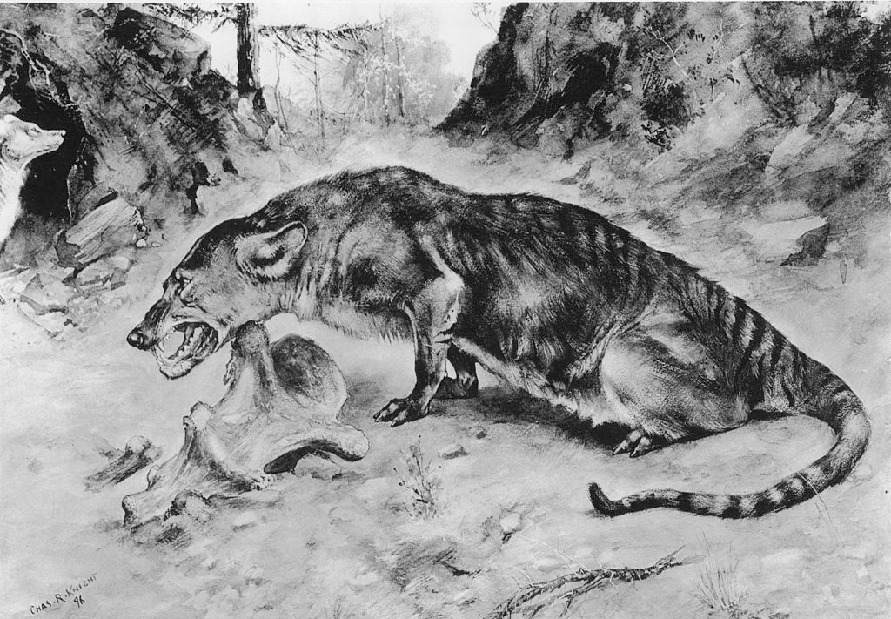
Neogene opens 23 million years ago. Whales are taking shape. Their basis is the mesonychia, extinct 63 — 28 million years ago, one of the few predators among ungulates. They resemble a wolf, bear and lion at the same time.
…Placentals, ie, viviparous mammals dominate. The fauna of the period is already clearly similar to the modern one.
The Quaternary period, he is also an anthropogen («creating man») starts 2,588 million years ago. It is separated from the previous epoch by the Gauss-Matuyama paleomagnetic boundary. The north and south magnetic poles of the Earth are reversed. The first era — the Pleistocene (from the Greek «numerous» and «modern») — the time of glaciations and interglacial periods, ends only 11.7 thousand years ago. Here, look, you are surrounded by woolly rhinos, saber-toothed tigers, cave lions, marsupial lions, mammoths and diprotodons (something like marsupial grizzlies), mastodons (simplified — short-haired mammoths with a special structure of jaws). Severe cold snaps, during which glaciers occupy 30% of the land area, last on average 40 thousand years. They are replaced by 20 thousand-year interglacials.

The last ice age, that is, the Wurm glaciation, starts 110 thousand years ago. A stunning ice sheet spreads across Eurasia from Norway. The covers of Antarctica are being formed. The last glacial maximum ends 11 thousand years from our time with you. The level of the World Ocean rises by 120—135 m. It seems that everything is fine.
Why did the fossil nowadays warm-blooded animals, adapted to many perturbations, become extinct? The main reason, so beloved by scientists, is still the same — the fall of an asteroid on the territory of present-day Canada or Mexico and the associated sharp, within one day, global, simply violent cooling. Mammoths freeze while standing, not even having time to digest food.
Be that as it may, the main time is dominated by the Holocene («whole» and «new»), the interglacial period, which continues to this day, is relatively favorable for our life.
Man stands out from the animal world three million years ago, in the Paleolithic, roughly coinciding with the Pleistocene. People practically indistinguishable from modern Homo sapiens formed 35—40 thousand years before us. These figures are controversial, but we can present them as the basis for all subsequent calculations. Skills — making ceramics, fishing, hunting, and other tools from bone, leather, wood.
The first religious rituals appear.
Stone, Bronze, Iron Age

The late Holocene is marked by the wide strides of Homo sapiens. The first of them — the Neolithic or Stone Age — lasts from the beginning of the Pleistocene. It is preceded by the Mesolithic, when people accumulate the skills of joint hunting, improve their speech, develop an understanding of social norms, religious prohibitions, and long-term traditions.
Modern scholars advertise the first pronounced archaeological culture — the so-called. «Hamburg», which suddenly appeared on the territory of the modern Netherlands and Germany. It is evidenced by stone spearheads with a lateral recess and stone incisors. The oldest city on Earth mentioned in the annals is Jericho (in Arabic — «Ariha», Greek — «Jericho», located now on the territory of the Palestinian National Authority, 30 km north-west of Jerusalem.
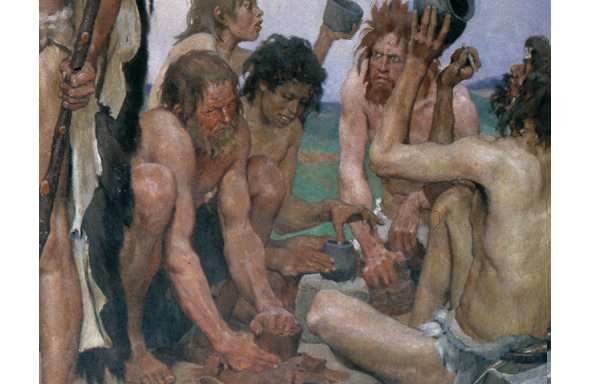
About 6, 5 thousand years ago, mankind passes into the Bronze Age (in America, it is rather copper-obsidian). By the 13th century BC, the era of human development, characterized by the general peaceful coexistence of tribes, for better or worse, ends. Sources point to «a split in the single proto-Indo-European community», grandiose migrations of peoples, and the loss of the former peace-loving culture.
The Iron Age is marked by a series of bloody military conflicts and at the same time rapid technological development. This era is preceded by the so-called «Bronze Collapse». For two or three centuries, humanity falls into the abyss of great troubles and general decline. The reason for this is the eruption of the supervolcano Hekla in Iceland, or its powerful brother Santorini in the opposite part of the planet (12th century BC). Perhaps the culprit is a change in ocean currents, a total drought, the appearance of an iron miracle weapon and, as a consequence, an unprecedented activation of the military class. We can only guess about all this.

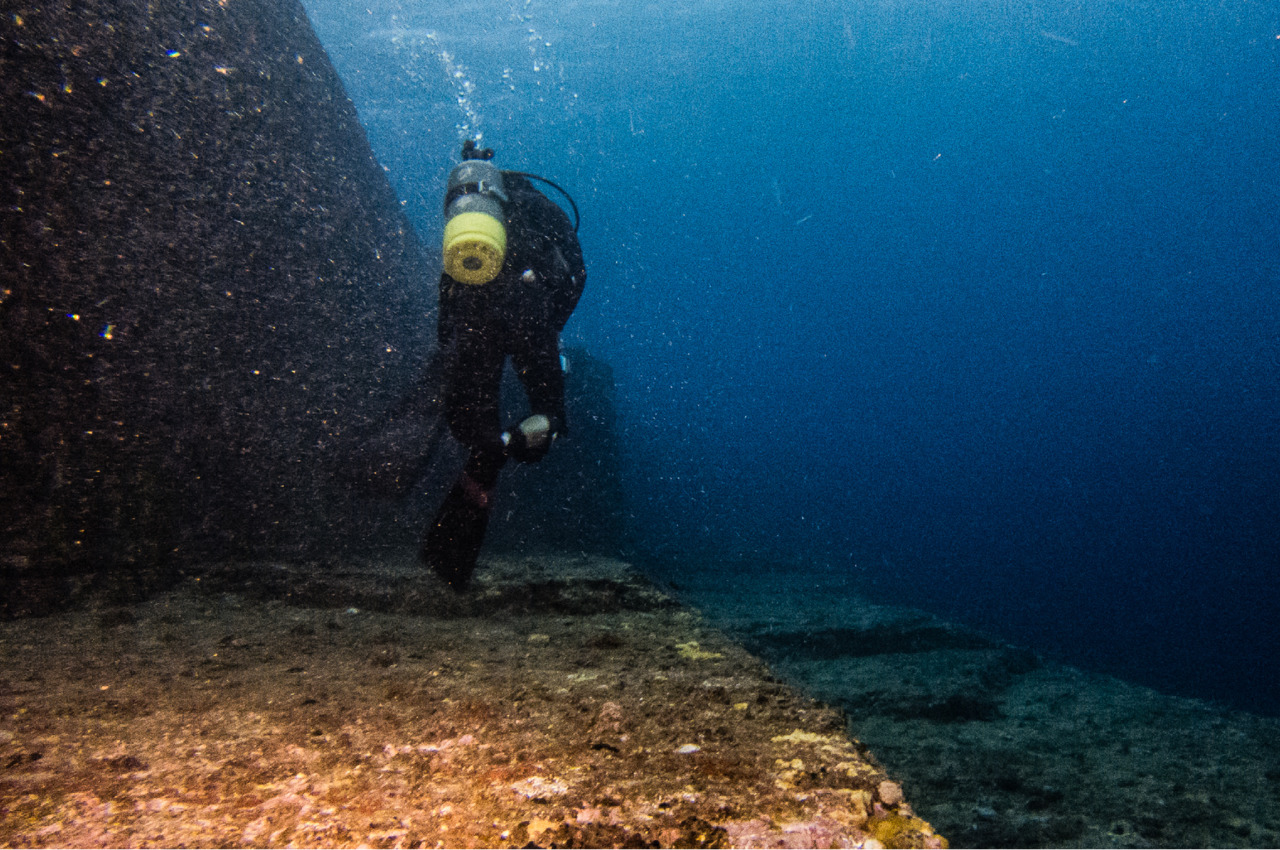
This is the official history of our planet. But for the construction of its building, qualified master-scientists select only those bricks of knowledge that do not spoil the overall idealized picture.
History of Antiquity
Sumerians. Ancient Egypt
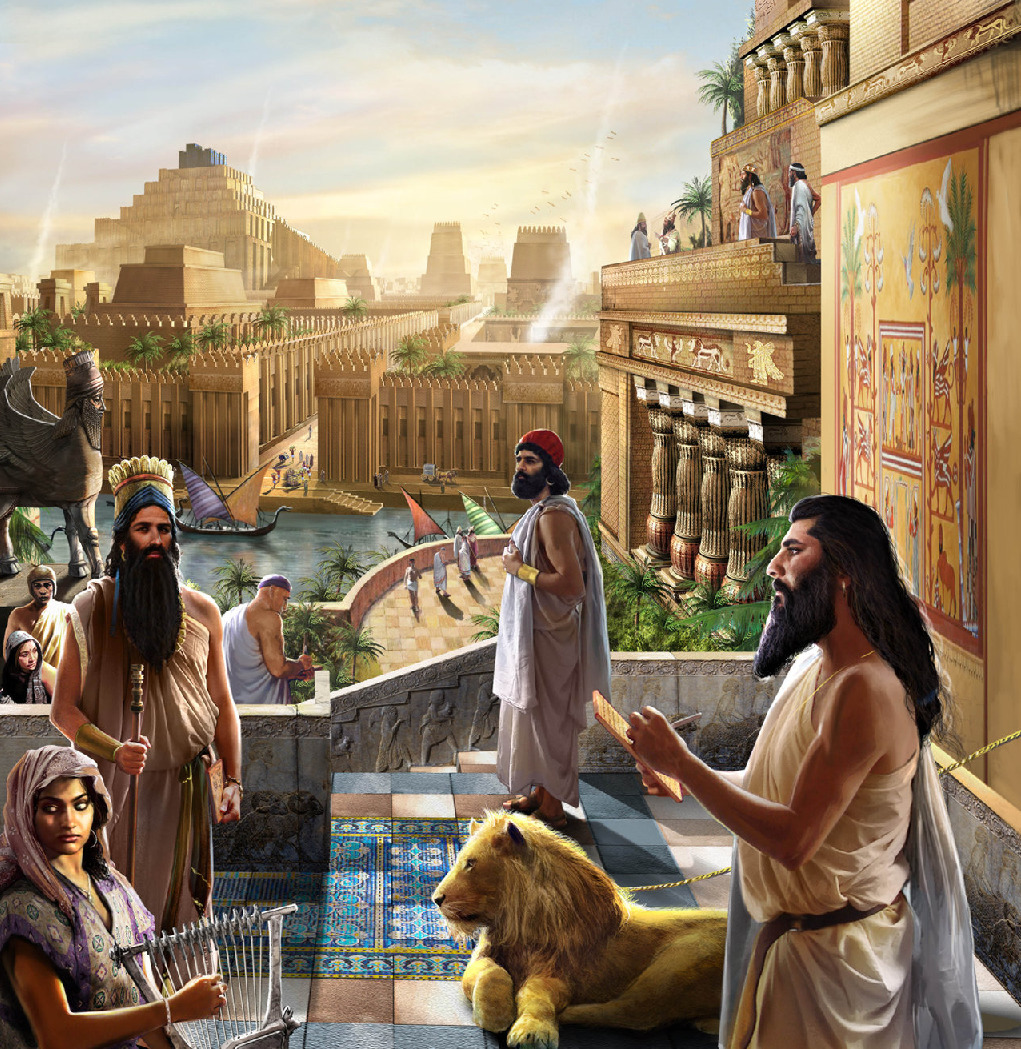
…Sumerians. Four and a half thousand years ago. Territory of southern Iraq. Cuneiform, the world’s first wheel, brewing. First, Babylon was formed as a small village. Sumerians dissolve into new peoples. But their withered blood gives new, wonderful shoots. The Babylonian kingdom rises, flourishes for several centuries, then it is ravaged by the Hittites (the area of residence is the south of modern Turkey). The Hittites are at war with Egypt, seizing its province, but unable to survive the bronze collapse — a sudden loss of writing and skills, possibly under the influence of the eruption of the supervolcano Hekla, lose to the «sea peoples» who came from the Balkans and Asia Minor.
From a modest nome, i.e., the rural settlement of Ashur, in the center of modern Iraq, the great power of antiquity, Assyria, is developing. Piece by piece, exuding bloody drool, it engulfs the territories of modern Turkey, Syria, Israel and partially Egypt. The pearl of Assyria, Babylon retains autonomy from its once province, seeks allies, revolts, dies and rebuilds again. In the absence of strong garrisons, shouts, swords, chariots, whips and overseers, military power in the new provinces simply does not work. Assyria gets tired of fighting. Descending from the northern mountains, at first as loyal allies, even more ruthless and uncultured Scythians wander through its territory, almost without encountering resistance. Media and Babylon are gathering armies according to the Assyrian model, destroying the new capital of Assyria, Nineveh, its sacred center Ashur and all this utterly militarized state.
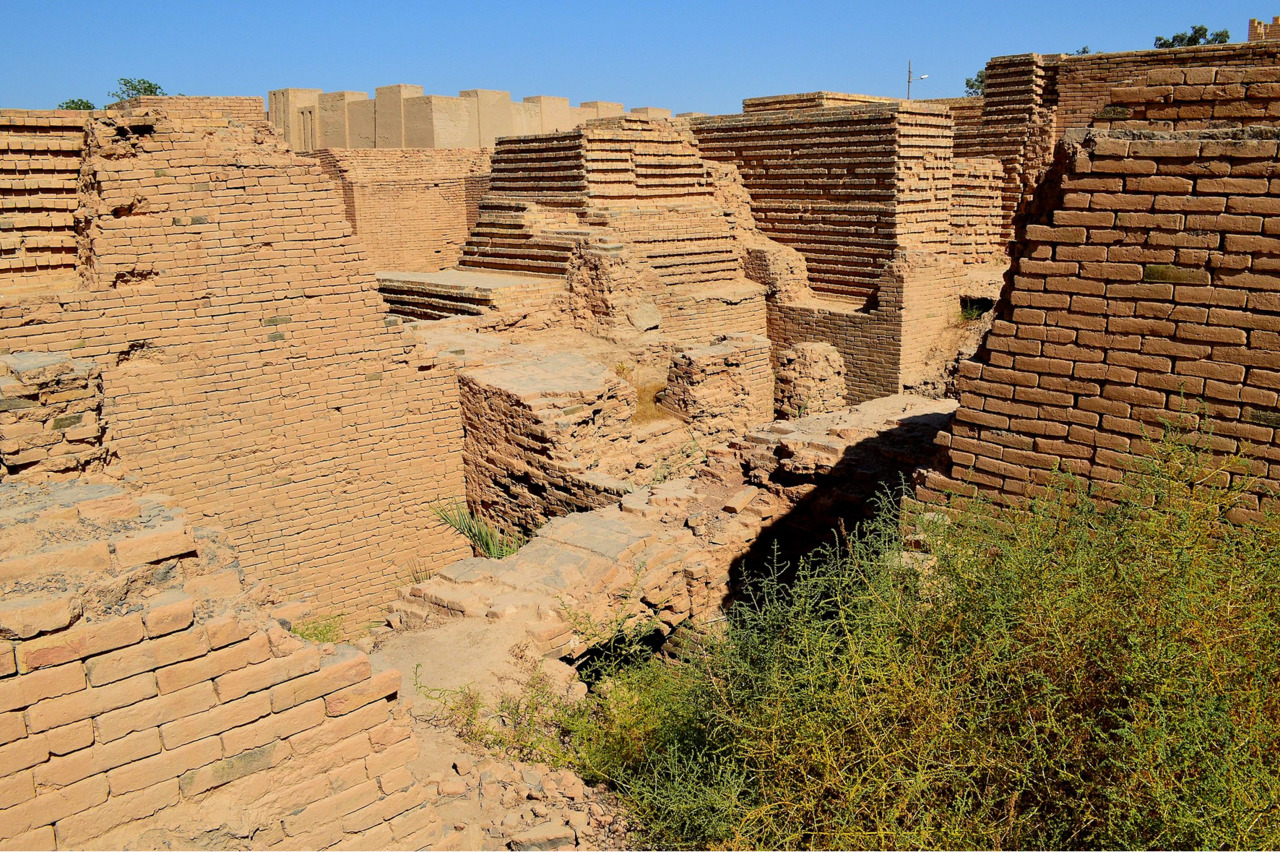
The remnants of the armies of the once formidable superpower are looking for an alliance with the reborn, like Osiris, Egypt and in the end are lost somewhere in its endless deserts ...
Sample of Sumer poetry:
«… Your beauty is divine, dear
Leo, dear to heart
Divine beauty is your dear
You conquered me, I tremble before you…
Leo, let me caress you
My precious caresses are sweeter than honey…»
...
Ancient Egypt (Latin pronunciation «Ayguptus», Hebrew «Mitsraim», Arabic «Masr», self-name Ta-Kemet, «Black Earth»).

The oldest Egyptian kingdom was founded five thousand years ago by the monarch Menes and his people, who supposedly arrived from the now flooded coast of Western India. Let's remember and color this historical scheme. Early Kingdom, Ancient, Middle and New. Pharaoh Psammetichus (664-610 BC) expels hard-hearted Assyrians from his country. Independence does not last long. In the fifth century BC, Egypt was captured by Persia (the Achaemenid dynasty). Two centuries later, the country is ruled by the Hellenic dynasty of the Ptolemies. As a rule, the conquerors, admiring the developed culture of the "Black Earth", treat the Egyptians rather softly. In total, for two and a half millennia of the era of the Ancient World, 32 rather long dynasties rule Egypt.
Poetry of Ancient Egypt:
…I heard the words of Imhotep and Jedefkhor
Words that everyone repeats
What about their tombs?
The walls have come crashing down
Even the place where they stood was not preserved
As if they never were
Nobody has come from there yet
To tell what is there
And soothe our hearts…
(Song from the house of the deceased king Antef, inscribed in front of the singer with a harp)
…In the first century BC, with the death of the son of Cleopatra and Caesar, the unfortunate youth Caesarion, Egypt completely passed into the hands of the Romans. Since the beginning of the eighth century AD, the Arabs have dominated here.
Until the very late period, the Egyptians did not know any developed monetary system. At the very least, financial means are substituted for 42 kg sacks of grain. and the debens are bars of copper or silver. To a large extent, everything in Ayguptos depends on what the rulers decided and how correctly their words were reflected on the papyrus by an almost equally significant figure — the scribe.
The kitchen of a standard Egyptian dwelling does not have a roof, but has a millstone for grinding grain and an oven. The basis of the diet of ordinary, and not ordinary residents of the country Ka-Temet, too, is wheat buns. Beer «hake», from date juice and bread, sweetish or bitter, considerable 10 degrees, almost like wine, with additions of mandrake, anise, saffron. Famous varieties — «Merry fellow traveler», «Fine».
For some religious reasons, the ancient Egyptians do not eat pork, as well as the Semites living a little to the east.
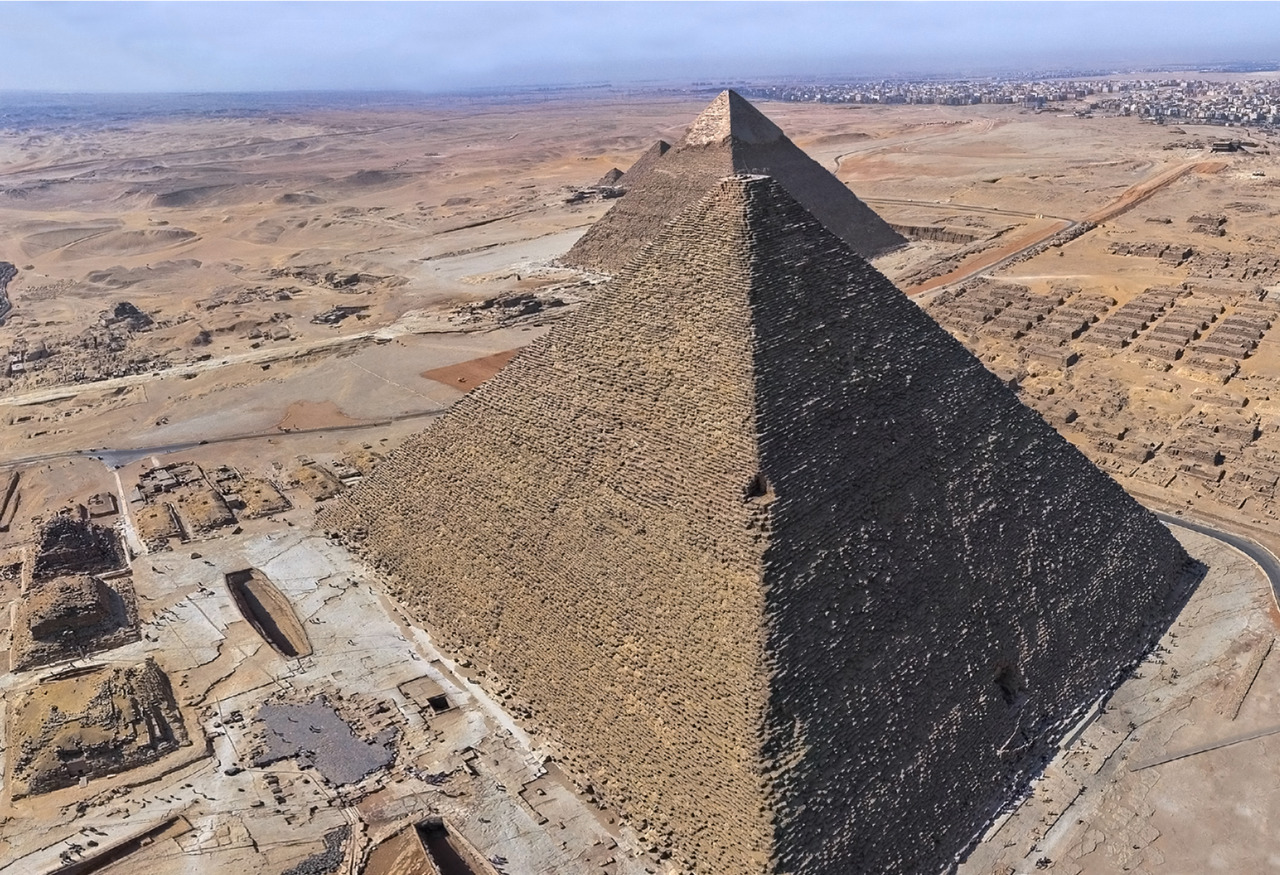
Temples and other large-scale religious buildings in Egypt are not intended for mass gatherings. Only priests are involved in the service. The basis of religion is the need to collect some disconnected «aspects» in order to continue to exist in a spiritual form. On the physical plane, this is expressed in the need to mummify and preserve the bodies of people who have gone to another world in a special way.
Greece and Persia
Ancient Greece. One thousand hundred years BC — the beginning of the so-called polis period. The first cities, houses, temples and fortress walls. The invasion of the Dorians from the north (in their pure form — the Spartans), the high achievements of culture and social structure. Amphoras and Forums. Militant Sparta rules over the Greek world on a par with the wise Athens. Mighty, albeit imperceptibly withering, Persia concludes a de jure treaty with the Greeks, on the protectorate, which Sparta monitors.
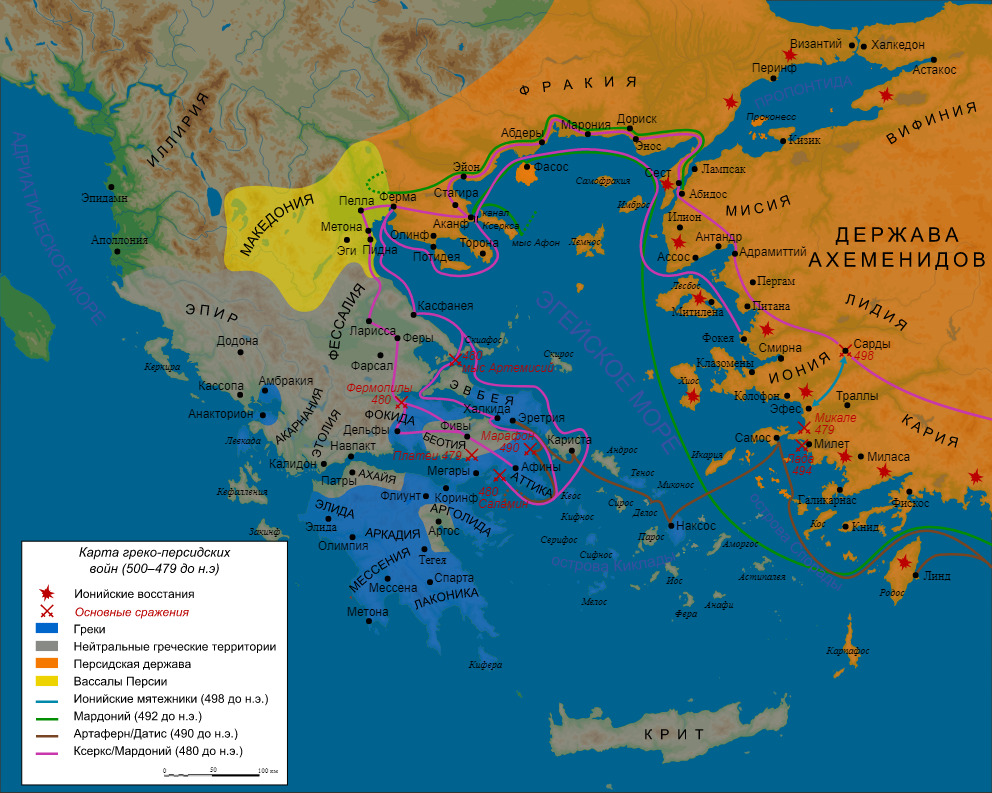
By this time (or, to be precise, 492 BC), the new ruler of Persia, Darius the First, founds the Achaemenid empire, including, among other things, Syria, Asia Minor and Egypt. Accusing the Greeks of violating the union treaty, formalized in a "small text" as an entry into this empire, he sends an expeditionary force of 25,000 soldiers to Greece, but receives a decisive rebuff from the founders of democracy. The Persians lose 7,000 soldiers, the Greeks - only 194. 19 years after the Battle of Marathon that has not faded for two and a half millennia, the Battle of Thermopylae and the naval battle of Salamis follow. The troops of the son of Darius, Xerxes, suffer a final defeat at the Greek Plataea.
Ancient Greek poetry:
…And every time, as soon as I
I’ll get along with you, from a tender meeting
Suddenly my soul trembles
And speech grows numb on the lips
And a keen feeling of love
Runs faster through the veins
And ringing in the ears… and a riot in blood…
And cold sweat comes out…
And the body — the body keeps trembling…
The faded flower is paler
My look, exhausted by passion…
I am breathless… and, numb
In my eyes, I feel the light is dimming…
I look, not seeing… I have no strength…
And I wait in unconsciousness… and I know
Here, here I will die… here I am dying
(Sappho, Lesvos Island, 570—630 BC, translated by V. Krestovsky)
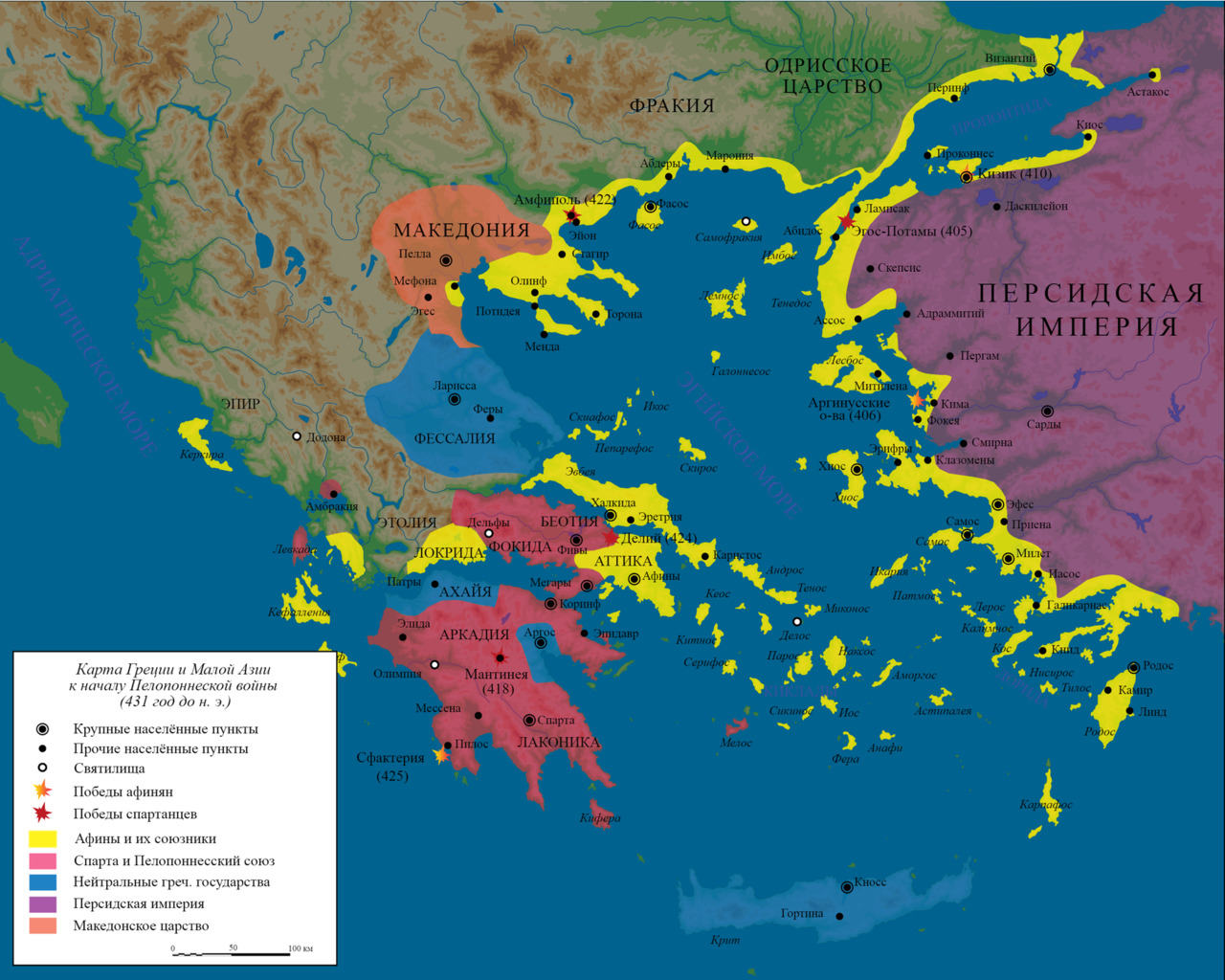
But the testosterone-soaked, muscle-flexing allies now turn their gaze to each other. … In the First Peloponnesian, ancient Greek Civil War, Sparta prevailed. The country of aggressive ascetics seizes Athens, exhausted by struggle, and ends the century of its democracy with the accession of a militaristic oligarchy devoid of any creative principle. This is not at all pleasant to the freedom-loving Greek colonies on all sides of the Ecumene (the world mastered by mankind). Detachments of volunteers, grasping the oars, amicably rush to the metropolis. In the end, the troops of Thebes (a powerful polis somewhat north of Athens) and Athens, which are reborn in spite of the enemies, unite, and step by step, push the Dorians back to the southeast of the Peloponnesian peninsula. Here the Spartans, becoming, in their own way, a relic of the poor, but implacable warriors, century after century, turn into ordinary Greeks.
…Macedonia (northern part of the Balkan Peninsula), the Greek kingdom, before that, by the way, the former vassal of Persia rises and sets up its garrisons in all the major city-states of Greece.
The ruler of the now united Greece, the commander Alexander the Great, conquered Persia and part of the adjacent countries in 330 BC. e. Seven years later, this huge, but loose, like a jellyfish state disintegrates into Seleucia, Parthia and Egypt. Egypt is now ruled by the wise companion of Alexander Ptolemy, who becomes the new pharaoh and the founder of the dynasty of his name.
But quite soon, by historical standards, even more powerful western neighbor — Rome, will pay attention to sunny, even Great Greece…

Ancient China. Thirty-six centuries BC. This is the bottom of the world history known to us.
The first state covered by written sources is the semi-mythical Shang-Yin (1600 BC — 1046 BC). Difference from states, for example, European ones — both in ancient and modern China there are no temples dedicated to the great gods. Everywhere there are only home altars dedicated to deceased ancestors, a kind of technical points of contact with them. The Great Sky, in which the souls of ancestors and great rulers live, is not a personified deity, the giver of the meaning of life and the resonator of all your actions.
…After Shang slides into the abyss of corruption and debauchery, the whole kingdom is easily conquered by the army of the benevolent rebel general U-Wang. Now it is called Zhou, after the ruler of one of the provinces, Wu-Wang’s father.
The flowering of Confucianism and Taoism falls on the fourth century BC. Be that as it may, prosperous Zhou is divided into seven warring states — Qin, Wei, Zhao, Han, Qi, Yan, Chu.
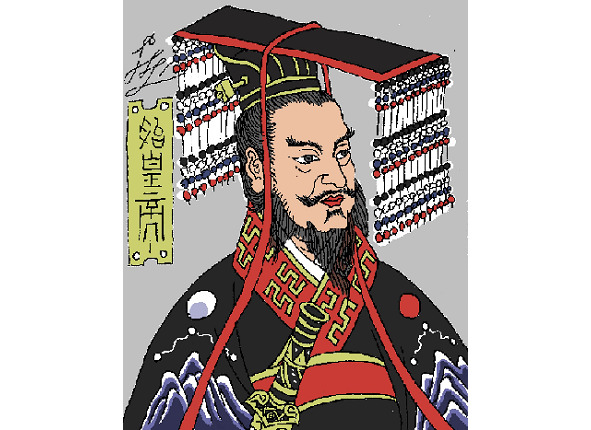
For two centuries BC. the legendary emperor of one of them, Qin Shi Huang, deprives all his neighbors of independence. The northern sections of the walls of the former kingdoms are joined together and henceforth form the Great Wall of China. The dictator massively destroys scientists in whom he sees the main reason for the changes in the beneficial Heavenly Order and burns every single book, as far as possible. However, shortly after the physical death of Qin Shi Huang, this whole «unchanging» order, together with the state and the Qin dynasty, disintegrated.
Ancient Rome
A pencil sketch of a living picture this time is as follows. Seven centuries BC — the foundation of the capital of the future Empire by the children of the vestal Rhea Sylvia and Mars itself, lovers of wolf milk, brothers Romulus and Remus. Two centuries BC — the royal period, seven active Roman kings.
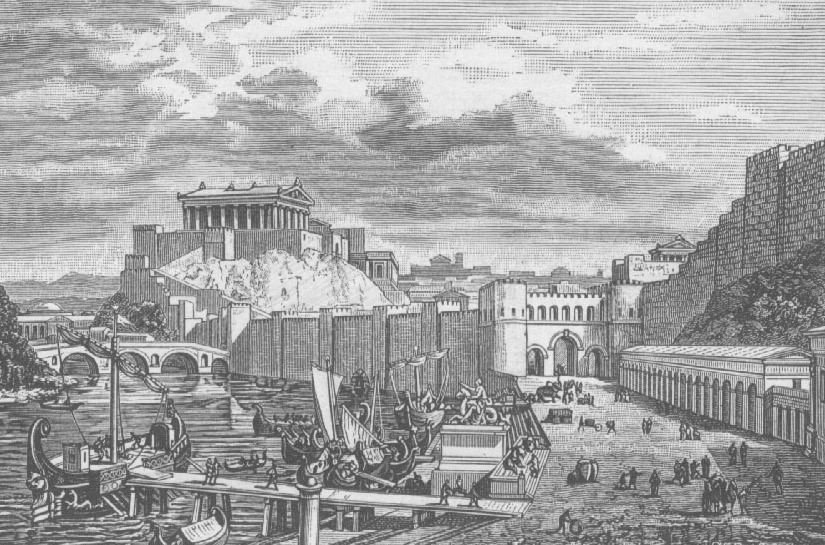
Then, following the progressive model of the Hellenes and in opposition to the barbarians, the Romans form a Republic — the «Common Cause». New strokes — the invasion of Gauls, the same geese not sleeping on the Capitol, a sword in the scales — «woe to the vanquished», a war with Great Greece, which settled in southern Italy, King Pyrrhus and catastrophic Pyrrhic victories.
First Punic War. Struggle with Carthage for the island of Sicily, the founding of a fleet modeled on a progressive Carthaginian ship washed ashore. The theater of military operations moves to Africa, where the Roman victories first entail euphoria, and then a serious defeat. The remnants of the army are evacuated by sea. But on the way back, almost the entire Republican fleet perishes in the storm.
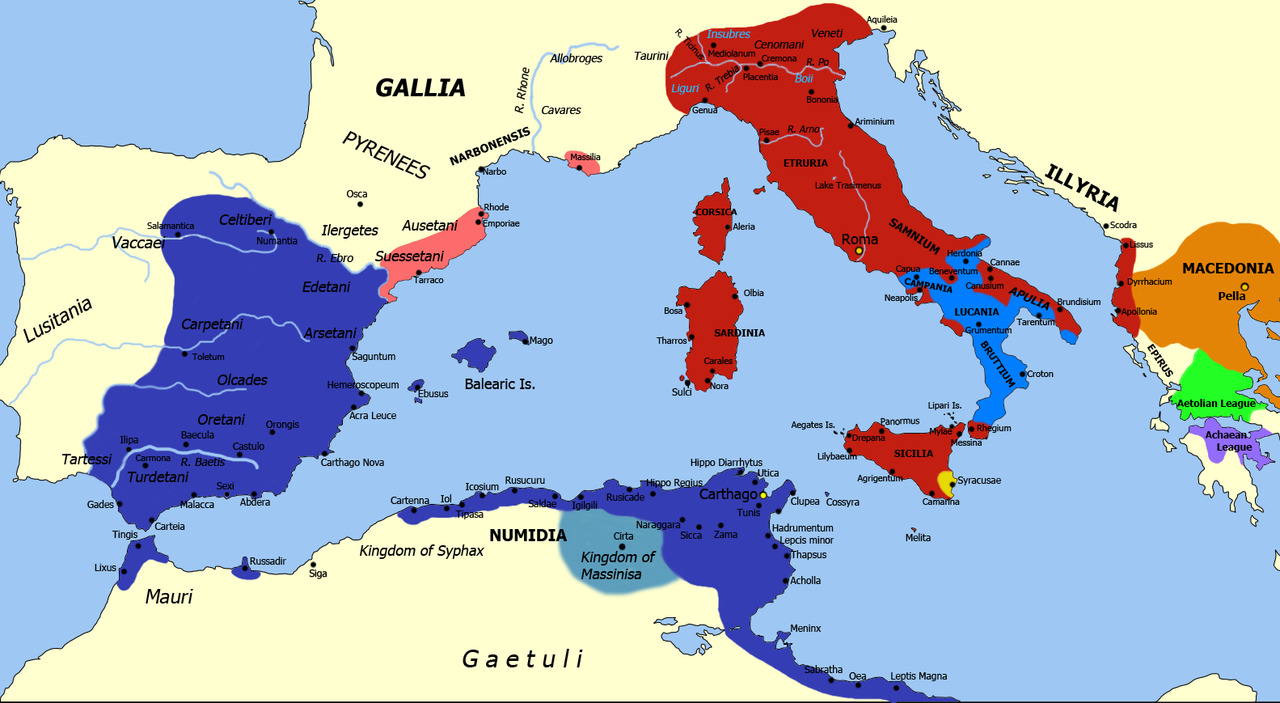
The fighting moves to Sicily, where the troops of Carthage are commanded by the commander Hamilcar Barca. The forces of the parties are extremely depleted. Toward the end of the day, the Carthaginian fleet is severely defeated by the Romans who have learned to fight at sea. Carthage pays Rome a hefty indemnity and renounces Sicily.
Second Punic War. Two centuries BC. The commander Hamilcar Barka dies, leaving the world, or rather the war, three sons — Hannibal, Magon and Hasdrubal. Their goal is the same as that of their father — Rome must be destroyed.
Hannibal transports his troops to Italy across the icy Alps and, among other things, inflicts a cruel defeat on the Romans at Cannes. 60 thousand Romans die here. A year later, having pacified three quarters of Italy, Hannibal tries to take the city of Rome. Due to unpleasant omens for both sides, the assault will not take place. The Romans capture the Greek city of Syracuse, allied to Carthage. At the same time, the great scientist of antiquity, Archimedes, perishes. The 30,000th Roman Expeditionary Force under the command of Scipio Africanus sets foot on the land of Africa. The commander makes an alliance with the Libyan tribes and defeats the army of Carthage at Zama. Hannibal flees to the king of Antioch, in the south of modern Turkey. This commander more than once participates in battles against Rome and the second time he personally meets with Scipio. Then he moved to Armenia, which became independent from the Seleucids, where he supervised the construction of the capital near modern Yerevan. In Bithynia (northern Turkey), the local king, not wanting unnecessary complications, decides to extradite Hannibal to Rome. The Carthaginian general takes poison.
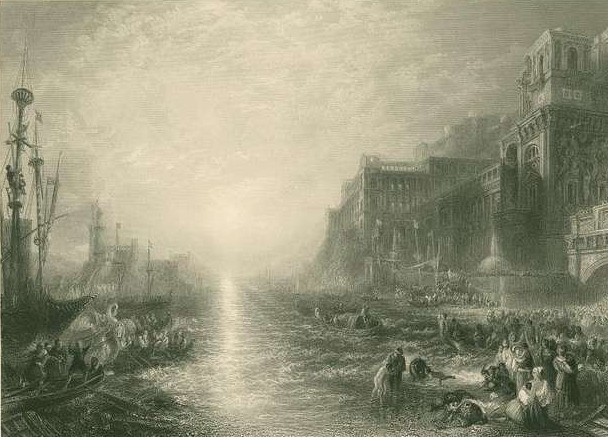
Fifty years of peace. Carthage pays indemnities, which seemed to the Romans themselves simply unaffordable. He is still rich and dangerous. Having violated the terms of the treaty, the Carthaginians rebuff the official ally of Rome, a certain Libyan tribe. The thought of Cato the Elder, «Carthage Dilindum Essay -“ Carthage must be destroyed», repeated at the Senate meeting, now acquires energy and flesh. The third Punic War begins. Legionnaires disembarking in Africa lay siege to the capital of the African and Asian empires. Three years later, the civilization of the Pun-Phoenicians-Canaanites ceases to exist on the physical plane.
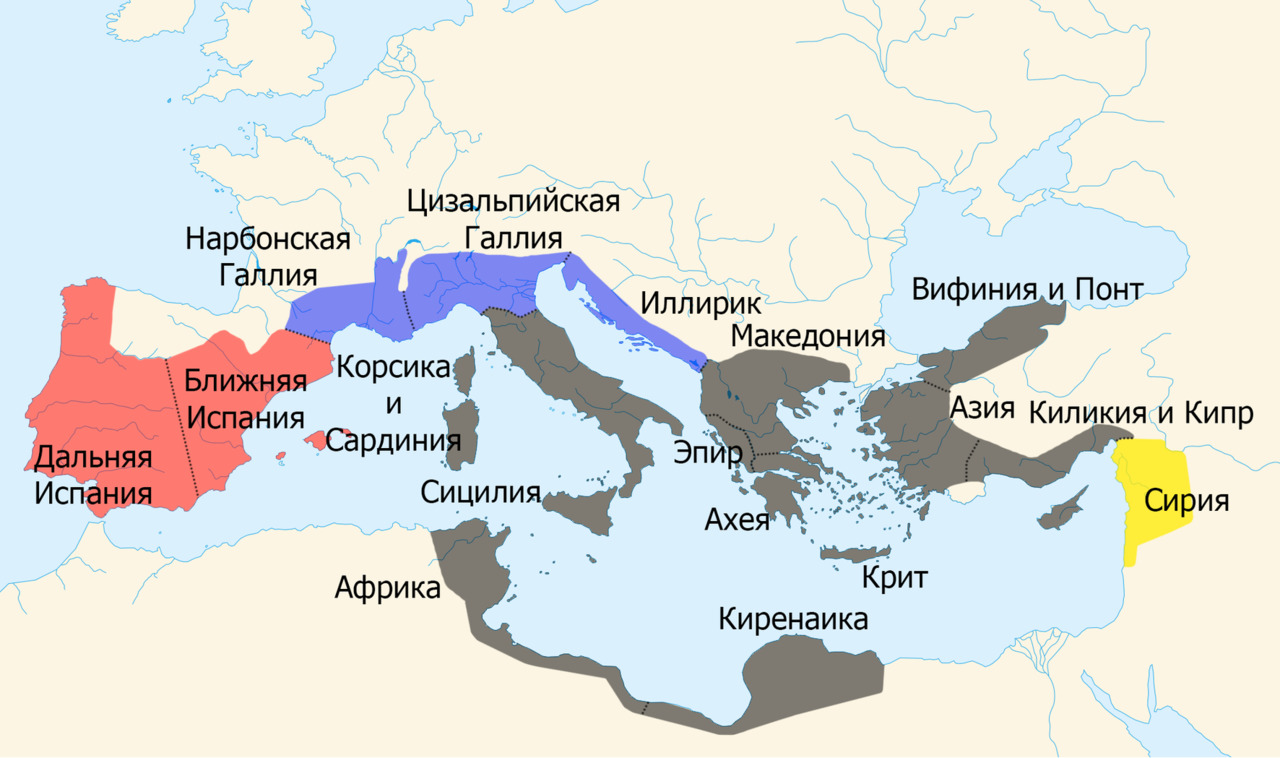
…The Roman Republic is experiencing the tyrannies of Sulla and Gaius Maria, who almost became kings, with difficulty reflecting the large-scale invasion of the Gauls and Teutons. Only by calling in troops from the provinces, the Romans suppress the uprising of the gladiators led by Spartacus. Ten years after the suppression of this rebellion, the Caesar-Pompey-Crassus triumvirate is formed. Dreaming no longer of money (he has it), but of military glory Crassus with four legions perishes in Parthia, (modern Iran and Turkmenistan) formed from the Seleucid state.
Fifty years BC e. An all-out war of the Romans under the leadership of Guy Julius Caesar against the Gauls begins throughout the territory of modern France. There is a brief invasion of Britain. With the death of the wife of Gnaeus Pompey (the Great), daughter of Caesar, the family ties between the Roman consuls disappear. The ambitious Gaius Julius crosses the Rubicon River (not alone, but with legions of hardened loyal soldiers) and captures Rome. The Civil War, which broke out on all sides of the world, takes away at least a quarter of the Roman male citizens. The loser of everything, Pompey tries to find refuge in Egypt, but dies off the coast of the Mediterranean Sea at the hands of a traitor.
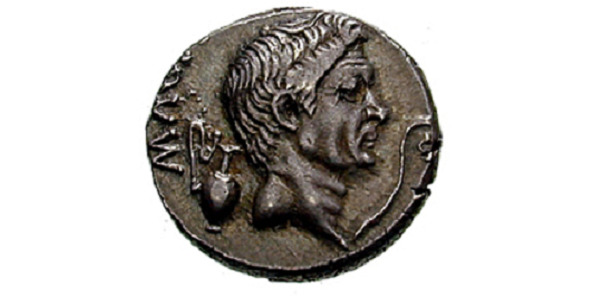
Caesar starts an affair with the heiress of the pharaohs, the Egyptian queen Cleopatra, which, in the end, leads to the inclusion of Egypt in the structure of the not republican, but not yet imperial Rome.
…Gaius Julius Caesar, dictator, great pontiff (literally «Builder of bridges»), high priest, willingly or unwillingly, the founder of the famous title Caesar — Ksar — King. A representative of the patrician estate, beloved by ordinary people (including soldiers). It is not known for sure whether Gaius Julius was involved in suppressing the uprising of the world’s most famous gladiator Spartacus. At this time, he, the military tribune, prepares new recruits. From 63 BC — thanks to his popularity and big money, the young Caesar becomes the Great Pontiff. From 58 BC the Gallic War starts. In something more like genocide, a million Gauls die. Ten years later, Caesar and his ambitions are against the Republic. Four years of the Civil War culminate in the Battle of Munda (Spain), the hardest of all that Caesar fought. This time, 30,000 rebel supporters of the republican system are killed. The dictator first triumphs after the victory of the Romans over the Romans, which is considered not comme il faut. In the same year, for the first time, an image of a living person appears on coins — of course, Caesar.
A year later, Gaius Julius Caesar, already dreaming of an invasion of Arabia, is killed by conspirators, led by Mark Brutus, possibly the illegitimate son of the dictator. At the stake of judges’ chairs and benches, the body of the beloved dictator burns the people. After the fiery speech of Gaius Julius’ comrade-in-arms, Mark Antony, here, over the ashes, the Civil War in the bleeding country breaks out with renewed vigor.
Ancient israel
The first Hebrew tribes, in the manner described in the Bible, or in some other way, appear in the territory with the general name Canaan forty-two centuries ago. This is followed by a series of periods of assimilation or isolation of the Jews among other nations.
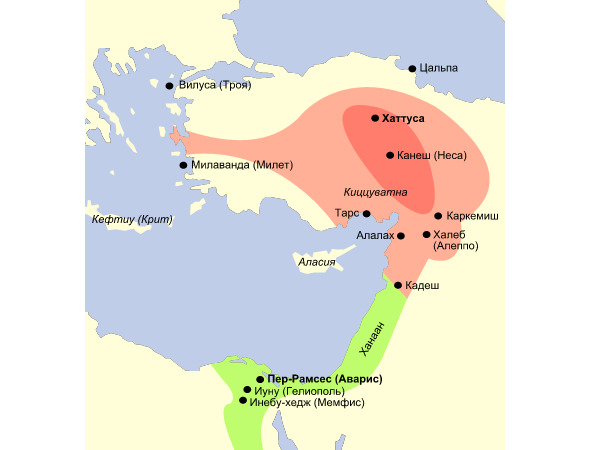
The Epoch of Judges, interpreters of the law, lasts three hundred years, marked, at the end, by a certain decline in morals. The last of the Judges, Samuel creates a kind of school of prophets who speak the truth to the rulers in the face, not caring about the consequences. He anoints the kingdom of the chosen one of God, Saul. His successor, the shepherd David, who ascended to the very pinnacle of power because of his decisive disposition, has the capital in Jerusalem. Having finally dealt with the Ammonites, Philistines and other tribes that have inhabited Canaan since ancient times, he created a mono-ethnic Jewish state. The son of David, Solomon erects the First Temple — the only legal place for God to serve among the Jews. After the death of the king, the country is divided into Israel with the capital Samaria, where ten tribes of Jews find shelter and Judea with the center of power — Jerusalem.
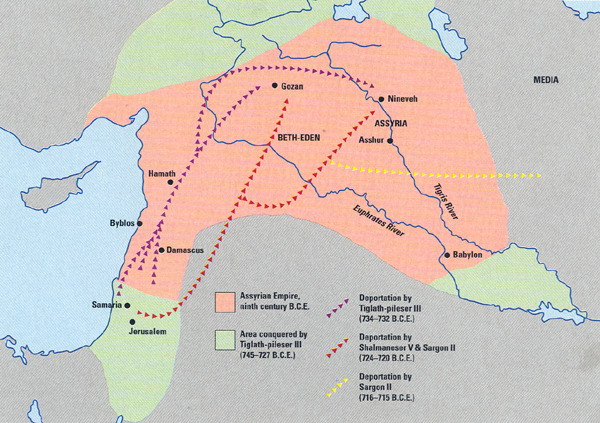
Seven centuries BC. The first superpower of antiquity, Assyria, turns Israel into a scorched desert. Ten of the twelve tribes are taken prisoner by the invaders. Their traces are lost. Later, Judea, which remained aloof from the battle, includes Babylon into its empire. Residents are taken away into slavery. After some time, thanks to the beloved wife of King Esther, the Babylonians declare them equal and allow them to return to their historical homeland. The liberated Jews build the Second Temple on the ruins of the First Sanctuary. Another one and a half centuries of relative peace and Judea falls under the control of the Greek dynasty of the Ptolemaic-Seleucids. The uprisings directed by the Hasmonean clan and the branch of Maccabees emanating from it (a nickname that has become a household name for the implacable defenders of the faith), dissatisfied with Hellenization, make the Hasmonean kingdom quite independent. But internecine wars break out. To resolve all issues, as an arbitrator, the Jews call on the great Wrath Pompey. All this ends with the fact that the Roman commander includes Judea in the structure of his Republic.
In the sixty-sixth year A.D. The First Jewish Revolt breaks out. The emperors of Rome, father and son, Titus and Vespasian, are systematically carrying out reprisals against the rebels. In Jerusalem, six hundred thousand inhabitants perish from hunger, in internecine massacres and at the hands of legionnaires. Another fifty years of dull discontent and under the Emperor Trajan follows the Second Uprising. As a result, the Romans destroyed Jerusalem and founded the Hellenized city of Aelia Capitolina in its place.
Fifteen years later, during the reign of Emperor Hadrian, who forbade circumcision so important for the Jews, the rebellion of Shimon Bar-Kokhba breaks out. The Iron Legions capture the last stronghold of the rebels — the mountain fortress of Betar. Judea completely loses its autonomy. The surviving 30% of its inhabitants are settled throughout the Ecumene.
Ancient China
A new colorful smear in our head — China, two hundred years BC. After the death of the great and terrible Emperor Shih Huang Ti, Confucianism (the school of learned scribes) was revived in the new Han Empire, a philosophy that still replaces the Celestial Empire.
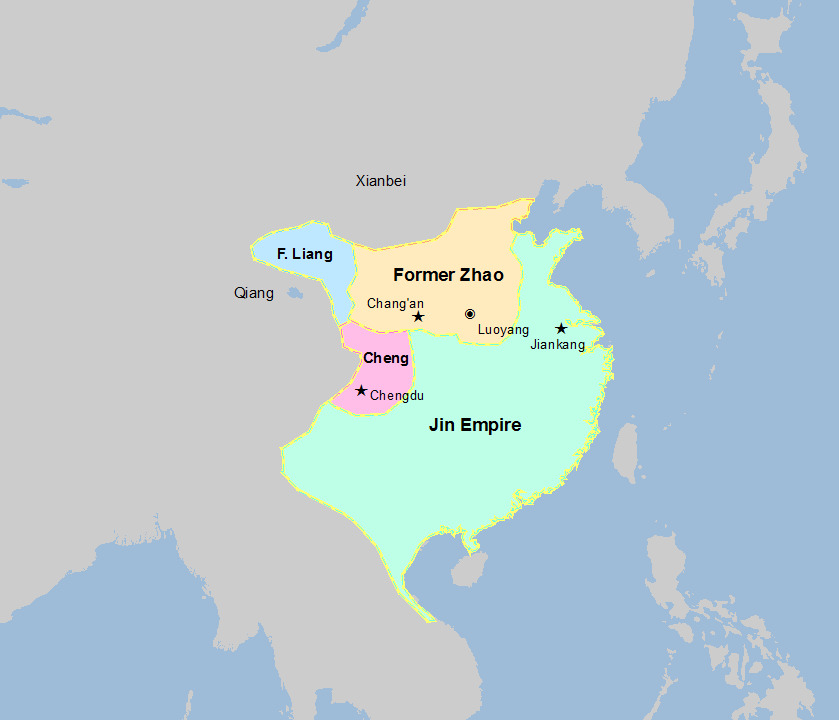
Han ruled for six hundred years. It is replaced by the Jin dynasty. In the fourth century A.D. e. North China is invaded by the Huns. For two centuries, the most powerful Chinese gene pool turns aliens into true Chinese. The next dynasty restores the state as if nothing had happened.
A new series of wars, enlargements, fragmentation of kingdoms, leads to the emergence of the great, flourishing Tang Empire (636—907) in the east of modern China. This dynasty controls part of Central Asia, Sogdiana, the territory of present-day Tajikistan, Turkmenistan and Uzbekistan. A native of one of the regions, the border governor in the service of the Yellow Emperor An Lushan convinces the monarch to replace the officers of the titular nation at the court with mercenaries from the steppe personally loyal to the Sogdian. The further course of events is not so difficult to predict. An Lushan almost without hindrance, using the resources of a huge state, forms an army tied only to him. When the masks are thrown off, the indigenous Chinese can only shrug their hands sadly. The insidious alien makes a trip to the capital Chang’an (now the provincial Xi’an, the location of the famous Shi Huang Terracotta Army).
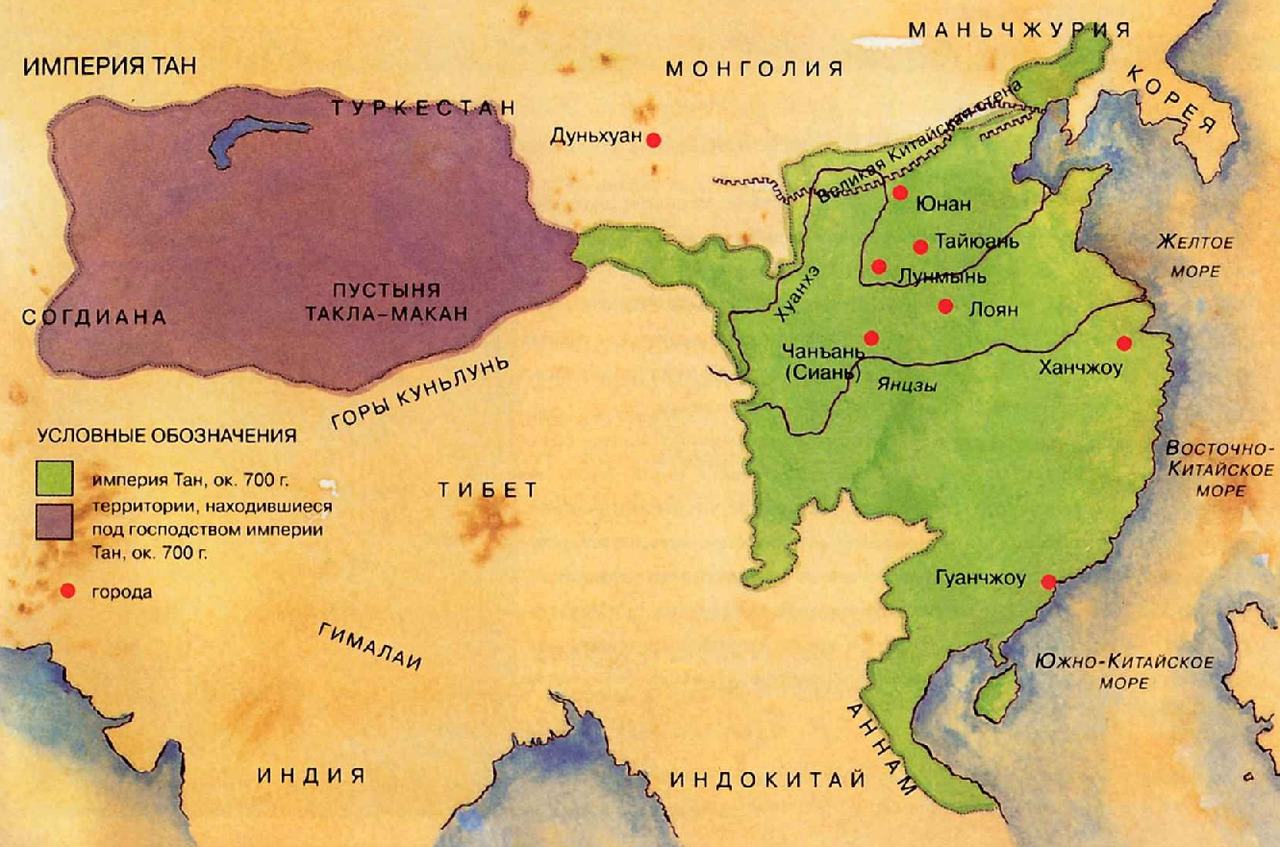
There should be a whirlwind of wars of all against all, for the state, the emperor, your family and just food. Women and children become soldiers or simply murderers. The greatest city with a population of millions, reminiscent of a chessboard stretching beyond the horizon, Chang’an is turning into a heap of ruins. Look! All roads and shoulders are littered with corpses. This water in lakes and rivers retains its purple color for months. Don’t try to quench your thirst with it. According to census takers and tax collectors, 50 million China is losing 36 million of its inhabitants. Perhaps a significant part of them do not die, but move to other areas. However, the An Lushan uprising is considered the largest post-WWII armed conflict in history in terms of casualties.
During the Song dynasty, in the twelfth century, China was invaded by the Manchu Jurchen tribe. The Celestial Empire is entering a new round of assimilation. At the beginning of the thirteenth century, a 300,000-strong army of even more brutal invaders invades from the North. With each new campaign, the Mongols of Genghis Khan are advancing more and more south. Trying to fight back, the Chinese widely use multiply-charged crossbows, powder charges, missiles, and primitive artillery. Millions of people die in fire and smoke. The capital of the Celestial Empire Zhongda — modern Beijing surrenders in 1264. 16 years later, the whole of China falls under the hooves of Mongolian horses. The grandson of Genghis Khan, Kublai Khan, proclaims the creation of the Yuan dynasty in the Great Yuan State. At the same time, four Mongol ulus left the single rule of the Horde.
Mongol expeditions to Japan and Vietnam have not met with much success. In the first case, this happens due to irresistible external reasons — «divine wind». In the second, because of the desperate resistance of the Vietnamese. Ciao paper banknotes are being massively introduced. Paper innovation is not always a sign of progress. The Chinese economy is in a fever. Most of the Chinese become slaves, in the Mongolian dialect, arats (commoners). Craftsmen even lose their craft skills. Agriculture and trade are declining. The complex irrigation system ceases to function.
In the middle of the fourteenth century, the secret organization «White Lotus» organizes its people for a decisive struggle against the invaders. Having tasted the taste of their own blood, the Mongols leave to the north, to the familiar steppes. One of the leaders of the uprising comes to power — the son of a simple peasant Zhu Yuanzhang. This man founds no less, a new Ming dynasty. The era begun by the successful son of a farmer is marked by the flourishing of science, crafts and shipping. Authorities organize an ocean expedition led by Admiral Zheng He. The «Golden Fleet» consists of 40—60 Baochuan «treasure ships», 117 meters long, 48 wide, and 200 escort ships. The number of the expedition is 28 thousand people.
The huge Chinese fleet makes seven long-distance voyages. But the composition and views of the ruling dynasty suddenly change. Orders are coming from Beijing: burn all ships, destroy expedition reports. China is adopting a strictly isolationist policy.
Meanwhile, the Jurchens from South Manchuria recall their military past. Initially, they stop paying tribute to central China. Then the nomads unite with Inner Mongolia and organize massive raids on the metropolis. Moving south and west, in 1683 the former vassals seize the last stronghold of the resistance of the Celestial Empire — the island of Taiwan. Now China is named after the Manchu dynasty itself — Qing. The aliens are trying to prevent mixed marriages. But they do not oppose their culture to the local, and everything, as quickly as always before, turns into Chinese. By the early nineteenth century, the Qing population was 300 million.
Chinese goods are in great demand in Europe. However, the Chinese accept only silver, gold, Russian furs and Venetian glass as payment. This approach does not suit the British, who are importing a new popular product from India into the Celestial Empire — opium. Dried in the sun, the milky juice of unripe opium poppy capsules contains morphine, codeine, narcotine. By 1830, sales reach 1,500 tons per year. It’s a lot. 35% of the Qing population becomes drug addicts. The Chinese emperor prohibits this simple happiness. In response, the Yellow Empire is attacked by the main drug dealer — Great Britain. China loses this war, pays an indemnity and hands over the island of Hong Kong to the winners, formally on a 99-year lease.
In 1851, the Taiping rebellion took place. The Chinese Christian Hong Xiutsuan became the organizer of the large-scale riot. The main idea of this Chinese dreamer is the expulsion of the Manchus and, note, the founding of the Taiping Heavenly Kingdom. The million-strong Taiping army is distinguished by discipline, a humane attitude towards the population, and the absence of robberies. A community of 25 families is becoming the cell of society in the territories occupied by Chinese Christians. Hierarchies and estates are to be liquidated.
After twelve years of confrontation, marked by the emergence of more and more centers of the Civil War, the Second Opium War takes place. Everything is proceeding according to the same scenario, with the same sad result for China.
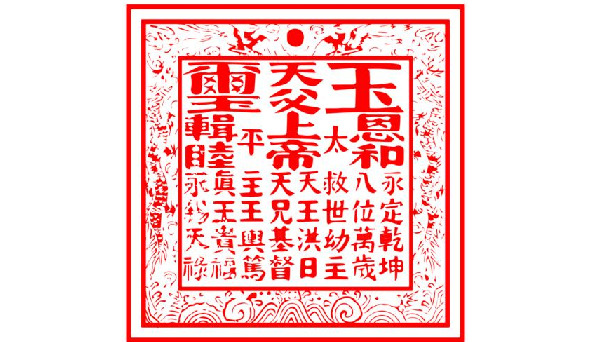
Hong Xiuquan, from the very beginning of the great Liberation campaign, departs from practical matters and indulges in meditation. Its commanders continue a fierce struggle, including among themselves. Considering Europeans as brothers in faith, the Taipings cannot understand why the British and French turned against their new relatives. The Heavenly Kingdom Army strictly prohibits smoking opium and, in addition, destroys everything associated with Buddhism, Confucianism and Taoism. Things are getting worse. The besieged capital of the Taiping, Nanjing, disappears into the flames of a majestic conflagration. Hong Xiuquan commits suicide. His son, heir to the throne, ends his young life on the chopping block. The last detachments of the Kingdom of Heaven, after a desperate attempt to storm Beijing, perish almost in full force on August 16, 1868.
During the Taiping uprising, between 20 and 30 million people are separated from their precious lives. The Chinese authorities, to this day, are trying to limit the spread of Christianity. In 1900, during the uprising of the ihetuan (boxers), the adherents of traditional beliefs exterminated almost all the Christians in Beijing (Chinese), seeing them as accomplices of the Europeans. Be that as it may, with or without them, the Celestial Empire is occupied by the forces of Germany, Russia and Japan. The winners receive an indemnity of 450 million lans of silver (the bar weighs 31 grams) and open up conservative China to the world even more fully.
In 1908, the two-year-old Emperor Pu I. ascends the throne of the Yellow Empire. Three years later, the Wuchansk uprising breaks out. The war of all against all leads to the collapse of the Qing Empire and the proclamation of the Republic of China. Tibet and Mongolia are leaving China «in their own way».
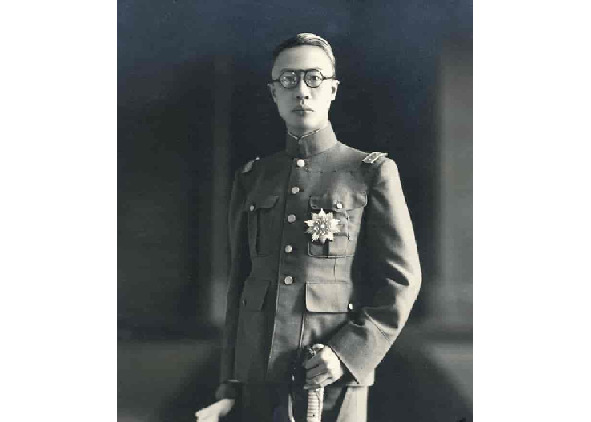
Pu Yi, aka Xundi — «The Forsaken Emperor» — since 1932 has been the ruler of the puppet republic of Manzhou-go, formed by militaristic Japan for its own purposes. In 1945, Pu Yi surrendered to a Soviet airborne assault force near the city of Mukden. For some time, the humble monarch was kept in a Soviet prisoner of war camp near Khabarovsk. He is later allowed to return to China. Here Pu Yi is re-educated according to the system of the Red Emperor, Mao Zedong for nine years, and after that, for the amusement of the entire Communist Party of China, they are given relative freedom. The last emperor watering plants in the Beijing Botanical Garden. Then, like an ordinary archivist, he goes through the books in the National Library
Ancient Rome by Octavian Augustus
…Several decades before the beginning of our era. Two ambitious generals, Octavian Augustus and Mark Antony, divide Rome into Eastern and Western empires.

Mark falls under the spell of the heiress of the Egyptian dynasty of the Ptolemies, Cleopatra, who is not averse to becoming the queen of Rome itself. The emperor gets involved in a war with the Roman Senate and former friend Octavian Augustus. Alternating feasts with military preparations, he misses the blows of the metropolis one after the other and, in the end, ends his colorful life with a blow of the sword. The enchantment of thirty-nine-year-old Cleopatra no longer works on the winner. The heiress of the pharaohs follows the example of Anthony. After her, four children remain. Seventeen-year-old Caesarion, son of Caius Caesar, is killed by order of Augustus. Two twins from Anthony are raised by the sister of the new emperor. We do not know anything about the fate of the fourth.
Emperor Tiberius, stepson and heir to Augustus, was allegedly strangled during an illness by his own grand-nephew and adopted son Caligula.
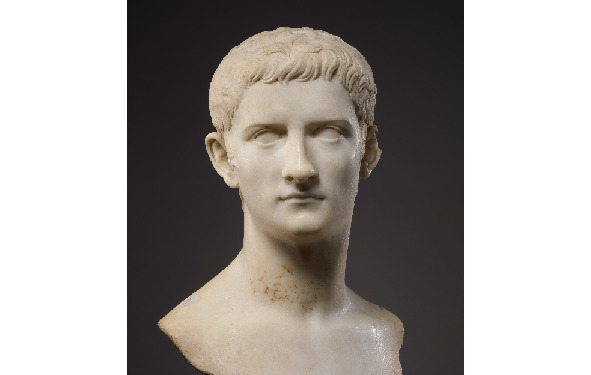
Having ascended to the pinnacle of power, Caligula builds bridges from ships, floating palaces, cracks down on senators — and he is loved by the people for the fact that life in the Empire is at least somewhat different. This emperor, however, was stabbed to death by his own bodyguards. The new ruler, a distant relative of Caligula, Claudius, is remembered by mankind according to Messalina, who has become a household name for an unfaithful and insidious wife. The next wife of Claudius Agrippina, the middle sister of Caligula, already has her son Nero. Her plot succeeds. Native blood, Nero becomes the emperor of Rome. But the mother’s reign over time ceases to appeal. The parent is going to bring to power her own son Claudius and Messalina, the beloved Britannica of the masses. Nero feeds his opponent with poisoned mushrooms in time. The ungrateful son also tries to poison Agrippina, but she in time accepts the invention of the eastern king, Mithridates Eupator, an effective antidote. Unable to drown his mother during a staged shipwreck (in the past, the empress’s hobby is diving for pearls), Nero explicitly orders a naval officer to stab her.
This is the story offered to us by the victorious ill-wishers of the emperor.
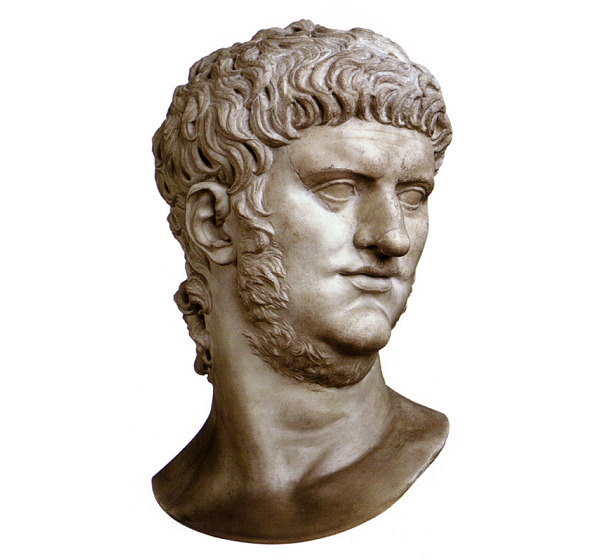
The tax-cutting policy brings the monarch nationwide popularity. But, after the death of Agrippina, the emperor loses his former administrative acumen. The rebuilding of Rome after a fire, the construction of the Golden Palace with an area of one and a half kilometers, gladiatorial fights comparable in scope to full-size battles, digging a canal across the Isthmus of Corinth and constant large-scale orgies drain the treasury. Legions rise in depleted and impatient provinces. One not at all fine morning, Nero does not find any of his guards in his palace. The emperor flees to a country house. Realizing that the sweet life is over, he takes it into account.
After the son of Agrippina, the brutal but sane emperors Titus and his son Vespasian rule. They are inherited by Vespasian’s younger brother, Domitian, (killed by his own servant for the execution of Nero’s assistant in suicide).
After the average Emperor Galba comes the golden autumn of the Empire. Five worthy rulers come to power in a row — Trajan, Adrian, Antoninus Pius, Lucius Verus and Marcus Aurelius. At the end of the time of this galaxy, the era of soldier emperors elected by the Praetorian Guard begins.
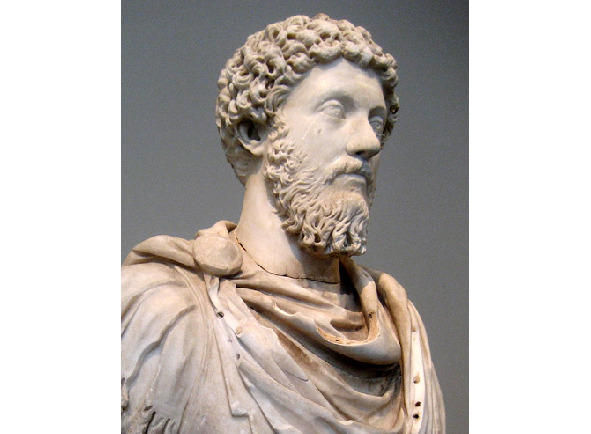
The coming to power in 323 of Constantine the Great marks the transition of the state to Christianity. Forty years later, Emperor Julian (the Apostate) is trying to revive paganism. He encourages the priests of Jupiter to be as godly as Christians. These efforts are in vain. Nobody seriously believes in Jupiter, Mars, Venus, Mithra, Hera and some guides to the afterlife, nums. The last emperor, the young Romulus Augustulus, was sent into exile by the rebellious barbarian commander Odoacer. Little is known about the further fate of Romulus, except that perhaps this boy became a Christian monk. Although Odoacer ruled over the remnants of Western Rome by formal permission from the monarch of the Eastern Empire, AD 476 historians are officially considered the last milestone of Antiquity.
…In the youth of Rome, (5th-2nd century BC), slaves are quite rare. As a rule, they have the status of family members. The second-first centuries BC and the beginning of the new era are marked by a significant increase in the number of prisoners of war. Over time, the ratio of the number of free people to slaves in Italy reaches 2.5: 1, in the provinces 10: 1. The situation of the slaves deteriorates sharply. Nevertheless, they cherish not an illusory hope of raising their status, free literacy, the generic name of the master in addition, and unlimited promotion up the social ladder. At least two emperors of Rome were originally slaves.
The price of a slave in the first century BC is 4—400 denarii, depending on the degree of success of the last war. The daily salary of a legionnaire is 1 denarius, (4 sestertius or 16 aces), including bonuses. For this amount, you can buy 20 loaves of bread of your choice, 4 liters of regular or a liter of fine Falernian wine. If we count in terms of gold, the price of which remains unchanged as an opportunity to acquire basic material goods, a soldier earns 40 thousand rubles a month.
Gladiator games last until the reign of the last ruler of the Empire — Flavius Theodosius (370—395). The institution of slavery comes to naught with a general softening of morals, as well as at the behest of lawyers, who usually take the side of the oppressed. Serfdom is taking over the baton of this phenomenon. Emperor Diocletian (284—305) issues a law attaching peasants — both tenants and owners of land, as well as artisans to their place of residence, or to a profession inherited by inheritance.
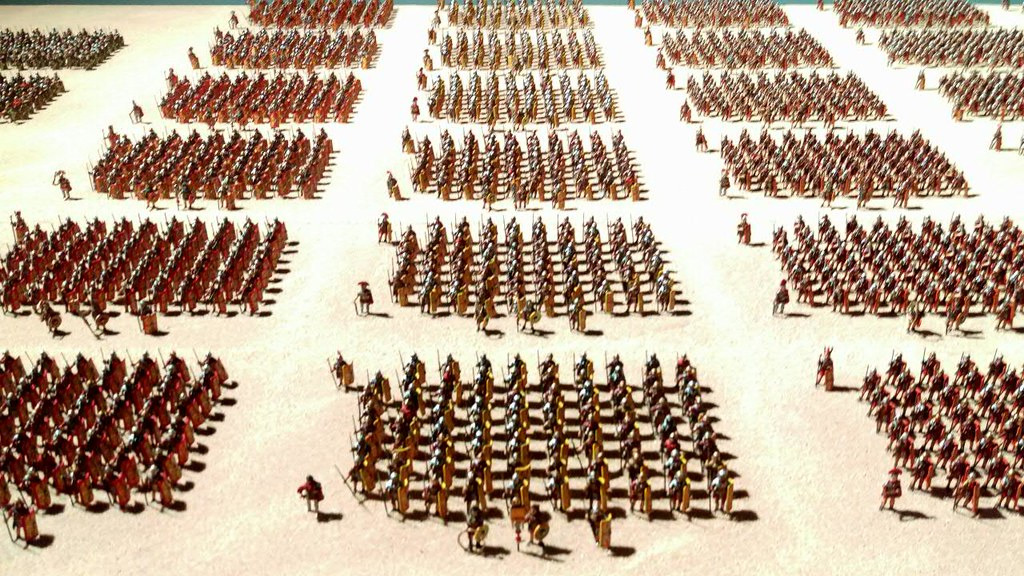
…The Roman legion (legionis — military collection) consists of 5—7 thousand, later 4.5 thousand infantry and auxiliary units. Heavy cavalry (equits) — 300 people. Archers — 200 people. The latter act from the flanks, firing arrows along the line of raised shields. Velites — «Swift» — irregular infantry, recruited from local allied tribes or young legionnaires. Armament — a round shield with a diameter of 90 cm, a helmet, several darts «gasta velitaris», 120 cm long and a short, 50 cm. Roman sword — «gladius». In a free formation, dodging projectiles by jumping, the velites throw spears at the enemy and retreat behind the ranks of the heavily armed infantry.
The first line of the legion lined up for battle is the ghastats (spearmen), warriors 20—25 years old, who really need combat experience. Armament — chain mail, or, in the era of the Empire — plate armor, rectangular shield scutum, gladius and two one and a half meter darts — pilum.
The second line is the principles («First»). These are warriors in their prime, 25—35 years old. They give the young men experience, let the hastats pass between the maniples and continue the fight.
On the third line are the triarii («Third») warriors 40—45 years old, veterans, the reserve of the legion. Among other things, they are armed with long shock spears.
The army is ruled by six tribunes (people’s representatives) and a representative of the clan aristocracy — a legate.
In the era of the Republic, the legion consists of 30 maniples («handful» or «hand»), two centuria («hundred») in each. The centuria has 60 to 120 fighters. The manipulators are united in ten cohorts («enclosure») of 360 legionnaires. One of the cohorts (First) is considered elite and has a doubled membership.
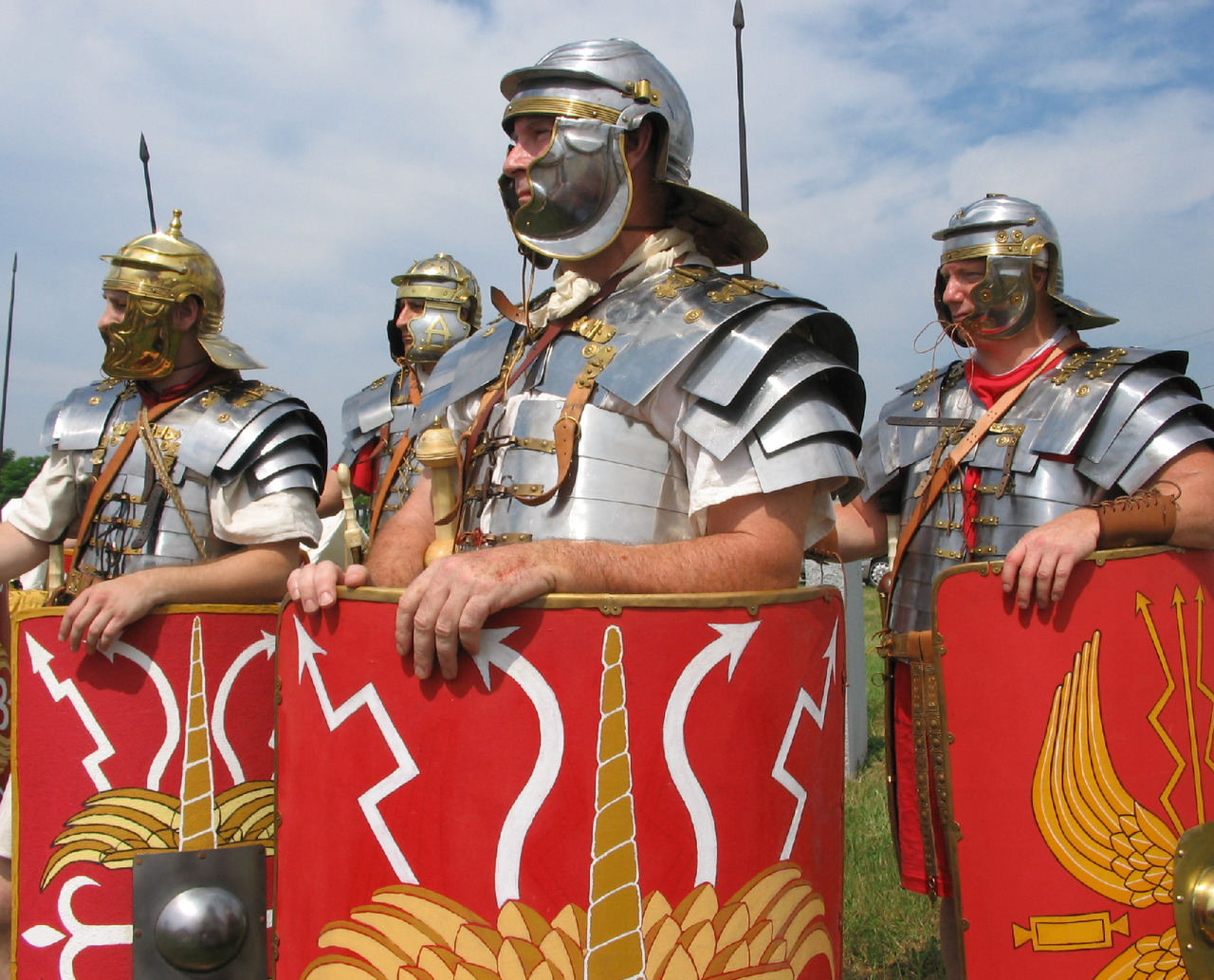
In the days of the Empire, the maniple disappears as a tactical unit. There remains a cohort consisting of 6 centuries.
The legion deployed from the marching column follows to the place of battle with maniples or centuria, located in a checkerboard pattern. This makes it easier to move around rough terrain. Then the squares made up of fighters are rearranged into three solid lines. «Brothers» hurl pilums, sometimes putting the enemy to flight with this one volley, close shields and draw swords.
Ancient Latin America
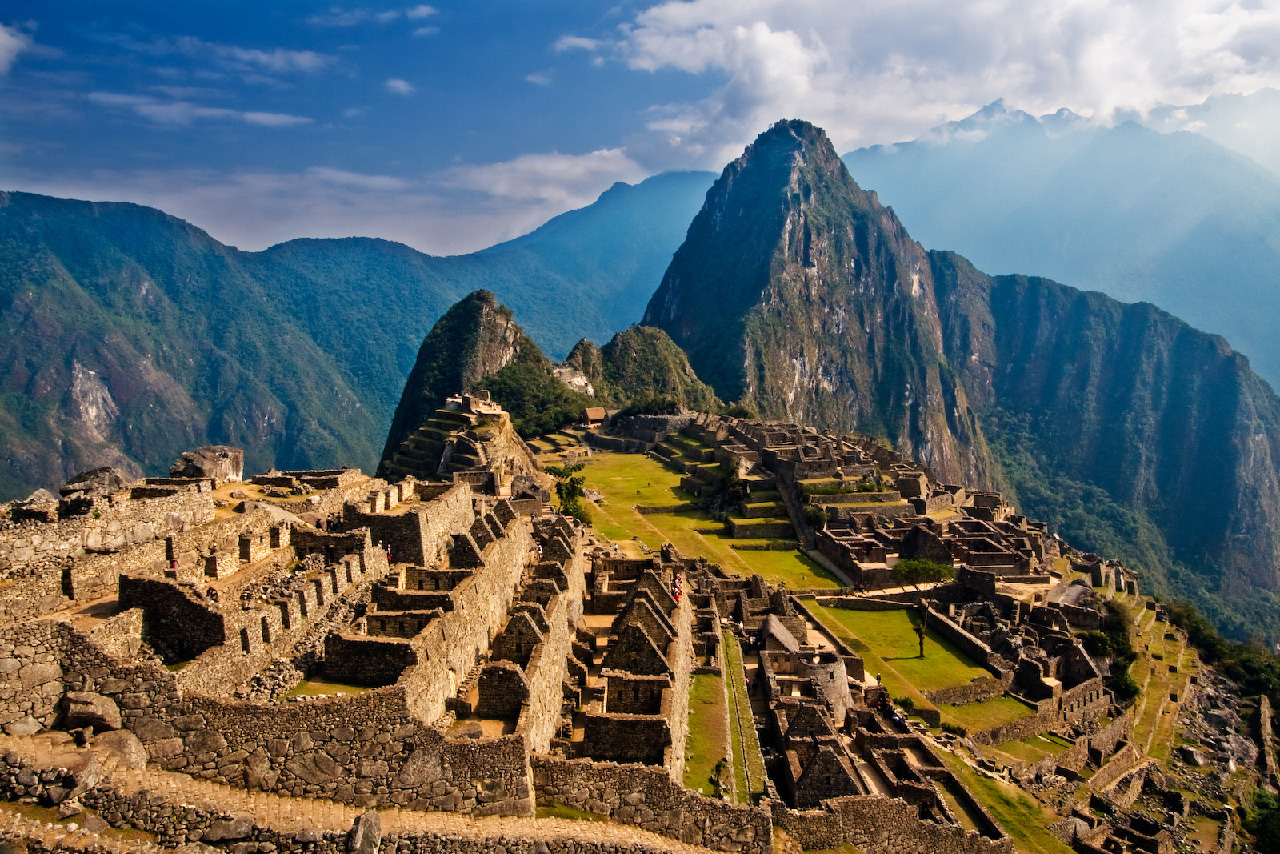
The Incas. State of Tahuantisuyu. The western coast of South America, starting from the northern territories of modern Chile and Colombia. Another smear in memory — one thousand two hundred years BC. — the first ruler of Manco Capaca. The last, who led the revolt against the Spaniards, the Great Indian — Tupac Omaru (1570—1572).
There is no monetary system. The benefits are distributed according to the order established by the leader.
Aztecs. The self-name of the people is Meshika, hence the well-known toponym «Mexico». These Indians are to the south of Mexico from the north, in the thirteenth century AD. e. The Aztecs rebuild the city of Tenochtitlan, the future Mexico City on an island in the middle of a lake, and in a short time become the rulers of local tribes. But in 1519 the Aztecs meet even more ambitious Spaniards. After just six years, the huge, by the standards of Europe in the Middle Ages, the Aztec empire ceases to exist. Presumably, by this time the Indians were already 95% mowed down by smallpox and chickenpox, introduced by Columbus in 1492, and spread to both continents. The world, equal in culture to Ancient Egypt during its heyday, moves into the realm of legends.
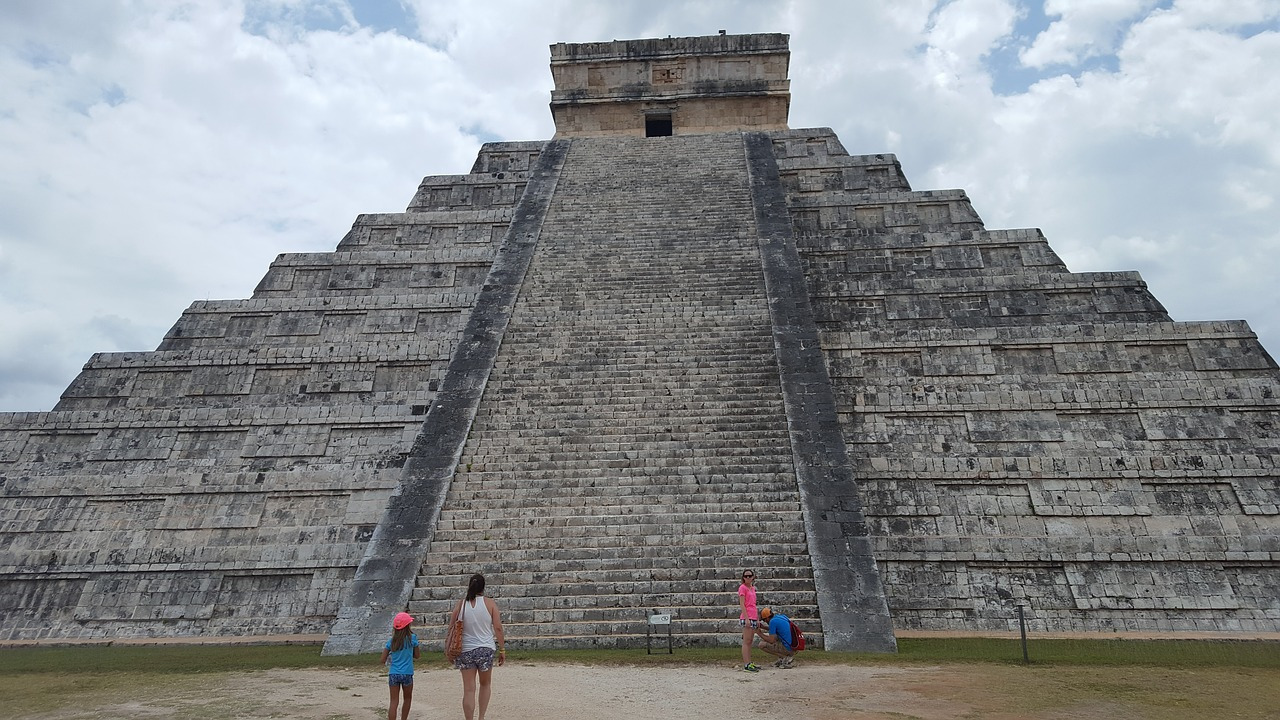
For a warrior and a priest, it is considered permissible to write poetry. Let's listen to excerpts from the author's hymns of the Aztecs:
May our land be forever!
Yes, the mountains are indestructible!
So says Ayokuan Kuezpaltsin
Here in Tlaxcale, in Huesocinco
Let them feed everyone without exception
And ruddy maize and cocoa
May the Earth be forever!
(A. Kuezpaltsyn)
We got drunk in Michuacan
We were called to a feast, we went for the booty
We came and were completely drunk from the fight
…And they saw how our soldiers fled
How the gold quivered and the quetzal feather banners faded
If only the soldiers did not become prisoners
Hurry up — so that this does not happen to you
If the young warriors become prisoners.
They will be sacrificed, condemned to the slaughter
If this happens, what are we going to do?
We will growl as fierce as jaguars
We, the eagles, the old men, will call the eagles
Avoid captivity, fear the slaughter
Hurry up — so that this does not happen to you!
(«Song of the Old Men», by the warrior Aishakatl)
Mayan.
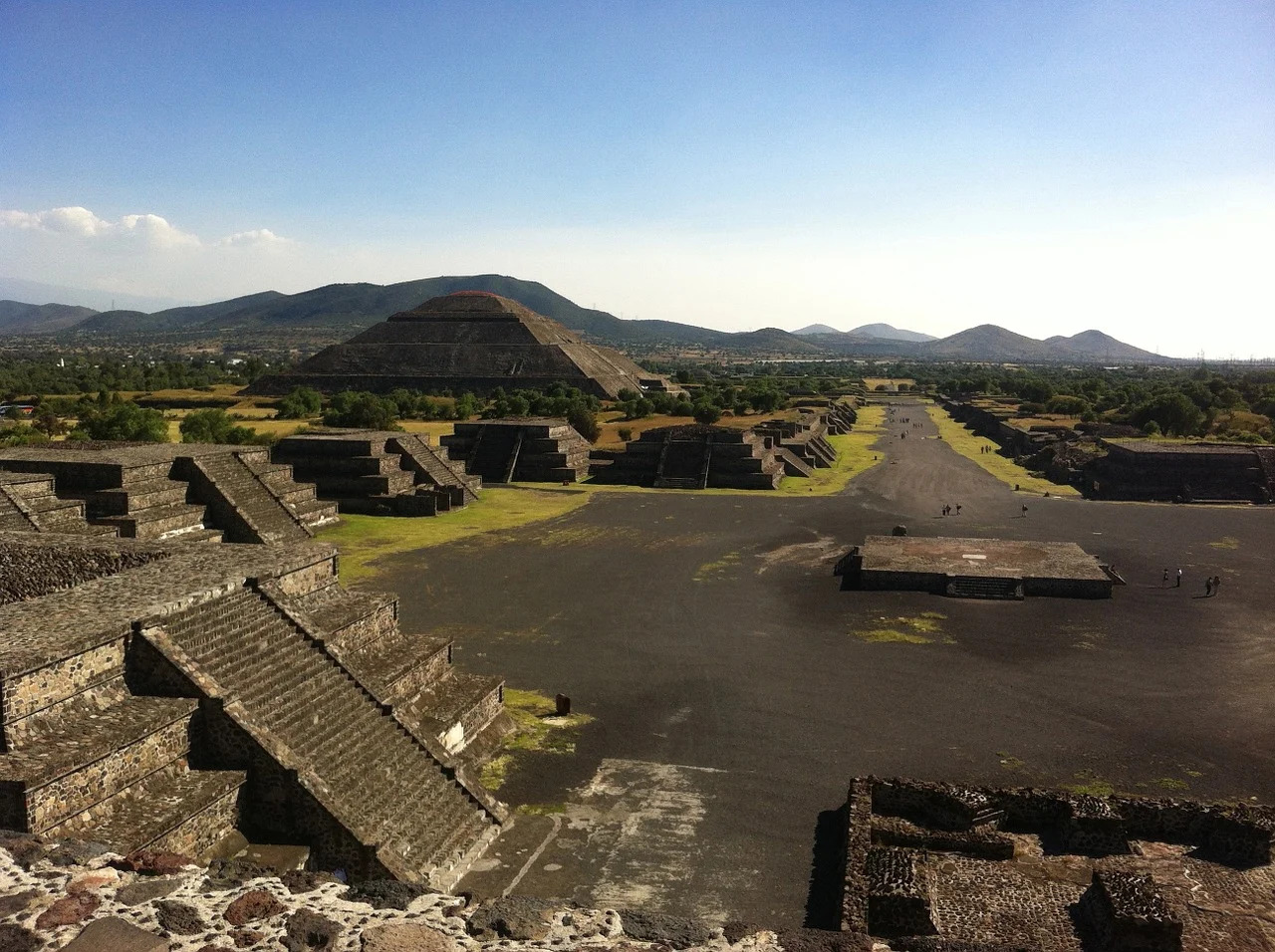
The territory of the legendary founders of Mesoamerica is located somewhat south of the future possessions of the Aztecs. Scientists deduce the beginning of civilization as a thousand years BC. e. By the ninth century A.D. Mayan culture is in decline. The reason, according to the conclusion of paleogeologists, is a long-term drought caused by a change in ocean currents. The inhabitants of the country simply disappear. They leave behind magnificent pyramids, a complex irrigation system and a calendar.
Overview of World Religions
Mohammed. The beginnings of Islam. End of Antiquity. Mohammed is born on April 20, 571, in Mecca (Saudi Arabia), in the influential tribe of the Courshaites. At twenty-five, he marries a forty-year-old Khadija, is engaged in trade, escorting caravans and building (repairing the Kaaba). From the age of forty, almost every evening, Mohammed ascends a mountain near Mecca, where he prays in a cave that has survived to this day.
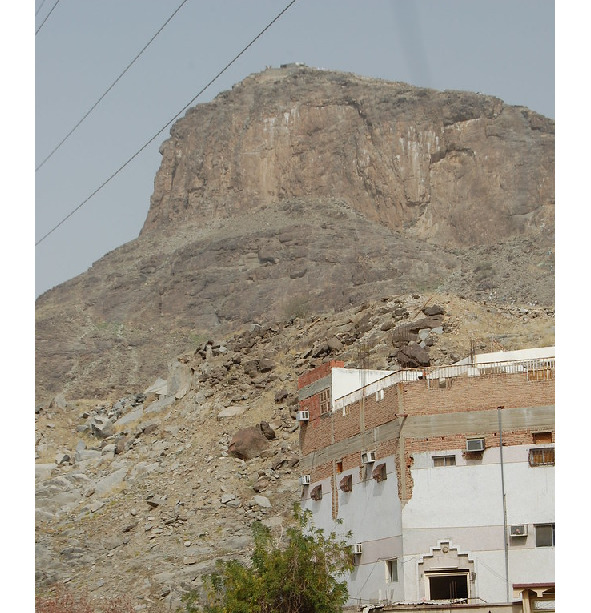
His insights will later be translated into lines of the Qur’an. Islam («submission to God») is accepted by a wife and several relatives. The new faith is woven from the writings of the Tanakh, the Gospel, Arabic legends, in the arrangement of Mohammed. The first sermon at the sacred Kaaba causes only ridicule among the crowd. Then Mohammed finds the right words and the situation is straightened out. Over the next three years, about a hundred people are recruited into the community. After the death of his uncle, the influential Abu Talib, the Islamists are ousted from Mecca. The community moves to the city of Medina, where it endures many difficulties (seven to eight dates per person per day of work). At the same time, raids on trade caravans and the struggle to spread the faith begin. Muslims lose the first battles. However, their perseverance bears fruit, and the army of Mohammed enters Mecca without a fight. A series of wars to unite the Arab tribes followed, raids on Byzantium were made. During the capture of one of the cities, in order to avoid the use of wine by the warriors, a sura is accepted, prohibiting alcohol.
Mohammed dies in Medina. His body finds rest in the Central Mosque.
Any worthy Muslim who knows the Koran well, regardless of his social status, can be the Imam (the leader of the common prayer). Imams are often teachers (mentors), business intercessors, and drafters.
For Shiites, only the blood heirs of the Prophet’s cousin and son-in-law can have an imam (supreme imam) who has the right to interpret the Qur’an and guide believers. «Small imams», that is, in the Sunni tradition, fakikhs (people who have a special theological education for serving in a mosque) are appointed imams. Succession law and appointment instead of elections is practiced primarily in Iraq and Iran.
The division of Muslims into Shiites and Sunnis occurs when the exclusive right to power of the Prophet’s son-in-law (married to Mohammed’s daughter Fatima), Ali Talib, is challenged by another imam. The battle ends with a truce, but after Ali, the first man to convert to Islam, is still killed. Muslims who believe that power in the Caliphate can belong only to the descendants of Ali Talib (Alidam) — Shiites, those who recognize any chosen Muslim as worthy of it are Sunnis. Shiites believe that among their midst is Imam Muhammad, who once disappeared under unexplained circumstances. He watches over people and prepares to become the new messiah.
The aggravation of the struggle between the two branches of Islam occurs during the rise of the Ottoman Empire. The Sultan needs a good reason to attack one of the Muslim countries. Until then, the differences between Shiites and Sunnis were considered insignificant.
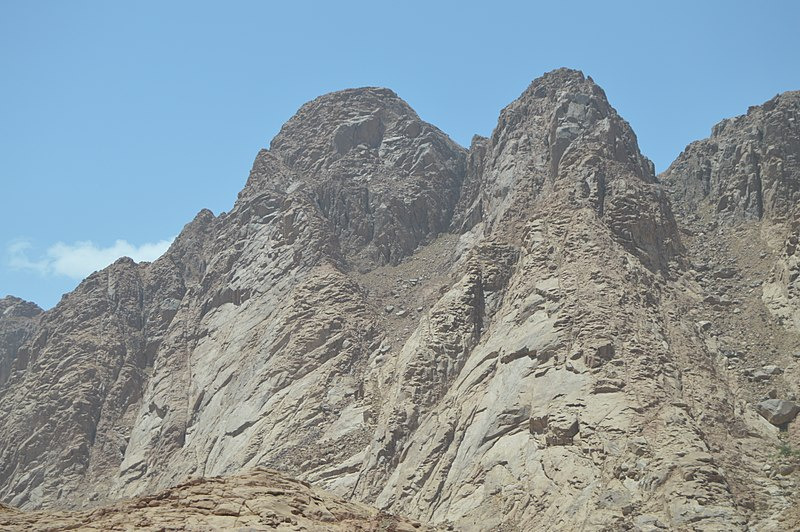
The idea of Islam is one God (Allah). The difference from Christianity is not the acceptance of the principle of the Trinity of God, in the Father, Son and Holy Spirit. In addition, Muslims assume that Issa (Jesus) did not die on the Cross to atone for the sins of mankind, but… then follows a complex story of how He escaped this. Meanwhile, the idea of Christianity is precisely earthly life, as a result of which God the Father exchanges with people a sufficiently understandable revelation.
The Qur’an depicts a paradise full of carnal pleasures for men. Women are from among the former spouses, as well as virginal houris who appear in the morning every time. The buildings are built of golden bricks. Paradise has several levels. The upper level is the Firdaus garden. Above is only the Throne of Allah.
Some Muslim theologians believe that all of these descriptions reflect the concept of paradise at the level of modern concepts.
All this is not in the Christian Eden. «The Revelation of John the Evangelist» represents the City of God, New Jerusalem, Cube, with a side of 2400 kilometers. However, the Apocalypse is considered by some theologians to be an apocryphal — a work on a biblical theme, not recognized by the Church.
The third world religion is Judaism. The Old Testament is the forerunner of the Gospel. This religious principle does not imply any intelligible afterlife. The Old Testament eschews the ideas of the journey of a weightless soul and proclaims the extension of a person’s life in his fleshly children.
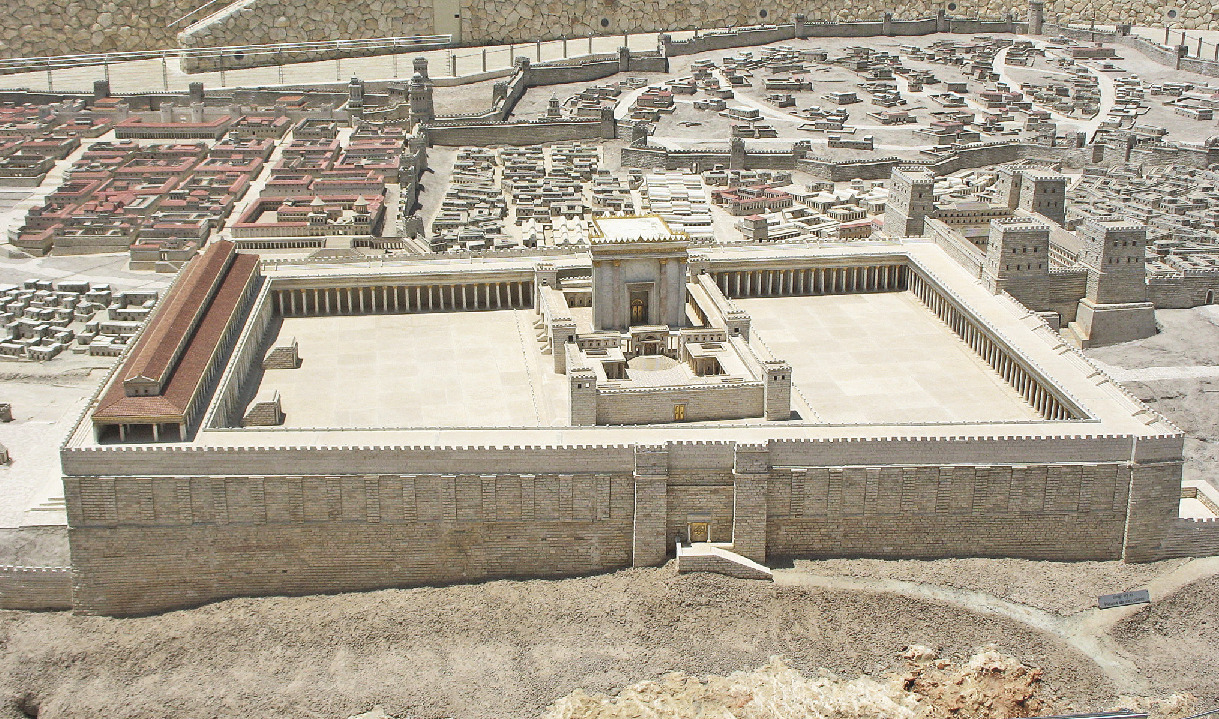
Protestant churches (temples), despite their influence (USA, England, the total number of parishioners is 800 million), as a rule, do not differ in rich decoration. There is no veneration of icons. A church building can be any public building. In the altar there is a table stretched across the hall, with the books of the Old and New Testaments and lamps. Here the priest preaches, conducts liturgy, communion and baptism. The ordinances presented are the only ones recognized by this denomination. Much attention is paid to solving the secular problems of parishioners, unraveling family conflicts, etc. (faith without works is dead). Protestants are not in some kind of confrontation with Judaism, like the Orthodox and Catholics. Moreover, they view the state of Israel as an important field of God’s activity until the second coming of Christ.
The priest is chosen from among the respected parishioners and can be easily removed. There is no apostolic succession (ordination through ordination, i.e. ordination).
Confucianism in the Chinese language is called Pinyin, «School of educated people», and does not contain the nickname of the founder, philosopher and politician Kun-Fu-tzu. The real name of the «Teacher from the Kun clan» is Chzhun-ni. Confucius was born in the 6th century BC. e. The texts of the mentor of the nation, rewritten several times, contain descriptions of the rites of worship of ancestors, temples created in their honor, moralizing, the history of a fictional ideal country. The sky is seen as a source of moral meanings, a resonator that responds to the behavior of people and sends them the necessary signs. In a sense, Confucianism coincides with the Chinese folk religion, also Pinyin, with 500 million followers. In this belief, in addition to Heaven, the world energy Qi is important, as well as the souls of ancestors, with whom, if certain conditions are met, a connection can be established.
Hinduism is popular in many European countries and the United States as an unusual course of psychotherapy, but it is still localized in its native India. The complex of philosophical ideas, ethical norms, traditions is called Sanatana-Dharma («Eternal Law»). Sacred texts — Vedas, Upanishads, epics Ramayana and Mahabharata, like a set of books of the Old Testament in many ways, although much less realistic, reflect the history of the formation of India. The Supreme God of Hinduism can define the concept of Brahman (originally — «Prayer»), the soul of the world, the fundamental principle of things. He can be worshiped in any conceivable form. Supporters of Vaishnavism serve the Absolute in the avatar of Vishnu, the Guardian of the Universe, as well as more human-like reflections — Krishna and Rama. Shivaites worship Shiva, the static male principle of the Universe, the creator of rebirth, sometimes very destructive. The general meaning of service is merging with the Absolute, while preserving the individual principle, improving the personal position, including the material one, at each rebirth. Brahma (Brahma) is the god of creation, the first among equals, together with Shiva and Vishnu constitutes Trimurti (triad), the spiritual principle of Everything — Brahman.
Buddhism claims to be a world religion, a controversial, but all the more exciting continuation of Hinduism. The founder of the teaching is Buddha Shakyamuni, in Sanskrit «Awakened Sage» (623 — 543 BC). There are several Buddhas before Shakyamuni, but he is the most famous. The coming awakened Teacher, under whose guidance people will lead a holy life — Maitreya («Benevolent»). The main idea is non-resistance to evil by violence, passive resistance to adversity, acceptance of the world as it is. As a result of this behavior, a higher rational being (that is, a Buddhist monk) must get out of the captivity of consciousness, which created such a mosaic image of him. Buddhism does not imply any gods, One Mind, Paradise, Hell as a natural area of attraction for a religious ascetic. The only goal is the «fading out of the candle» of self-awareness.
Shamanism, although not a world religion, was once widespread throughout the Earth. Now this belief system is localized in some tribes of South and North America, Africa, Southeast Asia, Siberia and the Far East. The shaman enters himself into a trance by striking a tambourine, dancing, singing, and lies for a long time, not responding to external influences. In a disturbing dream, traveling along the branches or roots of the archetypal World Tree, he visits the middle, higher, or lower worlds. The higher worlds are inhabited by enlightened beings, the lower ones — by aggressive creatures. The schemes of otherworldly worlds are individual, therefore they cannot be reduced to a picture acceptable for the creation of classical religion.
One of the varieties of shamanism is voodoo. The main provisions of the belief — the world is inhabited by many spirits, loa (from the French loi — «law»). You can contact them and get some kind of help. Sacrifices are laid out on the altar, which has a somewhat unkempt appearance. These are sweets, alcohol, and slaughtered animals.
European Middle Ages
With the beginning of the Middle Ages, historians associate changes in the calendar, up to the removal of three centuries from it. This is not so difficult to do. Only monks and some officials in charge of the kings own the literacy. The clash of swords is heard everywhere. The common people do not give in to philosophy. In the seventh century, knowledgeable people only have to slightly correct the complex and incomprehensible Roman numerals. Whether it is true or not, it is not known for sure, but it is clear that from the middle of the sixth century to the beginning of the tenth, a very sparse desert extends on the calendar.
Until the thirteenth century, the Eastern Roman Empire flourished. But, progress, development disappears in it, so that sometimes it is even too lazy to look through the biographies of its emperors, marked by palace intrigues rather than great, albeit not always specious achievements.
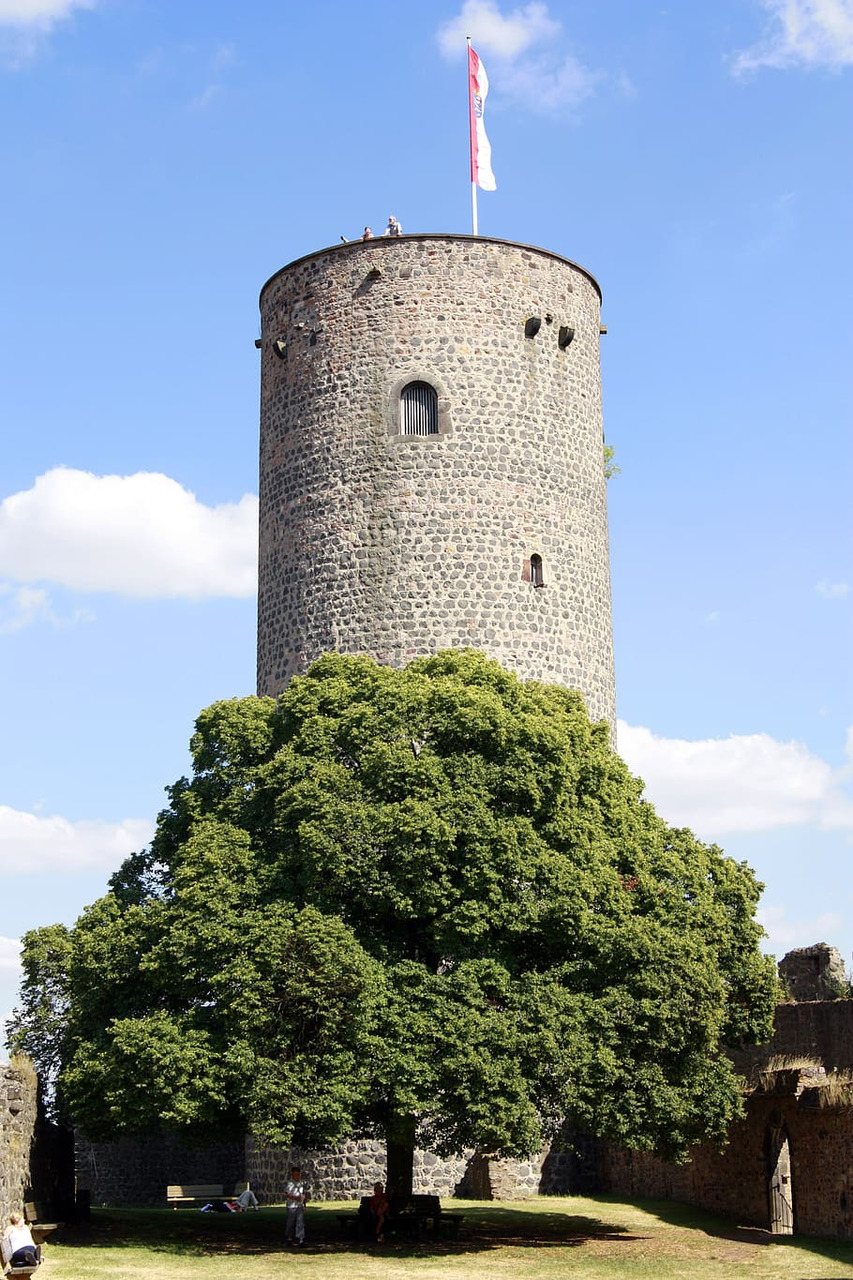
We dive into the European Middle Ages, emerge in the nineteenth century, the era of science and steam.
…European Union at the beginning of the Middle Ages. France, in the recent past, Roman Gaul, is the core of the ancient «European Union». Merovingians. The founder of this great dynasty is the semi-mythical leader Merovei (which can be translated as «Bee»). The monarch has ruled since the beginning of the fourth century AD. His grandson Clovis pushes the boundaries, produces sons, bequeaths to everyone a piece of the kingdom and orders them to live in peace. Fighting with each other, the offspring are taken to unite these allotments. The winner divides the state according to the number of male children. In the finale of this life’s drama, the true rulers of the country are the accountants of the royal court, the enterprising majordomo. One of them elevates to the throne his heir, the future father of Charlemagne, the founder of the Carolingian dynasty (747).
In the seventh century, Charles expands the empire, on all sides, to modern Spain, the middle of Italy, the shores of Normandy and Poland.
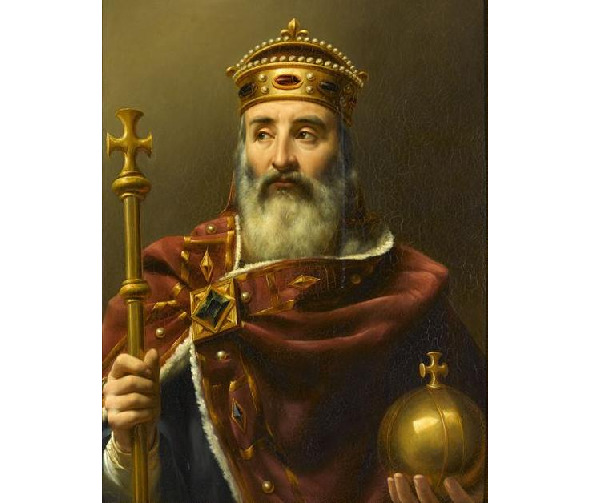
Two hundred years later, France, Italy, Germany gain independence, but are considered a single Holy Roman Empire until the beginning of the nineteenth century. The states maintain a cultural community, deploy troops for the Crusades and repulse the onslaught of the Ottoman Empire. The Vatican watches over the behavior of the rulers. If the whims of a certain king go beyond the limits, spiritual power, in cooperation with other monarchs, is able to correct something.
…In France, after the childless King Louis the Fifth Carolingian, Count Hugo Capet comes to power. He approves the Capetian dynasty (kapa is the robe of the priest, which this nobleman likes to wear).
In 1313, the famous Capetian, Philip the Fourth the Handsome, crushes the first transnational corporation, the richest Order of the Knights Templar, closed in the awareness of its own superiority. On the scaffold or with weapons in hand, a thousand knights are sent to another world. Brutal repression falls on another 20,000 Order workers, servants and squires. A year later, according to the curse of the head of the Templars, Jacques de Molay, as a result of an accident while hunting, the organizer of this operation, not so handsome as greedy, the French king, himself and his three sons die after a short time, leaving no direct heirs.
Philip the Fair’s cousin, Philip the Sixth of France, establishes the Valois dynasty, the younger branch of the Capetian, on the throne. He has no sons, so to speak, initially, which becomes the reason for the outbreak of the Hundred Years War.
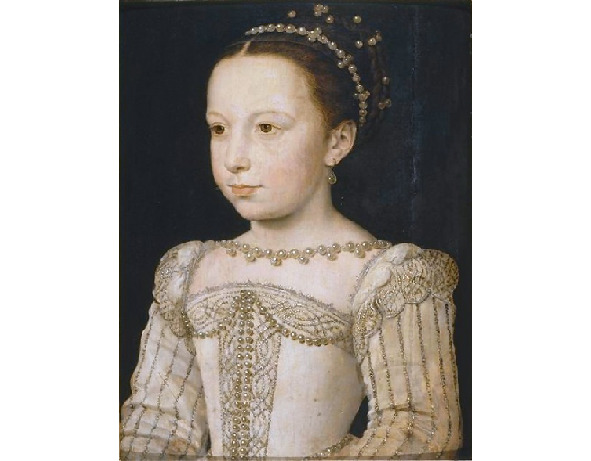
A few more rulers of the Valois dynasty, and the hero of the novels of the father and son of Dumas, Henry of Anjou, bursts into the stormy stream of history. His sister is Queen Margot (Margaret), married to Henry of Navarre, one of the brothers is Charles Maximilian, the current King Charles the Fourth. Their parent is a subtle connoisseur of poisons, a leading politician in Europe, Catherine de Medici. In order to somehow pass the time, Henry of Anjou becomes the Polish king. The monarch is preparing for a dynastic wedding on Anna Jagiellonka, who, otherwise, could have become the wife of Ivan the Terrible. But, having learned about the sudden death of his brother Charles, this nobleman leaves his residence in Poland and hurries for the more prestigious French crown. In Paris, however, the nomination of the Catholic Duke Heinrich de Guise is popular. Henry III manages to lure the brothers of Gizov, the duke and the bishop into negotiations. Here they, along with bodyguards, are stabbed with swords by the adherents of the king.
The troops of two Henrys — Navarre (Bourbon), who became Margot’s husband and at the same time a Catholic, and Anjou, besiege the outraged Paris. A dexterous, desperate scout plunges a knife into Henry III, interrupting the entire Valois dynasty with a single precise movement. A month later, the crowned Henry IV of Navarre also dies from the dagger of his colleague, Ravallaca. This monarch’s own kingdom, Navarre, is consolidated within France. So, rather unexpectedly, the younger branch of the Capetian, the Bourbons («blackbirds»), comes to power in France. The son of Henry of Navarre, Louis the Thirteenth, also a very famous hero of historical novels, marries Princess Anne of Austria. Under him, the country was ruled by the wise Cardinal Richelieu.
For a more complete immersion in History, we will sing the ancient Breton song "Drink cider, Lau!" You have probably heard its intricate melody more than once:
What will we drink for seven days in a row
What are we going to drink, because the thirst is so great?
But we have enough for everyone
We all drink together, roll out another barrel
We all drink together and no one is alone
…Since the middle of the seventeenth century, for almost seventy years, France has been ruled by the famous Bourbon, the Sun King Louis the Fourteenth, aka «The State is Me». The son of the sun, Louis the Fifteenth Beloved (1710—1774), is better known for his mistress, a true enchantress, the Marquise de Pompadour.
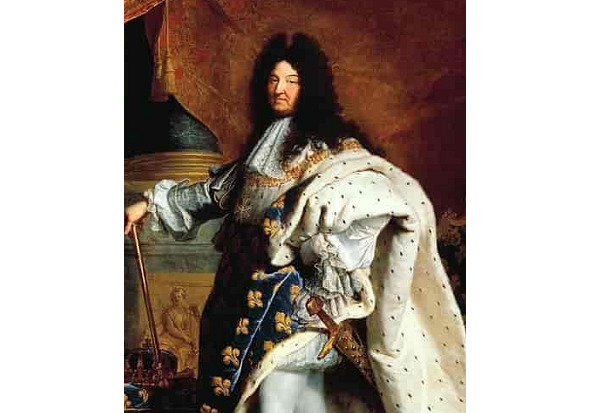
Louis the Fourteenth, despite his love, has only one legitimate son, married to Maria of Spain (daughter of the Spanish king). Louis the Great Dauphin died under mysterious circumstances in 1711 in the midst of the struggle for the Spanish inheritance (theoretically, this aristocrat unites the crowns of France and Spain). Equally unintelligible, officially, from measles aggravated by bloodletting, other heirs also die. Only the great-grandson of the «Sun King», Louis the Fifteenth Beloved (1710—1774), survives and occupies the French throne.
Louis the Sixteenth has long postponed reforms to levy taxes from nobles and clergy. Endlessly maneuvering between the estates, he gets entangled and throws the steering wheel of the state to the mercy of fate.
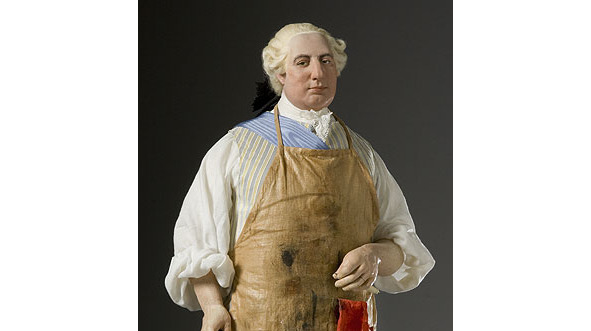
In the end, the king is condemned by the revolutionary convention. The former monarch ascends the scaffold. He is followed by his wife, Marie Antoinette. The execution of the queen is very disliked by the German (European) Habsburg dynasty, whose representative is Antoinette Habsburg-Lorraine. The last direct heir of the Bourbons, recognized by the monarchies of Europe as King Louis the Seventeenth, dies of malnutrition and mistreatment, ten years old.
The French Revolution. Napoleon Bonaparte
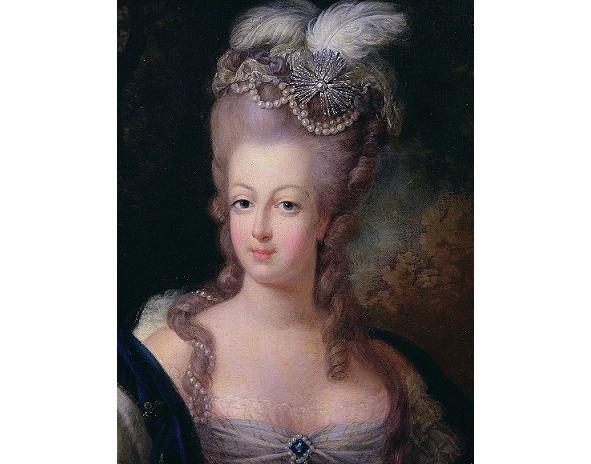
Liberty, Igality, Fraternity — Freedom, Equality, Brotherhood. The French Revolution. The guillotine, a humane instrument of justice approved by the king himself, later tested on himself. The convention, the taking of the Bastille and the cult of the Supreme Being instead of Christianity. Jacobin Club with branches throughout France. Suspicious Law, Marat, Robespierre and Danton. Friends of the people become enemies and vice versa with kaleidoscopic speed. An abyss suddenly opens up between the village and the city. Recruiting in the province of Vendee sparks a powder keg. Twelve «infernal columns» of a predominantly urban Republic are deploying a large-scale «French-French genocide» in the peasant and Catholic provinces. It seems that the goal of the revolutionary French is now the complete destruction of the peasants, the creation of agricultural settlements, ready to participate in all the adventures of the Convention, and not hindering the withdrawal of grain from citizens. Killed 30 thousand republican soldiers and 180 thousand peasants, every sixth or seventh inhabitant of the department.
Thermidor is a counter-revolutionary coup, unexpected as snow on the head. The leaders of the French Republic are dragged from the rostrum right during their performance and taken to a date with the scaffold. Directory — five elected directors. Council of Five Hundred. And only a chant from the audience, in response to another proposal to intensify the terror: «Justice for all!» stops the work of the guillotine.
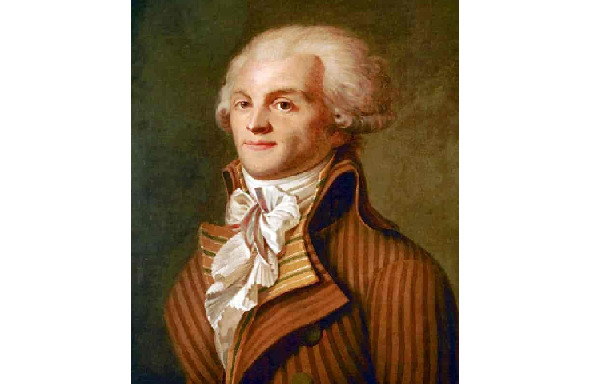
….Officer Napoleon, referring to the illness, avoids the dubious honor of a participant in the suppression of the Vendée uprising. However, it manages to stand out. The big players’ field has been cleared. The countries of the monarchical coalition are striving to impose peace on France by war, and every initiative active person is in demand. Captain Napoleon shows himself well in the capture of the rebellious Toulon. He becomes a brigadier general after the use of artillery against the «golden youth» on the streets of Paris, with arms in hand, seeking the restoration of the monarchy. After the Italian and Egyptian companies, the last of which was designed to create a staging area for the invasion of the Indian possessions of England, the general gains popular popularity. The Council of Five Hundred, which once dispatched an ambitious officer on foreign campaigns, is also dispersed by it. The Napoleonic Code (Civil Code) is adopted, combining Roman law and revolutionary conquests.
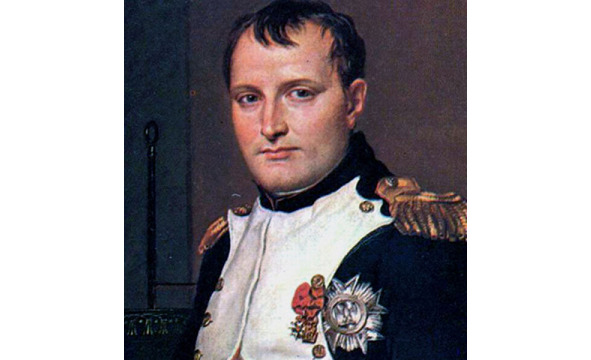
In 1803, Napoleon made an unexpected proposal to the Jefferson government. It’s like, «Would you like to acquire Louisiana, a vast area of North America, officially transferred to me, France, by Spain three weeks earlier?» The point, if there is one here at all, is that in the event of war, England can easily seize these lands. Bonaparte himself is very eager to fight Britain in Europe. For just $ 15 million, on May 2, 1803, the government of President Jefferson acquires land equal to a quarter of the area of the current United States. Further, for about the same amount (7 cents per hectare) step by step; beads, knives, canvas for tents, fire water, white Americans ransom tasty territories from the leaders of the Indians. Redskins: Iroquois, Sioux, Cherokee and others, pale-faced citizens of their country do not want to see under any sauce.
In 1804, the Pope covers the head of Napoleon Bonaparte with a crown. The First French Republic imperceptibly betrays itself and becomes an Empire.
Bonaparte defeats the troops of the Third Monarchist Coalition at Austerlitz and distributes the kingdoms of Europe to his close and distant relatives. The battle of Preussisch-Eylau (near Konigsberg) with the combined German and Russian troops of the Fourth Coalition terrifies even seasoned military personnel. Losses of twenty-five thousand killed, a fighting draw and a temporary lull.
Portugal flatly refuses to take part in the blockade of England. Napoleon discusses with the Spanish king the transfer of his troops to the rebellious country. During the negotiation process, he unexpectedly declares the monarch and his son prisoners. An attempt to send young Spanish princes to France leads to a large-scale uprising and guerrilla war. The throne of the King of Spain is occupied by Napoleon’s brother Joseph.
Napoleon is also seriously quarreling with the Vatican. Bonaparte’s troops annex the papal possessions. The Pope, ousted from power, in turn excommunicates Bonaparte from the church (1809), which in no way contributes to the popularity of the emperor among Catholics.
The Russian campaign of Napoleon, in addition to the desire for fame, booty and new territories, is a reaction to the participation of Alexander the First in all monarchist coalitions against France. The exodus from Moscow along the already devastated path was marked by cases of cannibalism.
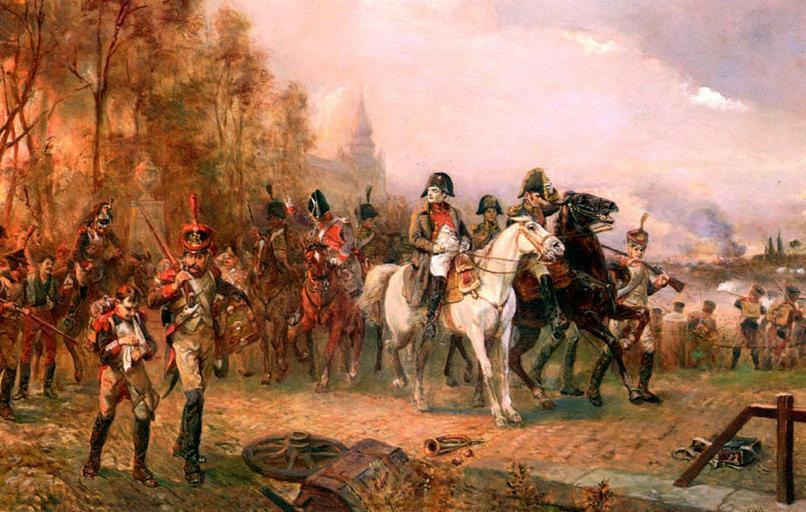
Of the six hundred thousandth army, twenty-three thousand survive (excluding the prisoners, many of whom preferred the position of tutor). They take refuge in the allied Poland. The Emperor is gathering a new army. He manages to win a series of victories over the troops, which includes ex-allies from the German principalities of the Sixth Coalition. But, French soldiers, officers, even marshals get tired of fighting. After the unexpected surrender of Paris to the Russian troops, in the face of a full-fledged opposition, Napoleon signed an act of abdication. A moment later, he is again called «General Bonaparte.»
All the surviving royal men, led by Louis the Eighteenth, return to France. The place of the revolutionary officers is taken by the nobles who have come from nowhere. And, the coat of arms of the Bourbons — a red lion surrounded by blue shells, flaunts on official documents for a short time. Against the background of general discontent, Napoleon returned from the island of Elba, where he had an artillery battery, a battalion of guardsmen and ships for walks at his disposal. The emperor gathers an army from the royal military units sent to capture him.
After the disaster at Waterloo (it is wrong to sleep during a general battle and send the infantry to march on the cannons) there is still hope for the continuation of this whole story. With the remnants of the army and young recruits numbering one hundred thousand fighters, Bonaparte wins a series of minor victories and arrives in Paris. The workers support Napoleon, the bourgeoisie no longer. The Emperor never sought to rely on the French working class or the Russian peasantry in order to consolidate the gains, revolutionary in a good sense at first. In addition, having lost 1.2 million of its soldiers, 28 million France is simply bled out of blood. More and more allied troops are striving for Paris. Their number reaches one million. With two frigates, the emperor is trying to leave for America, towards new adventures. At sea, his ship is blocked by an English squadron. Napoleon surrenders to the British at the Bellerophon and, according to official history, ends his days on the island of St. Helena in 1821
…Napoleon François (1811 — 1832), aka «Eaglet», Napoleon’s son, the unloved child of Mary of Austria de jure rules 14 days, therefore it is officially considered Napoleon II. Presumably, the boy was poisoned by those monarchical circles to whom he caused a lot of trouble just by his existence.
Napoleon III, Charles-Louis (1808 — 1873) ends a short dynasty on a fairly high note. Son of the brother of Napoleon the First and stepdaughter of Bonaparte. The first president of the Second French Republic, then like his uncle — again, the Emperor of France. The nominal idea is «one rules at the will of the people.» In 1859, in a bloc with Sardinia and the Garibaldians, Charles-Louis took away the territorial Italian provinces of Nice and Savoy from Austria. With allied England, he made two unsuccessful attempts to capture Mexico. The monarch provokes a war with a united Germany in 1870, which entails the creation of the Paris Commune and the occupation of the country by foreign troops. Napoleon III dies in England, after a long stay in German captivity.
Dynasties of England and Great Britain
…After the collapse of the Western Roman Empire, the Germanic tribes of the Angles and Saxons, under the leadership of the chiefs — kings, landed in England. The base of the conquerors is the southwestern part of England, almost the Wessex Peninsula. Local Britons, who had forgotten how to fight during the Roman rule, moved to the north of France. Or, having received the derogatory name «Curls», they remain in order to faithfully serve the foreign lords — the «bread lords».
…The Wessex dynasty ruled the kingdoms of foggy Albion from the eighth to the middle of the tenth centuries. The ceremonial alternation of local kings is interrupted by William the Conqueror, a native of continental Normandy. He breathes new life into the Norman dynasty. It was founded in 911 by the Norwegian Viking Rollon.
After a century, the Saxons lose their original extensive liberties and turn into villans performing unlimited duties. However, thanks to military service, some of them become free people, «Freemen» and «freeholders» — «free farmers».
In 1100, elected king with violations of the right of inheritance, to attract the sympathies of the feudal lords, the church and all how much influential free people, Henry the First presents the first edition of the Charter of Liberties. The obligations of the state and the individual, legal proceedings, taxes are streamlined. This proclamation is successful, overgrown with additions, up to the appearance on the throne of John Lackland (1199). The reforms of this monarch boil down to the establishment of royal tyranny, extortion for wars, sometimes not even begun, mind-boggling fines, and restricting the movement of the country’s inhabitants. In 1207, the monarch expelled the head of the Church of England, appointed by the Pope, and received personal excommunication. Unbaptized children, illegitimate marriages, have the right effect on the British. The top authorities are losing the fight against the Roman Church and the people. Thanks to this confrontation, by 1215, England becomes the first country of law and law on the planet.
The basis of English legislation to this day is the principle of the subordination of power to law under the threat of a legitimate armed rebuff from the people.
…Plantagenets. They have ruled since 1154. The most famous representative of the dynasty is Richard the Lionheart. In the third crusade, King Richard approaches Jerusalem, already determined to surrender. But, concerned about the internal political problems of his country, the king misses his chance.
About the Crusades themselves, we can say that for many reasons, their meaning and significance are denigrated. Before Catholic Europe reacts, the Arabs take over the originally Christian, Syria, Palestine and Egypt. Asia Minor and Spain fall into the shadow of the Islamic conquest. Units of knights and people’s militia stop this pressure.
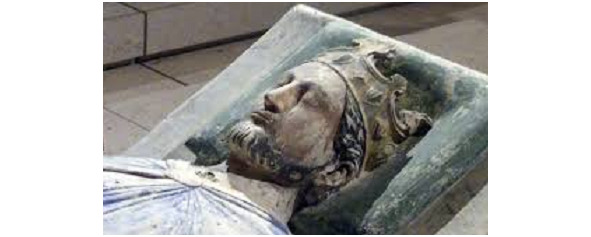
The dynasties of England and France are mixed. To say: «In such and such a period England is ruled by the Plantagenet dynasty» is not entirely correct. Thus, the Hundred Years War, lasting one hundred and sixteen years, was started by the English king Edward III (1312—1377), due to its belonging to the more French Capetian.
The nodal battles of the war, the battles of Crécy, Poitiers and Agincourt, are similar. French troops overtake the small English invading army. The weary knights, urged on by the orders of the impatient king, enter the battle from the march. They are shot from two-meter bows and finished off by British riflemen.
After ten years of this carnage, a plague epidemic breaks out (peak of the epidemic in 1348). Residents are cramped in the besieged cities. They don’t care about hygiene in principle. The streets are full of filth. «Black Death» takes up to half of Europeans, undermining its social hierarchy and even religious foundations.
After such a terrible respite, hostilities are resumed.
Many people in northern France already consider themselves British. French nobles introduce additional taxes. This move leads to Jacquerie, the uprising of «Jacques-simpletons», much more powerless than the English farmers. In the first half of the fourteenth century, the fighting spirit of the French, their national identity was revived by Jeanne d’Arc. England is deprived of all possessions on the continent. The last of her hands is the port de Calais, at the narrowest part of the Channel.
But, the British, whose country, in contrast to the loss of two-thirds of the inhabitants of France, is in perfect order, want the continuation of the lists. A branch of the Plantagenet dynasty, the Yorkies, vie for the crown at the House of Lancaster. A thirty-year rivalry between the red (Lancaster) and white (Yorkie) emblematic roses begins.
In the middle of the fourteenth century, after the death in battle of the last king from the Lancaster, Richard III, and the announcement of the heir to the House of York illegitimate, the war-weary English society crowns Henry the Seventh Tudor.

Lancaster blood flows in his veins. He marries Elizabeth of York (of course, York), and thus unites the warring dynasties. The new Tudor emblem combines red and white in a single rose. The next twenty-four years of his reign are celebrated in the history of England as a general idyll. The peasants are becoming free en masse. Serf dependence is replaced by land dependence. The amount of government duties is strictly fixed. Estates find a common language on the basis of religion and financial success. However, the era of Good Old England ends with the ascension to the throne of Henry VIII. For the sake of marriage with Anne Boleyn and an easy divorce from the annoying former wife, the king issues a law to change the state religion. The principle begins to work: whose power, that is the faith.
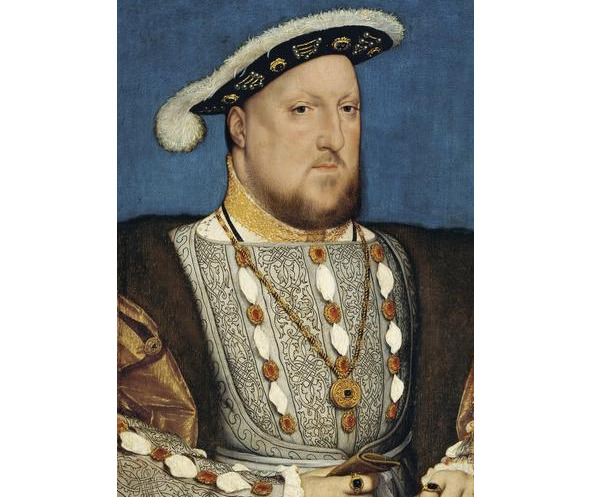
The head of the Church of England, more Protestant than Catholic, becomes the monarch, and this situation continues to this day. Catholic churches, monasteries, including the enchanting ruins of Glastonbury Abbey, were put by the king on the rubble for roads. Agriculture is now focused on wool production, and sheep that have multiplied immensely «eat people.» Where two hundred peasants lived comfortably, drank beer, ate meat, raised children, three or four shepherds remain. The new regime, without trial, sends the unemployed to hard labor or even the gallows. During the years of the reign of Henry VIII, seventy-two thousand people get to the scaffold, this is a considerable three percent of the population of England.
Mary, the daughter of Henry, the first lady to sit on the throne for a long time restores Catholicism, reconciles with the Pope, and for some time receives the support of the people. But rampant executions, including the massacre of the timid «queen of ten days,» 16-year-old Jane Gray, do not increase the popularity of the lady monarch in the least. A dynastic marriage with the Spanish prince Philip causes only bewilderment in society. Mary, now «Bloody» is dying of a fever, leaving no direct heirs.
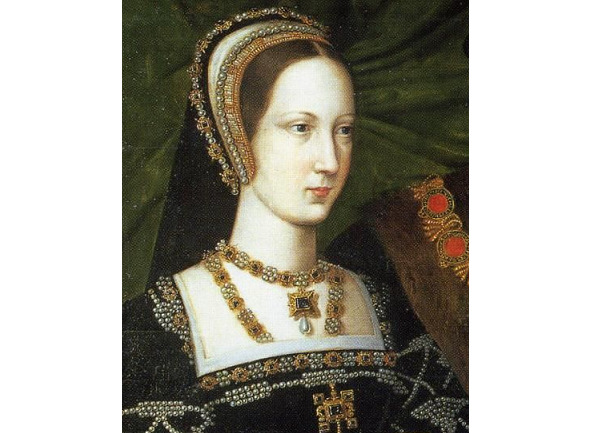
Elizabeth the First is the youngest daughter of Henry VIII from his marriage to Anne Boleyn. This marriage was annulled. But this time too, the child born in him becomes a full-fledged monarch. Elizabeth’s psyche is oppressed by the tyranny of her father, the execution of her mother and the penultimate wife of «Henry VIII, Lady Keith Howard, who became a good friend for an orphan. However, Elizabeth does not forget to monitor her appearance, looks youthful, and in particular, is fond of applying many layers of powder to her face. The reign of the Virgin Queen is considered the golden age of England.
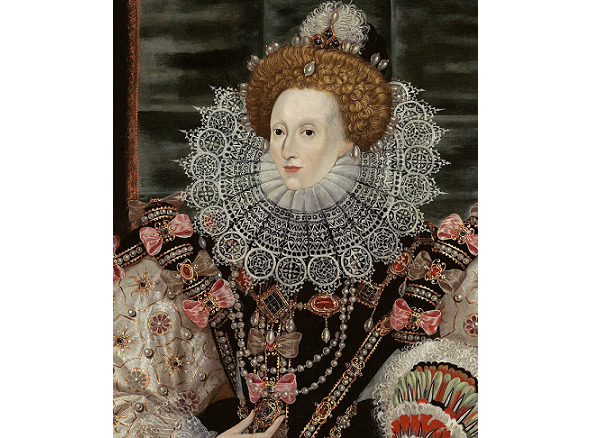
Stewarts.
Mary Stuart, great-granddaughter of Henry the Seventh, Queen of Scots, from the age of sixteen the wife of the King of France, Francis II. The second marriage, after the death of Francis, will take place six years later, with a cousin, Heinrich Stuart. As a result of a series of unsolved events, the monarch dies. A third marriage, to Henry’s most likely murderer, Earl Bothwell, strips Mary Stuart of her credibility. Lords rise in rebellion. The Queen signs a renunciation in favor of her son from her last spouse. Further, Mary gets involved in a confrontation with the Scottish nobles, loses the fight outright and flees to England for patronage to Elizabeth the First. The regal fugitive is held in honor and contentment. However, she gets involved in correspondence with people seeking the physical removal of the Queen of England, Elizabeth. The secret becomes clear…
Mary, who continues to assert her rights to the throne of England, even with tears in her eyes, is sent to the chopping block by the British.
England and Scotland for the first time become a single kingdom under the leadership of James the First, namely, the son of the executed Scottish Queen Mary Stuart.

His son, Charles the First, after the death of the Duke of Buckingham, his father’s advisor and lover, loses control over what is happening. The British Parliament decides to behead the proud king.
The dynasty of Oliver Cromwell, Lord Protector of England, has only two rulers. A year after the death of his father, Richard Cromwell finds out that he is unable to manage the state that has not yet cooled down after the civil war. Presumably, recalling the very sad story of Karl Stewart, he resigns.
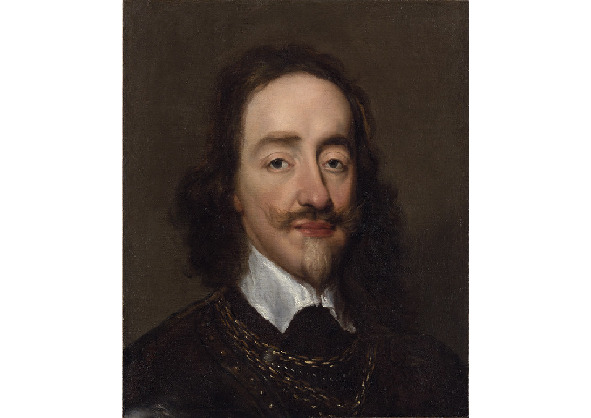
…The son of the king who lost his head, Charles II takes the throne of his father. The classical monarchy of Great Britain is taking revenge.
William III of Orange, ruler of the Netherlands, wins the sympathy of the majority of the people of Great Britain. They offer the object of sympathy the office of king, and Wilhelm agrees. Under him, culture (Swift), science (Newton) and social order (Bill of Rights) are experiencing an unprecedented rise. Among other things, according to a rather confused chronicle, Wilhelm meets the Russian Tsar Peter the Great in both of his dominions, England and the Netherlands.
…Hanoverian House. According to the new Act of Succession to the throne, Catholics who are in any way related to the Stuarts cannot count on the throne. In these conditions, the British call on representatives of the German family of Welfs, who have ruled Braunschweig for a long time and, accordingly, its capital Hanover. The names of the first four kings are «Georg», therefore the time of the dynasty’s reign is called the Georgian era.

After surviving several assassination attempts, Queen Victoria, the last of the dynasty, has ruled for sixty-four years. The nine children of the «grandmothers of Europe», princes and princesses, seal the agreement between most of the European dynasties. The Victorian era is Britain’s golden age.
During the reign of Queen Victoria, the British Empire reached its heyday. England is at the forefront of the white man’s civilizing attacks, protecting the native population from its even tougher rulers. Victoria voices the passionate aspirations of her subjects as follows: «It is not in our custom to annex countries if we are not obliged and forced to do so.»
A kind of anthem of the colonial and missionary activities of the Anglo-Saxons ("The White Man's Burden") becomes the poem "If", known to us more from "Mowgli", by the British cult writer Rudyard Kipling:
…And if you can be yourself in the crowd
Keep in touch with the people in the presence of the king
And, respecting any opinion
Chapters before the rumor do not bow
And if you measure the distance
Seconds, starting on a long run
The earth is yours, my boy, property
And what’s more, you are a human
Translation by S. Marshak… English-speaking connoisseurs of literature, please rate the double translation
The son of Victoria and the German Prince Albert, Edward the Seventh, becomes the founder of the Saxe-Coburg-Gothic dynasty. In 1917, during the war with Germany, the foreign name of the dynasty was changed to Windsor, from the name of Windsor Castle. Queen Elizabeth II, daughter of George the Sixth, is in good health as of 2019, married to the Greek prince Philip, and has four children who are located to continue the dynasty.
Dynasty of Genghisids
Dynasty of Genghis Khan. Temujin («Blacksmith»), Genghis Khan, born in 1155 or 1162 — the founder of the largest continental empire. Recall: the record holder is the colonial British Empire, distributed all over the planet, 1918, the territory of 42.75 million square meters. km. (despite the fact that a century earlier, the United States left the control of Albion). The greatest continental monarchy is Russia, 23.7 million square meters. km. in 1866 the area of the Mongol Empire is 38 million square kilometers.
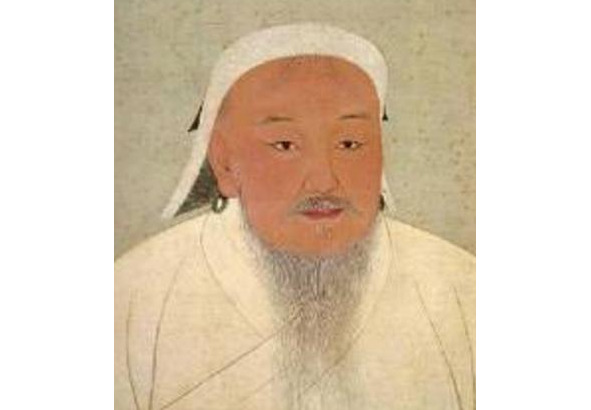
The childhood of the great and terrible conqueror is marked by adversity, captivity, humiliation. The stages of growing up are a long struggle against the named brother Jamuqa, victory, victory, the proclamation of Temujin as a great khan. The commander acquires the title «Genghis Khan» — «Lord of the Endless Sea». All the new orders of the Asian «siloviks» are stirring up clans, tribes and nomads. According to the collection of laws — Yase, the people are now counted in hundreds, thousands and tumens (tens of thousands). From now on, people are referred to as «arats». The Mongols bind them to the ground and thus enslave them. In 1207 the southern part of Siberia fell into the shadow of the conquests. Since 1213, Genghis Khan undertakes an invasion of China (state and dynasty — Jin). The next target is Central Asia, Northern Iran, the Caucasus. The Baghdad Caliphate and the state of Khorezmshahs are lying under the hooves of shaggy steppe horses. On the Kalka River (present-day Donetsk region), the united Russian and Polovtsian troops perish from clouds of arrows and sparkling sabers. Mongolian troops suffer an offensive defeat in the Volga Bulgaria. Six years later, they return with renewed vigor and restore the reputation of the invincible.
In 1225, the most famous son of Genghis Khan, Jochi, accused of treason, dies. The next year Temujin once again passes through Western China. He strengthens his power in the Celestial Empire, but in 1227 he loses to Time itself. The successor of Genghis Khan is the son of Ogedei from his first wife, Borte.
Jochi’s son, Batu (Batu), destroys Southern Russia, turning it into a «Wild Field» for centuries, imposes a tribute on the northern principalities and invades Eastern Europe. The conquerors conquer Poland, Hungary, and part of the German lands. Then, deciding that the Mongol troops in Europe, studded with strong castles, Batu turns his horses.
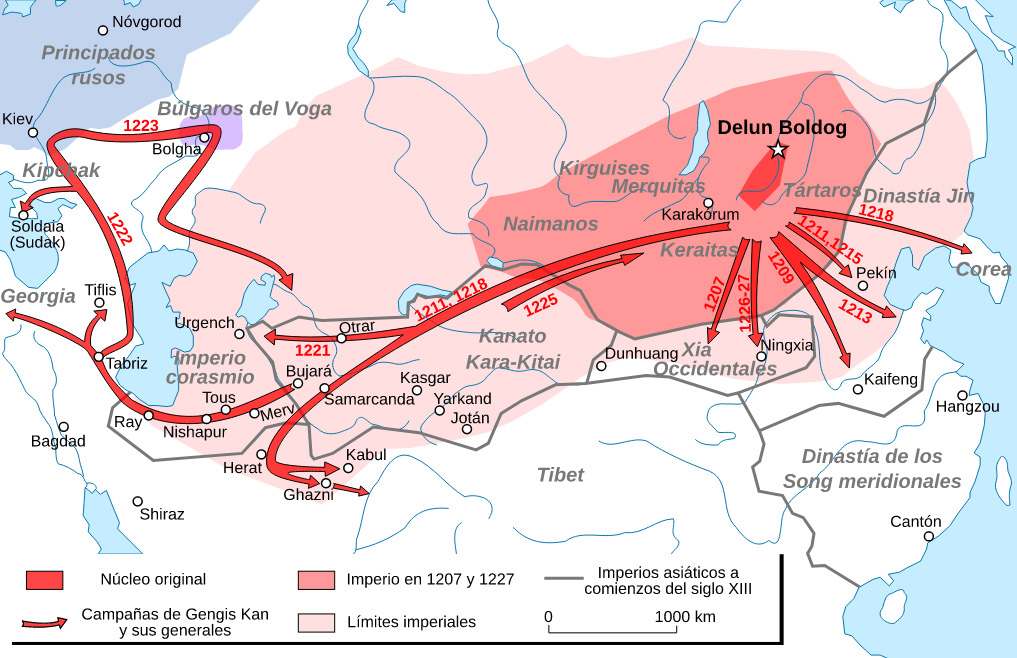
In 1320, during the reign of Khan Uzbek, Islam became the official religion of the Empire. The greatest state breaks up into Golden, Blue, White, Big Hordes.
The descendants of Genghis Khan from his first marriage (four sons, five daughters), Genghisids, ruled the shrinking and self-devouring Mongol Empire until the twenties of the twentieth century. In total, Temujin has 26 official wives from the princesses of the conquered peoples and 2 thousand concubines.
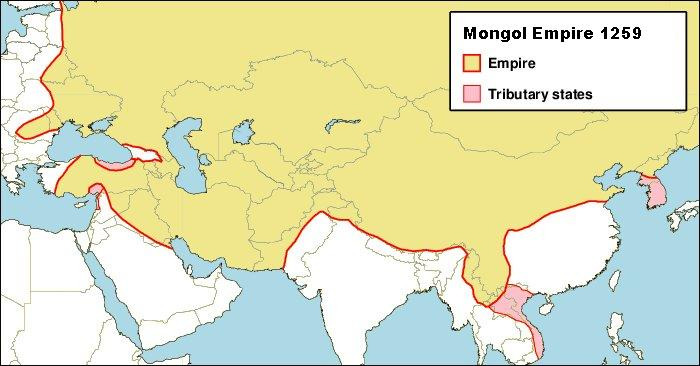
The empire of Genghis Khan is insanely large. However, these conquerors do not build castles. From their capital, Karokorum, there are several burial mounds and stone turtles. The political system of the eternal military is rather dull. He completely denies the social and cultural activity of the «common man». Therefore, after a hundred years, the Mongol Empire fizzles out, and the borders of new states are drawn in its body.
Tamerlane (1336—1405), the Iron Lame, or Timur ibn Taragay Barlas (from the Turkic Mongol tribe Barlas) is one of the new conquerors and the most famous. The founder of the Timurid dynasty is born on the territory of modern Uzbekistan (southeastern part of the country), according to legend, from a wolf that entered his mother’s bedroom. For some time, Timur has been involved in a series of internecine wars in the territories of modern Iran and Afghanistan. In battle, he loses two fingers on his right hand, injures the kneecap of his right leg. In 1370, Tamerlane won a number of great victories and, having married the widow of a defeated enemy, the daughter of Chingizid Kazan Khan, added to his name the title «Kurgan», that is, «Khan’s son-in-law». Now he is equal to the Chingizids, although, nevertheless, he does not have the right to be called «khan» according to the existing laws. It seems that he is quite satisfied with the title of the Great Emir («Sovereign»).
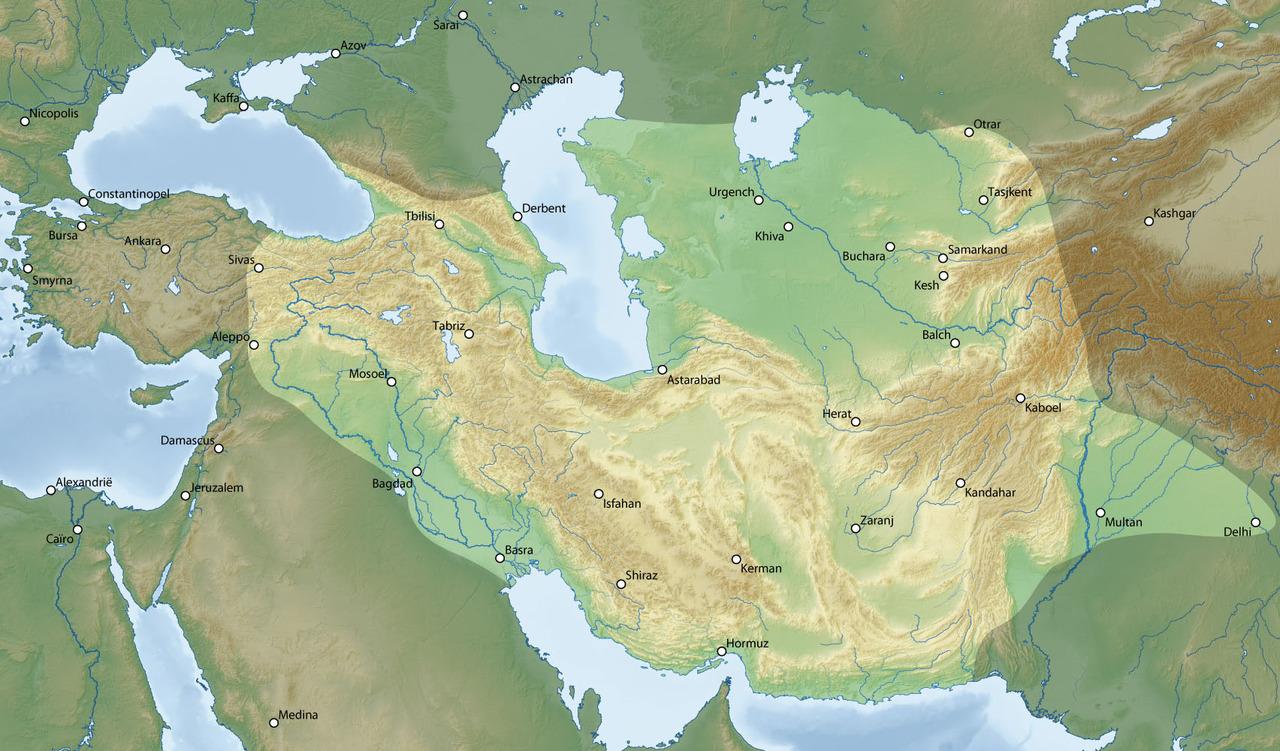
Samarkand became the capital of the new state of Turan («Unification of Tribes»).
Tamerlane continues his campaigns and, by 1384, captures almost all of Persia. In the north, in the struggle of the Blue, White, Golden Hordes, he supports Khan Tokhtamysh. Having strengthened, the apprentice-apprentice takes a very hostile position in relation to the patron. For some time Timur circles between Western Persia and the Golden Horde. On the Irtysh and Volga in 1389, he defeats the troops of Tokhtamysh. A year later, a new crushing expansion follows. Tamerlane’s troops take Baghdad by storm, occupy all of Persia, and attack the Transcaucasia. In the Darial Gorge — the «Gates of the Caucasus», Timur’s warriors, constrained by the rocks, are defeated. Iron Lamer leaves this direction. For the third time, he defeats the army of Tokhtamysh already on the Terek River. Pursuing the enemy, Tamerlane invades Ryazan and reaches the present Tula region. However, on August 26, 1395, Timur turns the troops.
The Russian lands, devastated thirteen years ago by Tokhtamysh, are not the primary goal of the emir. Moscow is also noted in the book of his victories «Zafar-name». However, perhaps this is only a sign that the city sent the appropriate ransom money in time.
Timur captures and destroys the city of Tana (Azov), Sarai-Batu, Astrakhan, Kafa (Feodosia) and in 1396 returns to Samarkand. After two years of rest, he is now heading to India. The commander captures Delhi, betrays to the sword «just in case» one hundred thousand captured Indian warriors, reaches the banks of the Ganges and, without establishing a lasting power there, returns to Samarkand with rich booty.
But not everything is in order in Iran, left unattended by the Great Emir. All the former hostile power is being restored. Timur sweeps through Persia as a hurricane, storms Damascus (1401), captures Syria. A year later, on the outskirts of modern Ankara, a grandiose battle will take place with the troops of the Ottoman Sultan Bayezid the First. Tamerlane lures the 85-thousandth army of the Ottomans to the plain to his 140-thousandth army. The Turks lose 15—40 thousand people and kill 15—25 thousand of Timur’s soldiers. Bayazid Lightning is captured. The Ottoman Empire falls into the abyss of civil strife. Tamerlane is congratulated by the kings of England, France and Castile.
In 1404 Timur prepares a campaign for a new worthy goal — the Celestial Empire. He is already beginning to advance, the construction of fortresses and food warehouses, but because of the cold winter he stops. February 1405 is marked by the death of the Great Emir.
Timur wants to become the sole ruler of the Muslim world. And by doing so, he destroys it. Khromets gathers a number of workers, craftsmen and scientists in his beloved Samarkand. However, in the rest of the land, the ruins of great cities scatter under the waves of the winds, and the fields strewn with skulls remain uncultivated.
To our great happiness, the spirit of love and creation - you cannot hit with a saber ...
Poetry of Persia:
You are a mine, since you are looking for a ruby
You are loved, since you live in the hope of a date.
Understand the meaning of these words, both simple and wise
Everything that you are looking for — you will certainly find in yourself!
(Omar Khayyam, astronomer and poet, 1048 - 1131)
…In the middle of the fifteenth century, the empire shrinks, but stabilizes. At this time, together with his father, the great scientist, mathematician and astronomer, Timurid Ulugbek, ruled (the exact name is unknown, this is a title). He is overthrown by his own, not so smart son. A year later, he himself loses his head. The next Timurid, Abu-Seid, seeking to suppress the civil strife that had gone out of control, invites nomadic Uzbeks to his crumbling state Maverannahr. Those obey the will of the Timurids for a very short time. In 1501, hired soldiers seize Samarkand and drive out into the unknown the last representative of the great dynasty, Muhammad Babur.
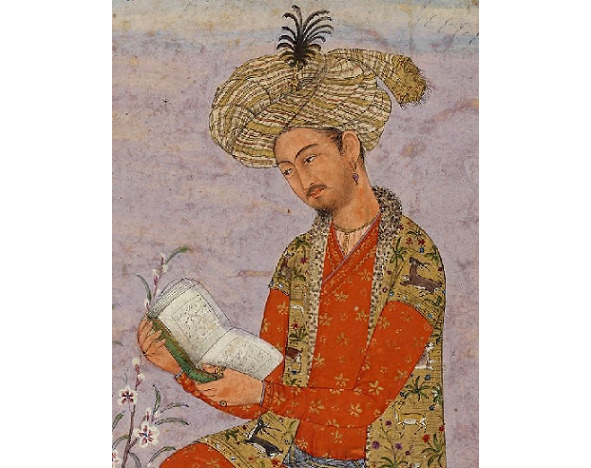
Babur has to look for a new homeland for himself and his people. In 1504, he captured Kabul and using it as a huge military base, undertook a campaign in India. Fifteen thousand soldiers with weapons and cannons unusual for that time are enough to crush the army of the Sultan of Delhi, which was twice as numerous. Islam in India has been widespread since the thirteenth century, except for the southern regions, so that the ground has been prepared for a fresh Muslim dynasty that has not been noted in internal conflicts.
Babur is not only a commander, but also a talented poet:
What kind of suffering did you not endure and grievous troubles, Babur?
What betrayals, insults, what slander did not know, Babur?
But whoever reads «Babur-name» will see how much torment
And how much grief the king and poet Babur suffered
Great Mughals, they are Baburids and to some extent Timurids rule India until the middle of the eighteenth century. Padishah Jahan the First tries to recapture the homeland of the ancestors from the powerful Persia, but fails. His more famous deed is the Taj Mahal mausoleum, dedicated to the memory of his wife Mumtaz Mahal.
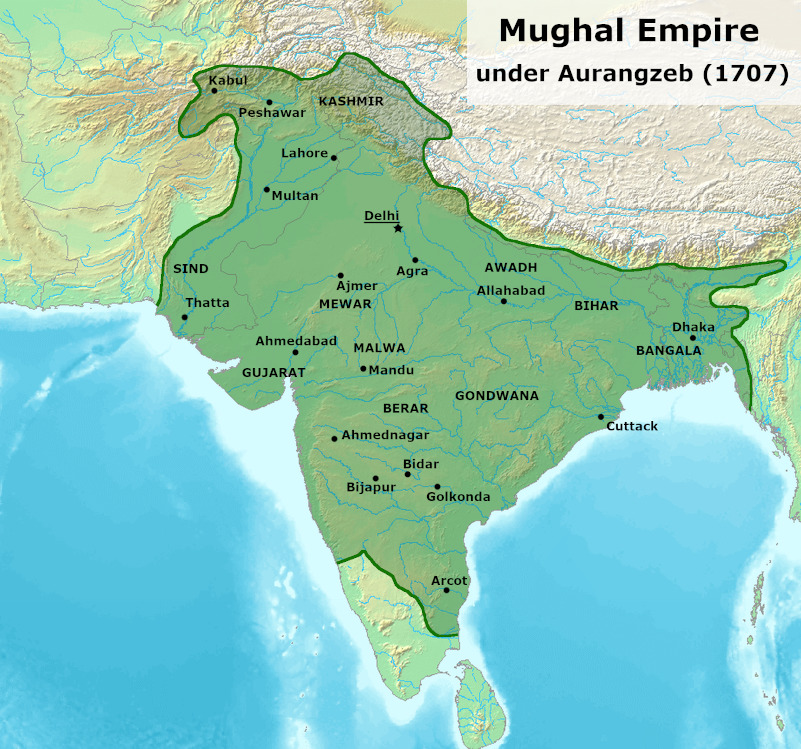
Jahan’s son wages even longer and more unsuccessful wars. Adherents of Hinduism revolt. They are defeated, but they turn to guerrilla actions and widespread covert sabotage. Babur’s descendants are degenerating. Court officials deal with their nominal rulers as soon as they sense their slightest attempt to free themselves from obsessive tutelage. The Persians and Afghans burst into India, devastate the regions, take the inhabitants into slavery.
…In September 1852, the British seized Delhi by storm and announced the liquidation of the Mughal Empire.
Royal Russia
Since the fifth century AD, most of Russia, except for Pomorie, has been designated on ancient maps as part of the Attila Hun’s empire. The Huns are nomads of the north of China, in search of adventure and prey, rushing to the West. After the battle with the combined Roman and German forces in the Catalaunian fields, their leader Attila slows down. A year later, for unknown reasons, he dies. His sons quarrel with each other and cannot (and do not want to) do anything sensible for their empire. By 530, this imposing state formation as a whole ceases to exist. In Germanic heroic legends, such as the «Song of the Nibelungs», the Hun Attila looks like an enlightened ruler, whose state of affairs practically does not differ from the European one.
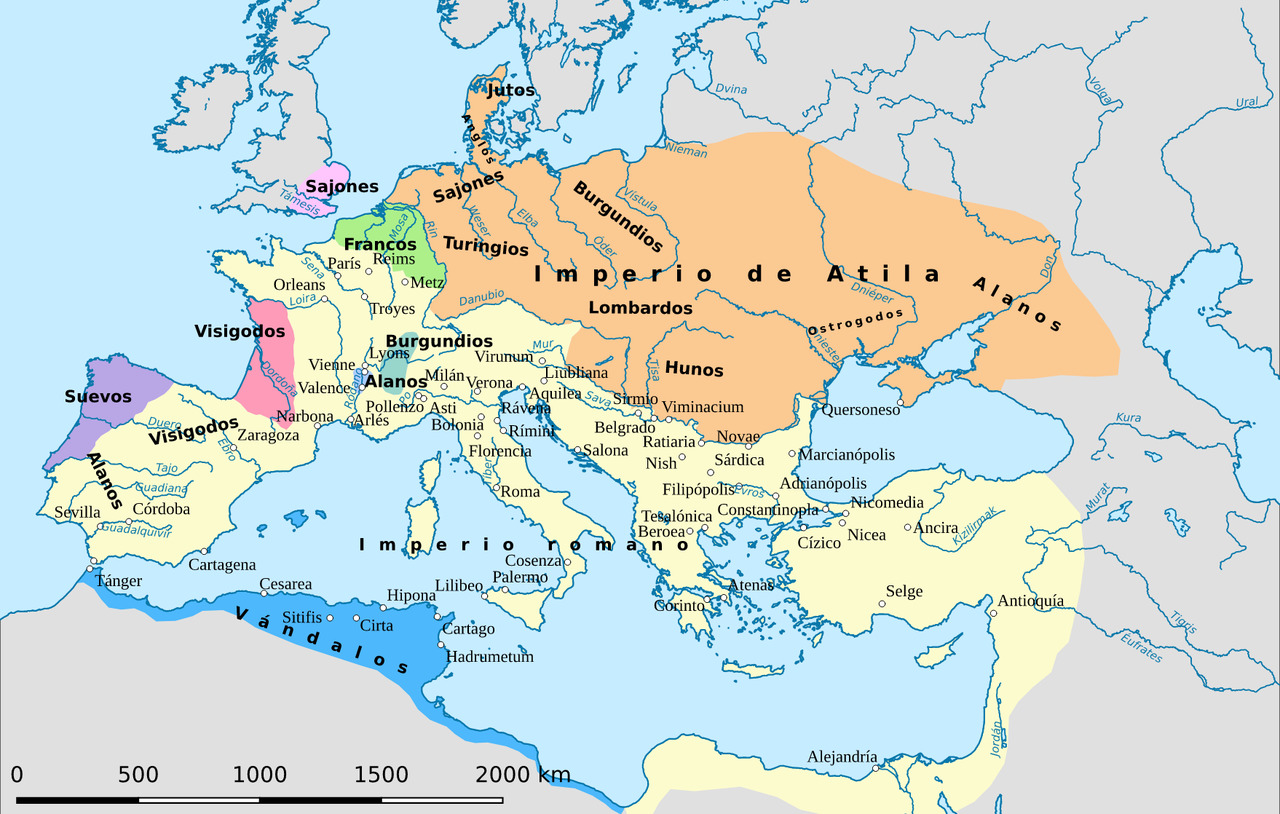
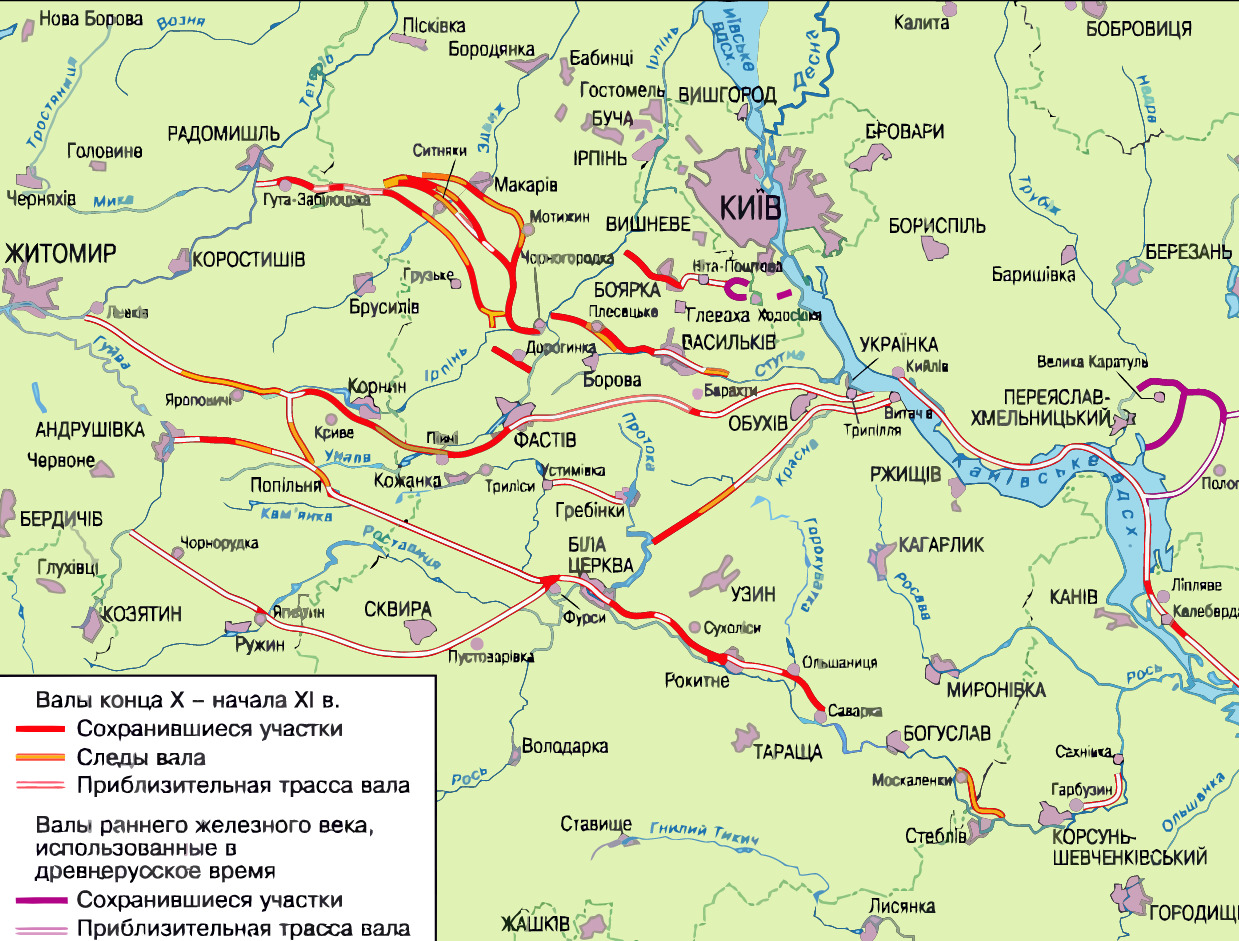
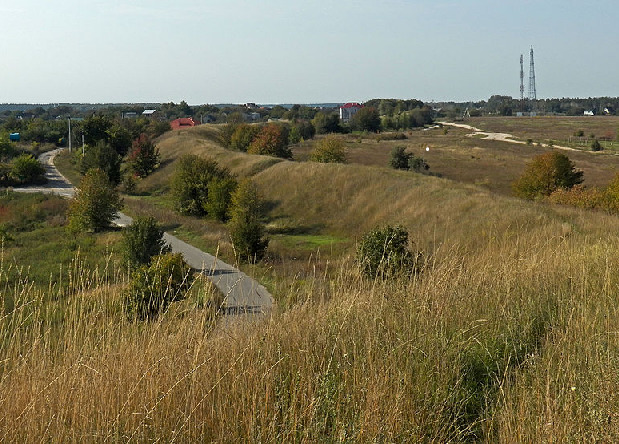
…The Avar Kaganate, composed of the next mighty Asian wave of migration, spreads from the line from the Crimea to the north to the borders of modern France, capturing part of the Balkans. For some time now, the domination of the Avars finally annoys the head of the Holy Roman Empire Charlemagne. The king organizes an extensive military coalition, including and gaining strength Slavic tribes.
In 805, the kaganate suffers a catastrophic defeat. Obry, red-haired, strong, fierce and proud, as the chronicles testify, disappear throughout the territory of their former residence.
…One more, the Khazar Kaganate has a center in modern Dagestan. He controls fragments of Crimea, the Volga region and Kazakhstan. In 660, this kaganate defeats the troops of neighboring (and partially intersecting with the kaganate) Great Bulgaria. The losing tribes are settled all over the world. Some of them form the well-known Black Sea Bulgaria. Other groups leave for the Volga and Kama, form the Volga Bulgaria, become the ancestors of the Kazan Tatars and Chuvashes. As a rule, they convert to Islam, in the struggle against the kaganate, hoping for the help of their fellow believers from Persia. The third group remains in place and pays tribute to the Khazars.
…In 964 the Russian prince Svyatoslav defeats the Khazar army and places the Belaya Vezha fortress in a strategically important place on the Don (now the bottom of the Tsimlyansk reservoir), captures Tmutarakan, the present Taman peninsula. Finally, the Khazars are finished off by a new wave of nomads, the ubiquitous and indefatigable Polovtsians.
Much later, in the thirteenth century, the Polovtsians will become part of the Golden Horde, assimilate, and pass on their (Kipchak) language to the conquerors. The Khazars are scattered throughout the land, possibly making up a significant part of European Jewish communities. Some of their tribes settled in the Crimea and gave rise to the Karaites.
Since 576, the Türkic Kaganate, a kind of reflection of the Khazar Kaganate, shifted to the East to China, rejects a part of the Crimea and the North Caucasus from Byzantium.
…Information about all these state entities is very fragmentary. Often the kaganates are combined both territorially and on a chronological scale. It is only clear that they occupied a significant part of the future Rus, interacted with the Slavic tribes, fought or entered into alliances. The state religion of the Avar and Khazar kaganates is Judaism, fancifully mixed with pagan customs, the Turkic religion is shamanism and Buddhism.
The beginning of the official chronology
…Ninth century AD. Varyag (Viking, Norman), or the Prussian Rurik reigns at the invitation of the people’s veche in Veliky Novgorod, with the brothers Truvor and Sineus. A ruler with a good pedigree, outside of local strife is a worldwide practice to this day.
Some researchers trace the word «Rus» to the Old Icelandic «sailors, rowers». Other historians define it as the self-name of the ancient Baltic (Slavic) people of the Prussians. There is also a version that deduces «Rus» from the ancient Iranian ruksi — «white, light». The name of a single representative of the people initially sounds like «Rusyn».
…Prince Oleg is the regent of Rurik’s son, Igor, seizes the center of trade routes, prosperous Kiev. Then he went with the embassy to Byzantium, where he was first called the Grand Duke in synchronous Byzantine and European sources. Oleg the Prophet dies, as the epics say, from a snakebite.
Prince Igor is for the first time recorded by the Byzantine chronicles as a Russian commander who attacked Constantinople with significant forces — a thousand forty-seat rooks. The Byzantine squadron uses Greek fire. This ancient superweapon destroys most of the Russian fleet. Draw. Peace treaty with the emperor of Byzantium, Roman the First Lacapenus. Diversified trade, political and religious ties are being established.
Where was the base of the first Russian fleet located? Perhaps in Tmutarakan — on the present Taman Peninsula, or in the area of modern Kerch («Korchev»). Crimea at this time was ruled from Taman. Part of the peninsula under the control of the city of Chersonesos, or, in other words, Korsun (within the boundaries of present-day Sevastopol), is controlled by the great Byzantium.
…The prince dies from his greed, trying to re-collect tribute from the Drevlyan tribe. However, the circumstances of the death of the ancient supporter of double taxation are confusing.
Igor’s beloved wife, Olga, the first name of Prekras, is baptized personally by the emperor of Byzantium, Constantine the Seventh. She builds up the government of the country, atones for her sins, is engaged in the upbringing of her son Svyatoslav.
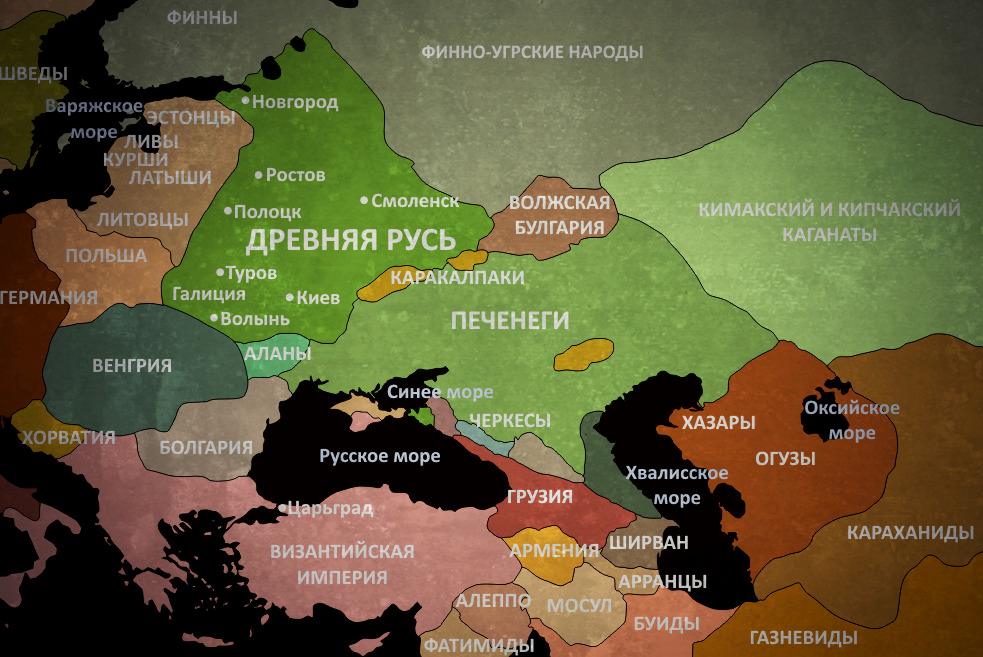
Svyatoslav is at war with Bulgaria. Then he turns his weapon towards the possessions of Byzantium in Thrace. In 970, the troops of Emperor John the First forced the prince to retreat. Returning, the prince is ambushed by the Pechenegs (a nomadic tribe known until the middle of the eleventh century) and dies.
The next ruler is Vladimir the First Svyatoslavovich, aka Vladimir the Saint, the fruit of Svyatoslav’s connection with a certain almsgiver Malusha. The bastard is brought up under the supervision of Princess Olga.
In 988 another war with Byzantium will take place. Vladimir captures Korsun (Tauric Chersonesos) and concludes a peace treaty. To enter into a dynastic marriage with the sister of the Byzantine emperor Basil II, Anna, here, in the city he captured, the prince is baptized.
The first Kiev metropolitan, attested by written sources — Theophylact. The priest takes under the authority of four bishops — Belgorod, Novgorod, Chernigov, and Polotsk. Theophylact leaves his high post in 1018.
Vladimir Krasnoe Solnyshko is known for his participation in the voluntary-compulsory change of the state religion. He is a character in many folk tales. Under Vladimir the Holy, the church charter was introduced, the minting of «silver coins» began; high quality classic coins that have replaced elongated silver grivnas. Around 980 Vladimir kills Rogvolod, prince of the Polotsk principality (the territory of modern central and northern Belarus). His daughter, Rogneda, he forcibly marries. Three sons from this marriage become an offshoot of the Rurik, Izyaslavich Polotsk or, in other words, Rogvolodovich.
Yaroslav Vladimirovich the Wise, son of Vladimir, prince of Novgorod, Kiev and Rostov. The heyday of the Russian kingdom. Introduction of a set of state laws. Princes and princesses from Yaroslav and his wife, daughter of the Swedish king, Indigerdy are welcomed in France, Hungary, Greece, Norway, Poland and Austria.
Yaroslav achieves the fact that, bypassing the rights of the Patriarch of Constantinople, the Metropolitanate, by a council of bishops, in 1051, is appointed priest Hilarion of Russian origin. However, under the successor of Yaroslav, from 1055 the order of things was restored.
Three centers of power crystallize — Kiev, Vladimir and Veliky Novgorod. Here we can add Polotsk, the capital of the future Belarus. Kiev is an outpost of Russian civilization. Further south, behind the system of the Serpent Shafts erected by someone unknown, are the possessions of the Polovtsy and Mongols, with an island of Russian possessions, Tmutarakan.
The next popular ruler (according to the «ladder» principle of seniority of the princely family, from brother to brother) is Vladimir Vsevolodovich Monomakh, i.e. «Combatant» (1113—1125), grandson of the fifth son of Yaroslav the Wise and the Byzantine emperor Constantine Monomakh, Prince of Rostov, Chernigov, Pereyaslavl, Grand Duke of Kiev. He is known for pushing the Polovtsians away from the borders of Russia (1111, «Crusade» to the Great Steppe), autobiographical texts («Teaching to children», «Chronicle of life»), limiting the arbitrariness of usurers from ex-Khazars in Kiev, freeing debtors.
Less known is the war between the prince and Byzantium, for the interests of the husband of his daughter, the impostor «Leo Diogenes», and then his son (his grandson). There is an opinion that in a series of fierce and, in general, unnecessary battles, Vladimir is depleting the potential of his country, preparing it for a period of fragmentation and decline.
In the twelfth century, from the death of the last strong ruler, Mstislav the Great, the son of Vladimir Monomakh, from the clashes between princes Andrei Volynsky and Yuri Dolgoruky, the Civil War begins. Mstislav’s daughters marry prestigious European kings — Norway, Hungary, Denmark. Then the popularity of matchmaking in these parts of the royal blood falls.

Russia is divided into fifteen or eighteen principalities, with their own dynasties, or even without them. Veliky Novgorod, by decision of a mixed boyar and folk veche, invites the most worthy princes. His example is followed by three principalities, choosing to reign the younger sons of the main dynasty who have remained out of work. In Kiev, the thrones governing certain lands work side by side, reminding the Federation Council.
Since 1240, the Russian principalities have been seized by the Mongol conquerors, who had recently conquered the Jin empire. The northern fragments of Russia get rid of direct invasion, but pay heavy tribute with property, money and people. Prince Alexander Nevsky prefers to «be friends» with the Golden Horde, inevitably introducing Asian orders and customs in Russia, rather than to compete with her forces, hardly reaching forty thousand regular troops. In theory, this is possible. So the Volga Bulgars in 1223 defeated the powerful Mongol army. More than five thousand captured Mongols are mockingly exchanged by the winners for the same number of rams. But in 1236 the expeditionary corps of Ubedei increased to 120—150 thousand soldiers. The Volga Bulgars no longer have a reception against this.
…Polotsk avoids the Mongol invasion, but falls into the structure of the Lithuanian principality — Western Russia. Many princes who disagree with the doctrine of Nevsky leave for Livonia (modern Lithuania is the former province of this state), together with the squads. Here they experience the action of two centers of gravity — Muscovite Rus and Poland. Separated from the Horde by the Wild Field, as well as by the state that is already paying tribute, they are left to their own devices.
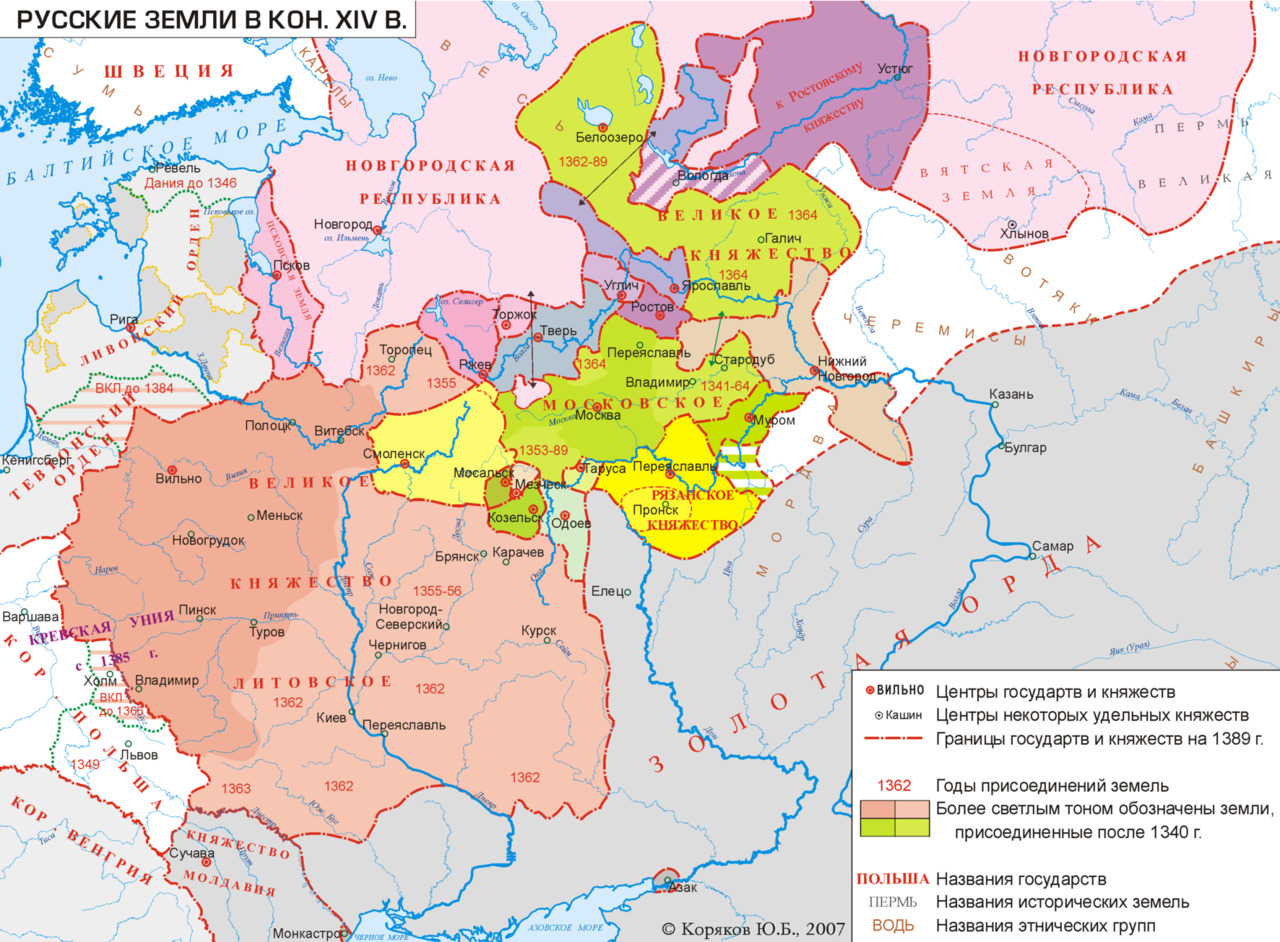
Due to their geographical location, the steppe southern principalities are exposed to the most powerful blows of the Mongols, lose their importance and are no longer able to recover on their own. Since the thirteenth century, Kiev has been ruled by the Baskaks of the Nogai ulus, local administrators who do not even need to appear at the khan’s headquarters to approve the label. The city ceases to be the residence of the metropolitan. In the middle of the fourteenth century Kiev captures and includes the Principality of Lithuania. To do this, he has to fight with the Horde troops weakened in civil strife.
Cash is again becoming a low-expressive two-hundred-gram elongated ingots. In the North, due to the custom of cutting such money into several parts, the name «ruble» appears.
The era of Dmitry Donskoy, opening from the second half of the fourteenth century, is controversial. The victory over the troops of Mamai, the father-in-law of the ruler of the Horde, Berdibek, in 1380, does not really change anything. The remnants of Mamai’s troops, gaining strength in the Crimea, are finished off by the heir of Genghis Khan, Khan Tokhtamysh. Mamai lives not far from Kafa, gets involved in a fight with the Genoese who sheltered him, and as a result loses his head. Jagiello (Yakov), Mamai’s ally, he is also Vladislav II Jagiello, Prince of Vitebsk, Grand Duke of Lithuania, later — King of Poland, does not take part in the battle. In 1384, on one of the facets of History, an important issue was resolved. Union with Poland, or an alliance with Russia? The first option drops out. Two years later, the Lithuanian principality was converted to the Catholic faith. The Grand Duke marries 13-year-old Polish princess Jadwiga. His descendants (from the second and fourth wives) form the Jagiellonian dynasty, which ruled the Commonwealth until 1572.
Vasily the First Dmitrievich, the eldest son of Dmitry Donskoy (1371—1425) — is held as a hostage in the Horde, flees to the Moldavian principality, successfully marries the daughter of the Grand Duke of Lithuania Vitold, Sophia. In 1389, he received a label at the headquarters of the khan, and became the Grand Duke of Moscow. Witold, meanwhile, decides to measure strength with herself, the Golden Horde, reeling in internecine strife. The prince refuses to extradite Tokhtamysh, who has been deprived of his post, to another applicant for the khan’s title, Edigei. The maximum task is to plant Tokhtamysh in the Horde, and to take the throne of Russia with the help of a powerful protégé. Forces of the parties. Vitovt, knights of the Teutonic Order, Tokhtamysh — 38 thousand fighters. Golden Horde — 90 thousand soldiers. The battle will take place on the Vorksla River. The interest of the Order is Pskov, promised by Vitovt, in case of victory. Heavily armed knights pursue a feigned retreating enemy. Their lightly armored horses then receive a shower of arrows from their bows and crossbows. On the shoulders of the now quite sincerely retreating Teutons, the Horde crashes into the infantry and completes the rout. The loss of the «Litvin» — 18 thousand, the Horde, according to the chronicle — «very few.»
Vitovt, together with his rival friend, the Polish king Jagiello, still dreams of being known as the unifier of the Eastern Russian lands. In 1408, the first standing on the Ugra River (somewhat north of modern Kaluga) takes place. For some reason (the attack of Edigei’s troops on the territory of Russia and Lithuania itself), in view of an even more formidable enemy, the battle does not take place. Then the Horde, dissatisfied with the delay in the payment of tribute, approaches Moscow, ruins the neighborhood and, having received solid ransom payments, returns to its steppes.
Obliged to the Grand Duchy of Lithuania for his initial advancement, his wife, and who knows what else, Vasily the First easily yields to his western neighbors Vyazma, Smolensk, and other Russian lands.
Vasily the Second Vasilyevich (Dark), 1415—1462, son of Vasily the First and Sophia Vitoldovna. He spends a lot of time in a tough struggle for the throne. One of the competitors is the prince of Zvenigorod Yuri Dmirievich Shemyaka («Shemyaka», the one who can change his neck — a generic nickname), the son of Dmitry Donskoy. The rival is also his eldest son, Vasily Yuryevich (nickname — «Oblique»), the grandson of Donskoy, and the younger son — Dmitry Yuryevich Shemyaka. The Golden Horde court in this dispute issues a label to Vasily Vasilyevich. A series of battles with an uncertain outcome followed, repressions against supporters of opponents, giving rise to a «fifth column», and new coups. All princes designated here have occupied the Russian throne for some time. Vasily the Second is the one who manages to hold out on it longer than others.
The second most successful is Prince Dmitry Yurievich. Having lost the Moscow reign, he heads the prestigious Novgorod Republic. But, in the end, the people of Vasily the Dark bribe the prince's cook (nicknamed "Toadstool") and that "armor" potion (apparently, arsenic) into the chicken served to the ruler.
The right of inheritance becomes direct, not "ladder" as before, but from father to son, bypassing younger brothers.
An important event of the time - the Russian Church becomes autocephalous. In 1435, Isidore (Kievsky), a Greek by origin, was proclaimed Metropolitan of the Grand Duchy of Moscow (formally - Kiev and All Russia), at the suggestion of the Patriarch of Constantinople. In Moscow, he convinces Vasily II of the urgency of convening an Ecumenical Council, where the contradictions between Catholics and Orthodox will be erased. The prince gives the Metropolitan a hundred of his entourage, money and sends them to Italy, with the order: "So that nothing new happens with us." In March 1441, having driven around Europe, Isidore returned to Moscow. Here he gives Basil II a message from Pope Eugene the Fourth with a request for help in the reunification of the Catholic and Russian Churches. During his episcopal service in the Assumption Cathedral, Isidore mentions the Pope as one of the primates of the Church. Three days later, by order of Vasily II, the Metropolitan was transferred to the Miracle Monastery, used as a prison for noble persons. Later, probably with the secret permission of the prince, Isidore fled to Europe, Byzantium, then Rome, where he controls the revenues of the Holy College of Cardinals.
So, the first serious misunderstanding in Russia between the power of the church and the secular, ends in the victory of the earthly prince. Vasily the Second, through the council of Russian bishops controlled by him, in 1448, confirms the unquestioning Patriarch Jonah, who had long been conceived by him, on the spiritual throne. Russia is losing its spiritual connection with Europe, refuses to disputes altogether, and stops in development. This leads to the subsequent, two hundred years later, hasty and fierce reforms of Nikon, the schism of the Orthodox Church, which has not healed until now.
An important problem of Russia is the absence of vassalage as such. In Western Europe, to some extent on its own, the links of the social hierarchy conclude contracts of service. Knight, baron, count, duke, king swear oaths to each other. The oath obliges to endanger life for the faith, protect the clergy and churches, widows and orphans, avoid unworthy fellowship and dirty earnings, go to a duel to save the innocent, serve the emperor, live blamelessly before the Lord and people. In Russia, there are no people galloping through the kingdom in the hope of accomplishing a feat. The homage procedure was replaced by the natural concept of belonging of subjects, from a slave to a boyar, to a prince. No contracts are made with slaves. This state of affairs is deduced as a reflection of the order of the Horde in Russia. Among the eternal military there is obedience, iron discipline, but there is no honor as such.
Ivan the Third the Great ruled in the Principality of Moscow from the middle of the fifteenth to the beginning of the sixteenth centuries. He erects the Moscow Kremlin, strong, complex, impressive to this day. The final liberation is achieved from the Golden Horde, which devoured itself, battered by Tamerlane (the second standing on the Ugra River, 1480). The invasion of the Crimean Khan Mehmet Girey the First crumbles into bloody sparks on the outskirts of the capital. Further, with the powerful Khanate, Muscovite Russia establishes friendly diplomatic and trade relations. Wars flare up and go out with the Grand Duchy of Lithuania, campaigns will take place against Smolensk (principality of Lithuania), Novgorod, Kazan and Pskov.

The son of Ivan the Third, Basil the Third (also the Great), in a treaty with the emperor of the Holy Roman Empire, under the patronage of his mother, Sophia from the Byzantine dynasty of the Palaeologus, was first named as a king. In a marriage with Elena Glinskaya, the daughter of a prince leading a family from the temnik Mamai, Yuri and Ivan, the future Grozny, are born.
A week after the death of Basil the Great, the boyars kill Yuri, the main contender for the throne. Five years later, perhaps from the poison of the Shuiskys, the mother who took the reins dies. Another eleven years of the board of trustees, and Ivan the Fourth (1530 -1584) was crowned king in the Assumption Cathedral. The era of princes, equal only to princes and dukes in the European table of ranks, is generally coming to an end. The title is recognized by England and the Emperor of the Holy Roman Empire, but rejected by the Vatican, who in the thirteenth century conferred the title «Rex Russiae» on the prince of the lands of South Russia, Daniel Galitsky.
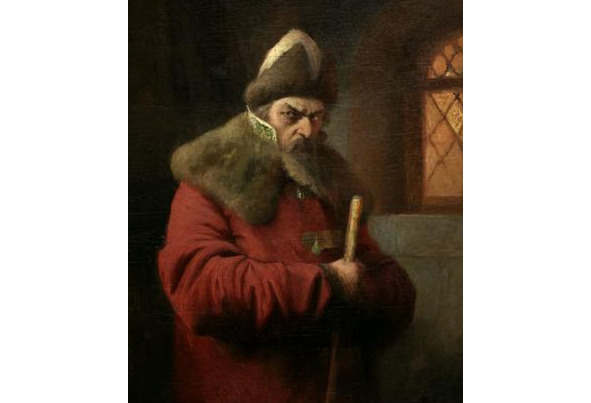
Further events are as follows:
…The capture of Kazan, the destruction of the capital of the Golden Horde, eighty kilometers from modern Astrakhan, Saray-Berke. The beginning of the king’s mental degradation. Oprichnina and terror, over forty years of which, eight thousand people part with their lives (relatively few for that era by European standards).
Second half of the sixteenth century. Again — the invasion of the troops of the Crimean Khan, now Devlet Giray. Prior to that, in alliance with the Turkish sultan, the Tatars conquered the mountainous principality of Theodoro on the western coast of the peninsula, inhabited by 200 thousand Christians, and are fully prepared for large-scale conquests.
The suburbs of the capital are burned, except for the Kremlin and Kitai-gorod. A year later, the second campaign and the battle of Molodya, one hundred and fifty kilometers south of Moscow, will take place. Crimean Tatars and Turks are carrying out a disastrous frontal attack on the Russian «Gulyai-Gorod», made up of fortified wagons. The extermination of the 120-thousandth Turkish-Tatar army leads to the fact that the Crimean Khanate loses most of its male population. However, in order to avoid small raids, the Russian state still has to pay a «commemoration», a tribute, that is, after all, a tribute, until the very epoch of Peter the Great.
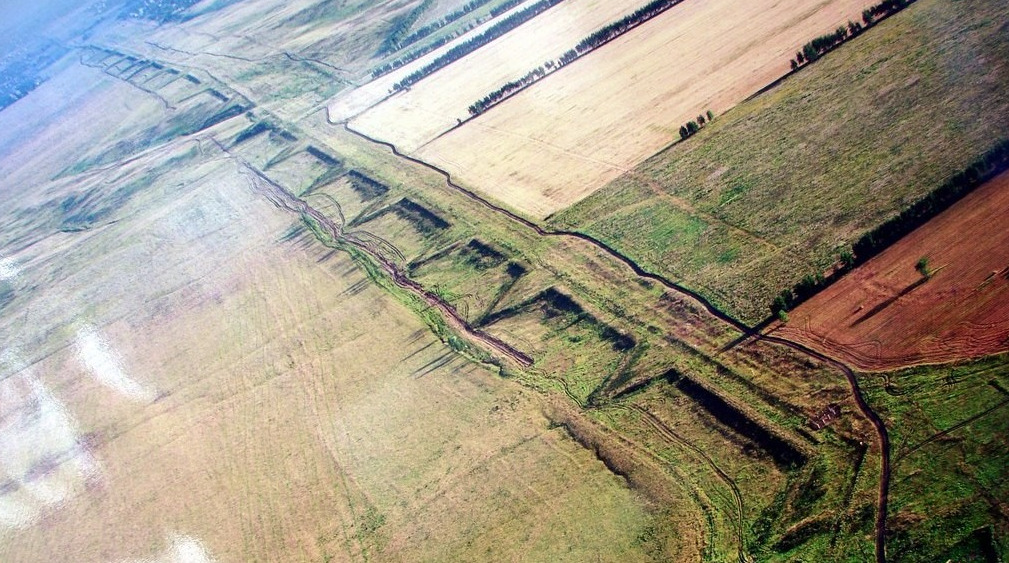
Destruction of the oprichnina, which did not justify itself in the struggle against external enemies (1565 — 1572). The capture of Isker, the capital of the Siberian Khanate, in alliance with the free Cossack Ermak. The incorporation of the remains of the Jochi ulus into Russia. The capture of Polotsk in 1653 poses a threat to the Grand Duchy of Lithuania (despite the fact that life in the regions captured by the tsar is not getting better), and determines many not entirely pleasant consequences for Russia. This is a practical, and not just a written, creation of a union state — the Uniate and Catholic Polish-Lithuanian «Rzeczpospolita». King of Poland, Prince of Lithuania, formally a vassal of the Ottoman Empire, Stefan Batory conquers Polotsk, moves into the depths of Muscovite Rus. Here he gets bogged down in the siege of Pskov (1581—1582). About 16,000 defenders of the fortress oppose 50,000 besiegers. Huge traveling tours, large-caliber artillery, mines and mine galleries are in use. In the end, the Polish-Lithuanian-Swedish army loses 20—24,000 people and lifts the siege (the Yam-Zapolsky peace treaty is signed).

…For the last six years of his life, the tsar was unable to walk on his own due to a shameful illness and moved on a stretcher. Ivan the Fourth is treated for syphilis with the usual for the Middle Ages and the beginning of our days, mercury ointments.
Mercury is mixed with animal fat, sulfur and rubbed into the legs. Alternatively, general mercurization is carried out by placing the patient in a closed room with a bowl of heated mercury. If the person does not die, a positive result appears. Mercury is an antiseptic, and the causative agent of the disease, treptonema, is very sensitive to it.
Ivan the Terrible dies. On the throne, according to the decision of the Zemsky Sobor, the middle son Fyodor ascends, «a fasting man and a silent man, a saint on the throne.» He reigns for 14 years, establishes peace in the Russian land with endless prayers. In fact, his guardian, the well-born boyar Boris Godunov, rules. At forty years old (1598), the tsar dies, leaving no heirs and no written will. Seven years earlier, as a result of an accident, the youngest son of Grozny died from his seventh marriage, an illegitimate and not entitled to the throne, Tsarevich Dmitry. The dynasty of the main, Moscow branch of the Rurikovich is interrupted. Fyodor’s wife, Irina — Godunov’s sister, a week after her husband’s death, announces her desire to get a haircut in a monastery. Indeed, she leaves for the Novodevichy Convent, clearing the way for her brother to the throne. The beginning of Godunov’s reign is successful. However, the prayers of his predecessor are apparently lacking. In 1601—1603, after endless rains and early frosts that ruined the harvest, a severe famine began. The cost of grain rises a hundred times. Household gentlemen and abbots of monasteries keep it in barns, waiting for prices to rise. The tsar does not dare to order to put the bread on sale. Half a million people die.
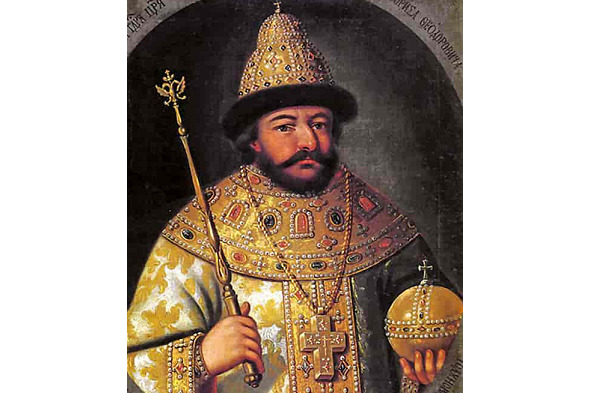
In 1604, with a detachment of Cossacks and Poles (14,000 soldiers), False Dmitry the First began a campaign from Poland to Moscow. The government army under the leadership of Vasily Shuisky, three hundred cannons with competent artillerymen, archers trained in alternate shooting, defeat the impostor. Everything would be fine, but next year, after a plentiful meal, having examined Moscow from the tower, Godunov feels «faint» and «having lost his tongue» dies. His sixteen-year-old son Fyodor (the Second) became the king, with the regency of his mother, Maria Godunova (Skuratova), daughter of Ivan the Terrible’s attorney Malyuta Skuratov. The king does not have time to marry the kingdom. A considerable part of the army takes the oath to False Dmitry.
«The Chosen Tsar», that is, Godunov, and his successors, in the opinion of the people, is not equal to the tsar «hereditary, the ruler of God by the will, and not by human will.» For this reason, as well as the fact that the tsarist troops unleashed on the ground brutal repressions against the supporters of the impostor, Muscovites are opposed to a new, albeit a good ruler. Does not improve the image of Godunov junior, his grandfather’s ancestry from the executioner Malyuta Skuratov. After reigning for a month and a half, Fyodor and Maria Godunova perish at the hands of traitors («the people are silent»). Patriarch Job, an ally of a failed dynasty, is defrocked. His place is taken by Archbishop Ignatius of Ryazan. Ksenia Godunova, the sister of the unlucky monarch, is exiled to the monastery by the winners.
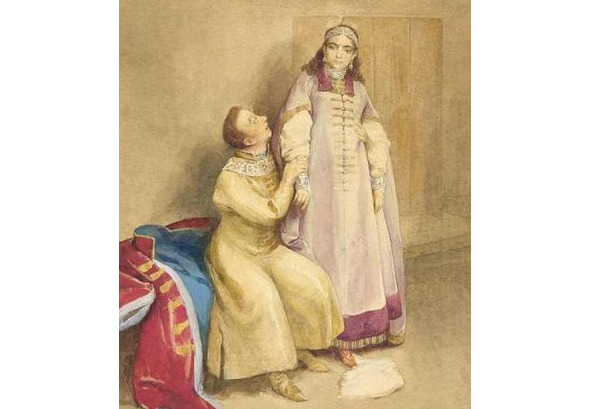
So, in June 1605, False Dmitry the First, having coordinated the details with the Duma, solemnly enters the Kremlin and meets with Dmitry’s mother, Maria Naga. She recognizes the new anointed as a son, believably, with sobs, perhaps in order to leave the walls of the monastery. Henceforth, Dmitry calls the Duma the Senate, and himself — the emperor («Caesar»). In general, his rule is good for the country. Many boyars are returning from exile. The enslavement of the peasants is suspended. Taxes are going down, the economy is picking up. Obstacles to movement within the state and outside it are removed. The Polish king does not receive the promised Russian lands. At the same time, plans for a war with Turkey, the still ardent Crimean Tatar Crimea, a personal guard recruited from the Germans, as well as frivolous European orders are not popular among the masses.
All this would be quite bearable, but in the middle of May 1606 two thousand Poles came to the wedding of Dmitry and his beloved, the daughter of the Polish governor Marina Mniszek. During the festival, drunken hussars bully passers-by, break into houses, and attack women. This is used by the ambitious boyar Vasily Shuisky. He summons the people, ostensibly to protect the king. In the course of events, however, the action spills over into its opposite. Fleeing from the crowd, the wounded Dmitry Pervy falls into the hands of a detachment of archers of the external guard. They are confused for a while, then join the winning side. The guards send for Maria Naga. From the mouth of the arriving messenger comes something like; «Martha answered, her son was killed in Uglich.» False Dmitry The first is he, or Dmitry, we do not know this — he is dying. The body of the recently so revered monarch, with a pipe inserted in his mouth, is carried for three days tied to a cart around the city. This is not good. Many grieve openly. At the tomb of the king, people mark ominous signs. In the end, the confidants of the new ruler dig up the body of the unlucky king, burn it, mix the ashes with gunpowder and shoot towards Poland.
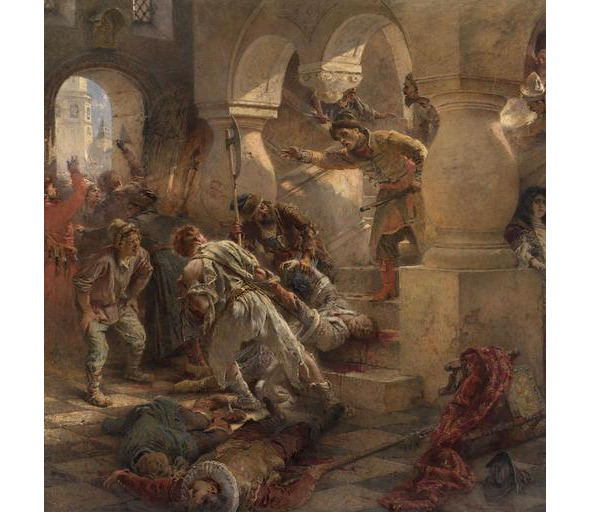
A crowd of adherents «cries out» Vasily Shuisky (the Suzdal branch of the Rurikovichs) king, and he becomes them. The Patriarch is replaced, from Ignatius to Hermogenes. An even less legitimate ruler will face severe trials from the very beginning. In October 1606, Moscow was besieged by the 100-thousandth army of the authorized representative of the next False Dmitry, galley rower, now the great voivode, Ivan Bolotnikov. A split is brewing in the camp of the rebels. Boyars and fugitive peasants are unable to form an alliance. Muscovites are ready to surrender. They only demand to show a figure only somewhat similar to a real tsarevich. But «voivode Dmitry» Ivan Bolotnikov does not have one at the moment. Mikhail Molchanov, one of the murders of Tsarevich Fyodor, a once confidant of False Dmitry the First, and, finally, an impostor, refuses to take part in the risky struggle personally. The storming of the capital, undertaken hastily in October, Bolotnikov fails. The army of the peasant leader, suffering defeat, retreats to Tula. Manages to recruit new forces, 40 thousand fighters, and carry out a second campaign against Moscow. A hundred kilometers southeast of the capital, near Kashira, in June 1607, a battle with the army of Tsar Basil the Fourth (Shuisky) takes place. The peasant rebels are well organized. They have effective artillery, they are one step away from victory. But, one of the commanders with a 4,000-strong detachment is cheating on Bolotnikov, striking the rear of the militia, sowing panic. The rebels scatter. However, many of the surviving militias are involved in the struggle of the parties, for or against the impostors of Dmitry II and III.
…The idea of Mikhail Molchanov with False Dmitry was correct for the army of Ivan Bolotnikov, but the search for a real person for this role dragged on. For some time, in Poland and Ukraine (the protectorate of Poland), the role of the prince was played by Molchanov himself. But, in Moscow they knew him too well. Only at the beginning of 1607, in Belarus, which was then part of the Polish-Lithuanian Commonwealth (the name of the Polish-Lithuanian state, tracing from Latin res publica — «Republic»), there is a person suitable for figure, age. In a halo of mystery, first as a relative of the tsar, Andrei Nagoy, False Dmitry II appears before the people at the end of the spring of 1607.
This False Dmitry does not have time for either the first or the second campaign of Bolotnikov against Moscow. He is late in Tula, where, on October 10, Shuisky’s troops, changing the direction of the river, forced the remnants of the peasant army to surrender. But, now 27 thousand people gather under his name. Poles, Don and Zaporozhye Cossacks, archers, nobles and fighting slaves wish to try their luck. False Dmitry wins several battles. Moscow, surrounded by stone walls (along the present Boulevard Ring), cannot be taken. Having camped in Tushino, False Dmitry blocks the capital. He manages to intercept Marina Mnishek, and, after some persuasion, marry her. Also, the «deputy tsar» manages to win over Metropolitan Filaret to his side. This priest becomes an understudy of the Moscow Patriarch. Dual power sets in. Shuisky and False Dmitry II (more precisely, Polish bodyguards who control their master) rule the country in parallel. Vasily the Fourth achieves some success with the help of the governor Skopin-Shuisky and the participation of Protestant Sweden, dissatisfied with the strengthening of Catholic Poland. Polish mercenaries openly show disdain for the Russian «tsarik». In the end, having climbed into the cart under the matting, False Dmitry goes to Kaluga.The spirit of the Bolotnikov uprising is still strong in this city. Only here the impostor begins to play an independent role, as if he is gaining a second wind. Remaining without a royal name, the Tushino camp loses its significance as the second Russian capital and is burned down. The Polish army is dispersed.
False Dmitry besieges Moscow with a new militia. An idea is ripening among the boyars-«shape-shifters». What if we remove both Vasily Shuisky and the impostor from the political field, and then the whole world choose a new tsar? In Moscow, the nobles really overthrow Basil the Fourth, forcibly shear the tsar into a monk and wait for retaliation from those close to False Dmitry. But they are in no hurry to fulfill this promise. After all, their positions are being remarkably strengthened. In order to fill the vacuum of power, the Seven Boyars elected the king of the Polish prince Vladislav Vaza, the eldest son of Sigismund III. Russian society is sharply polarized. The humiliated and insulted poor people, Cossacks and (Ukrainian) Cossacks, flock to False Dmitry, driven to Kaluga. The entourage of Vladislav Vaza, more precisely, his representatives in Russia, are replenished by nobles.
Outside the hierarchy, too homogeneous masses of the people come under the power of instincts. The concept of justice, as such, ceases to exist. The wheel of terror spins towards all suspicious persons. Moreover, False Dmitry expects to call on the Crimean and Nogai (Astrakhan) Tatars who are already moving to Central Russia to march on Moscow, in order to immediately improve all their affairs. But, his plans are not destined to come true. In revenge for one of the victims of the terror, the impostor is killed by his own bodyguard.
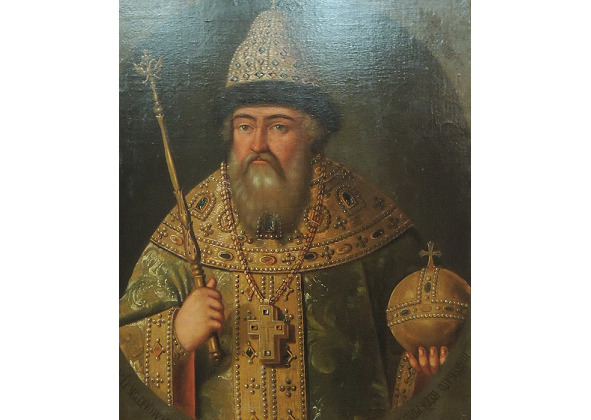
So, Vasily Shuisky is forcibly tonsured into a monk. Together with two brothers, he is kept in a castle near Warsaw. The former monarch has no children of his own. The three-year-old son of Maria Mnishek, Ivan, can claim the throne. Still, the prince is still too young. Tsar Vladislav is not popular among the people. In addition, he does not risk personally leaving Poland for Moscow and seems to be cooling off to the idea of becoming the ruler of Russia. The soil for the emergence of the third False Dmitry is still fertile.
And the impostor is declared, in January 1611, in Ivangorod besieged by the Swedes (150 kilometers west of the place where St. Petersburg will be). False Dmitry III manages to gather a militia in Pskov and even drive off the conquerors. However, having come to power, the impostor hesitates to advance to Moscow. He embarks on a dissolute life, commits violence and imperceptibly loses popularity. The conspirators removed the Cossacks loyal to him from Pskov, ostensibly to fight the Swedes who besieged the suburbs. False Dmitry senses something is wrong and tries to escape. They catch him, put him in a cage and take him to Moscow. The impostor is killed on the way or executed in the capital.
Moscow, meanwhile, is occupied by the Poles. After all, nominally the king is fifteen-year-old Vladislav Vaza. He is elected but not crowned. Patriarch Hermogenes (number one), initially loyal to the foreign ruler, realizing the plans of the gentry, frees the people from the oath. Hermogenes’ letters resonate primarily in Ryazan, where the people’s militia is already being formed. The Poles send Cossacks of Little Russia to destroy the Ryazan cities. One part of the registry perishes, the other takes the side of the people. Meanwhile, Nizhny Novgorod is also rising to the fight. In mid-March 1611, two militias unite near Moscow. There are a hundred thousand of them in total. The occupation forces number 5,000 Poles and 2,000 Germans. They carry out repressions in the city, set fire to houses in order to cope with the indignant people even before the start of the assault. Fire and steel kill seven thousand townspeople. Boyars and slaves dependent on them are in alliance with the Poles.
The militia does not dare to storm the white-stone walls. It creates its own Zemsky Sobor and a system of state power. However, between the two forces — the nobility, seeking to restore serfdom and the Cossacks, who want to keep their liberties, discord arises. The Poles use this. Their forged letters indicate that the Ryazan leader of the Lyapunov militia is determined to destroy the Cossacks. The Cossacks summon Lyapunov «to the circle», where they kill without trial or trial. As a result, most of the nobles leave the camp. Dying in the dungeon of the Chudov Monastery, Patriarch Hermogenes calls on the people to no longer obey the governors of the Moscow region D. Trubetskoy and I. Zarutsky. However, the archimandrite of the influential Trinity-Sergius Monastery, Dionysius, advocates rallying under their leadership. A large Cossack detachment remains at the siege of Moscow until the middle of the summer of 1612. When the units of the Second Militia approach, it leaves for Astrakhan and does not participate in further hostilities with the interventionists. Zarutsky has an important trump card — Marina Mnishek with the son of False Dmitry II. The ataman wishes to use it for his own purposes. At the walls of the capital, Trubetskoy’s forces remain, who were not directly involved in the murder of Lyapunov.
…The Second Militia is gathering in Nizhny Novgorod. It is based on the alliance of the representative of the nobility — Prince Pozharsky and the peasantry — the head Minin. A public treasury is created from voluntary donations. She generously pays for the help of experienced service people. In September 1612, after the deposition of False Dmitry III, it was possible to recapture the supply train for the besieged. Part of Moscow and Kitai-Gorod were freed from the gentry. What remains is the Kremlin, within whose walls Poles and Russian boyar families are already practicing cannibalism everywhere. By placing a regiment at its walls, Pozharsky protects the boyars and one of the two Polish detachments from lynching the surrendering prisoners. The second formation of the Polish-Lithuanian garrison falls into the possession of Trubetskoy’s Cossacks and completely perishes. The troops of Minin and Pozharsky enter the Kremlin on November 6, 1612. A solemn prayer service is held at the Execution Ground. The new Polish army, halfway to Moscow, stops at Volokolamsk.

In January 1613, an all-estate meeting, the Zemsky Sobor, was convened. The goal is to elect a new king. Among the applicants are Pozharsky, Trubetskoy, the Swedish prince Karl Philip, Vladislav Vaza and Ivan, the son of Maria Mnishek. The fate of this child is sad. In 1615, he was transported from Astrakhan to the capital, where he was executed along with the ataman Zarutsky.
The election is won by the son of Patriarch Filaret, Mikhail Fedorovich Romanov. Patriarchs are not supposed to have children, but Fyodor Romanov and his wife Xenia did not always have a monastic rank. They had to go to a monastery under Boris Godunov, but by that time they already had a son, Mikhail. In 1611, Filaret became the «named» patriarch in the Tushino camp, in parallel with Hermogenes staying in Moscow. Then the Poles take him to Poland, but there he also finds ways to communicate with the Zemsky Sobor.
So, to Mikhail Fedorovich and his mother, who are hiding from the persecution of the Poles in the Ipatiev Monastery (Kostroma), the embassy of the Zemsky Cathedral arrives and reports important news. The young man becomes the first king of the Romanov dynasty.
Three years later, Polish troops, together with the Cossacks of the gentry Pyotr Konashevich (Sagaidachny), are trying to restore Vladislav Vaza to the rights of king, storm Moscow, but unsuccessfully. Nevertheless, according to the Treaty of Deulina, concluded in 1618, Russia is losing 26 cities. Among them are Smolensk, Chernigov and Putivl, together with the population, except for the clergy and nobility, who are allowed to move to the Russian lands.

Vladislav Vaza still claims the Russian throne.
Mikhail the First is going to get married and, examining the line of brides, chooses Maria Khlopova. The girl does not like the queen mother. At her instigation, doctors conclude that «Maria Khlopova is fragile to the royal joy.» Other doctors come to a different conclusion, however, the last word is for the nun. Some time later, with the assistance of his father, who returned from Polish captivity, Mikhail almost marries Khlopova, but his mother’s influence outweighs. In the end, the tsar enters into an alliance with Evdokia Streshneva, the confidante of one of the boyars who came to the bride. The marriage is happy, except for the fact that, even with royal care, six out of ten children die before reaching adulthood (the usual statistics of that time).
In 1636 Michael declares war on Poland. Russian troops besiege Smolensk. The governors return to Moscow with 8 thousand soldiers, the initial number being 32 thousand. The state of affairs remains. The only plus is that the King of Poland, Vladislav, renounces his claims to the Russian throne.
In 1645, Mikhail’s son, Alexei Mikhailovich (Quietest), became tsar. During his reign, the reunification of Ukraine and Russia, the Copper and Salt riots and the church schism took place. The church council of 1666 supports the reform of the high priest Nikon, anathematizes the Old Believers and, regardless of all that, condemns the patriarch to imprisonment in a monastery. Open resistance to the new religious charter lasted until the capture of the Solovetsky monastery by the troops in 1676. In 1654, in connection with the annexation of Ukraine, a new Russian-Polish war began. The combined troops of Buturlin and Khmelnitsky are making progress. They are already fighting on the territory of ethnic Poland and Lithuania. The entry into the war of a strong player, Sweden, which snatched Warsaw and Krakow from the hands of Russia, forces the parties to the conflict to sign the Vilna truce. Nevertheless, there is an interesting prospect for the election of Alexei Mikhailovich to the Polish throne.
Ukraine then, both in colloquial speech and in all official documents, is called Little Russia, or the Hetmanate. The agreement between the Russian tsar and the Cossacks is drawn up in the «Belarusian language». Muscovite Rus at that time was called «White». Later, the toponym shifts to the West and denotes present-day Belarus.
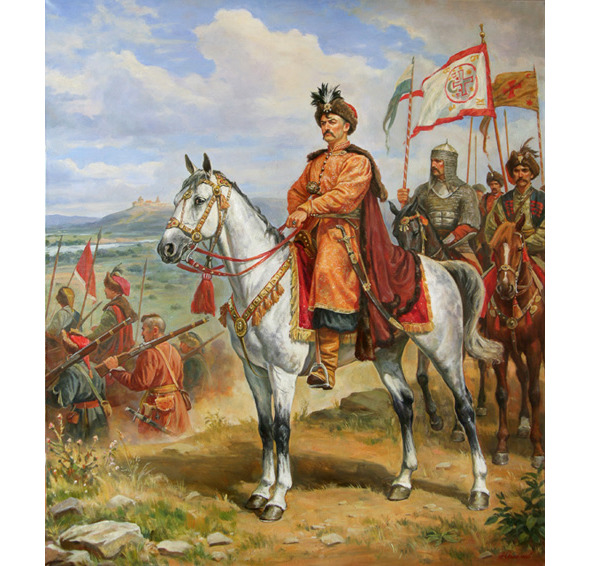
In 1658 the war continues, but without the deceased Bohdan Khmelnitsky.
The former secretary, Ivan Vyhovsky, who himself became the «hetman of the Grand Duchy of Russia», carries out mass repressions among the Cossacks and concludes a separate agreement with the Commonwealth. According to its clauses, the Hetmanate becomes a federal unit of Poland. In the same year, Vyhovsky cracked down on the Cossack foreman, who was trying to find out where the tsarist money allocated for the maintenance of the Zaporozhye army went.
In 1659, Vygovsky succeeded in attracting the Crimean Khan Mehmed Giray the Fourth with a 30,000-strong army as an allies. Together they defeat the Russian detachment of A. Trubetskoy, which is besieging Konotop. Loss of seven for seven thousand. In Ukraine, more and more uprisings break out against Vyhovsky. The next hetman is the 18-year-old son of Bohdan Khmelnitsky. Yuri is not the successor of his father’s work, speaking, in general, against the unification of the lands. The offspring of Khmelnytsky is a henchman of the Poles, Ottomans, and does not pursue an independent policy. Realizing that the hetmanship is not for him, he becomes a monk, gets to the Tatars, Turks, who in the end deprive him of his head.
In the fall of 1663, the Polish army, plus the Crimean Tatars and detachments of the Principality of Lithuania, led by King Jan Kazimierz, made the last major operation. With heavy fighting, it occupies a dozen cities. The initiative is waking up in the Russian commanders. Competently leading the troops, they perform deceptive maneuvers, block the enemy garrisons, and raid the rear. The Polish-Lithuanian army retreats, losing three quarters of its strength. In 1666, the right-bank hetman Petro Doroshenko, who declared himself a vassal of the Turkish sultan, revolted against Poland. Thirty thousand Crimean Tatars come to the aid of his fifteen thousand Cossacks. The turmoil lasts for five years. Poland is restoring the state of affairs, but it is completely exhausting its strength. In the end, on January 30, 1667, the Andrusov armistice was signed between Russia and Poland. Rzeczpospolita recognizes the annexation of the Left-Bank Ukraine, Smolensk, the Chernigov Voivodeship, a number of small towns, preserves the Right-Bank Ukraine and Belarus. Russia is not yet in a position to retain some of its large territorial acquisitions.
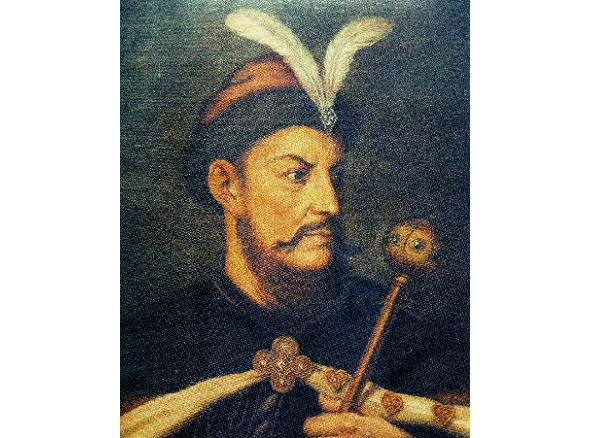
…In the summer of 1672 Poland was attacked by the Ottoman Empire. By this time, the Turks and their vassal Doroshenko already owned the entire Right-Bank Little Russia. There is Islamization, the alteration of churches in the mosque, the recruitment of boys to janissaries, girls, again boys to harems, and the like. Fearing the invasion of the warriors of the Port on the Left Bank Ukraine, and not wanting to humiliate the Christian world, Russia enters the war with Turkey. Relations with Poland immediately warmed up. Cossacks and Cossacks (usually, Zaporozhye Cossacks are called through the vowel «O») are invited to attack the Crimean Tatar and Turkish possessions from the sea. Russia is trying to form a European coalition and even become its head. She does not succeed in this, but at least this attempt itself is evaluated favorably by the Western community. The fighting is covered in detail by the European press.
Poland is losing the war and officially gives the Right-Bank Ukraine to the Ottomans. Alexei Mikhailovich considers this a reason for extending the power of the crown to the whole of Little Russia, in the event of a victory over the mighty Port, of course. Events are not developing quite the way the Russians want them to. They are fighting the Turks and Crimean Tatars. Those intensify the repression against the population. The population falls away from the Ottomans and is immediately given over to the well-functioning Polish administration. A significant part of the inhabitants flees to the Russian Left-Bank Ukraine. The city of Chigirin occupies a special place in Ukraine at that time. It is the unofficial capital of the Hetmanate, a large Cossack camp and covers the strategic crossing of the Dnieper. The Russian-Ukrainian army captures the city, forces Doroshenko to swear allegiance to the Russian Tsar and withstands, intermittently, two Turkish sieges. The second of them (1678) shows the lack of experienced gunners, while the Ottoman guns shoot almost without a miss. Four Turkish guns are «super heavy». It takes 32 buffaloes to transport each. The ratio of forces in people is 1:10. The Turks are losing 30 thousand fighters from the 120-thousand army. The Russian-Ukrainian coalition is losing 15 thousand of the original 65 thousand. In the end, Romodanovsky’s troops, having formed in a huge square, retreat to the Dnieper and are evacuated to the Left-Bank Ukraine.
The war is reaching a dead end. Right-bank Ukraine, in any case, is arranged according to the Polish model. It is difficult to win back and keep it without an alliance with Poland. The Poles themselves, as a condition of the alliance, require huge sums to support their troops. In the end, according to the Bakhchisarai Peace Treaty (1680), the Port recognizes the entry of the Left-Bank Ukraine and Kiev into Russia. Right-bank Little Russia is now ruled by a Turkish vassal, the Moldovan ruler Gheorghe Duca. The Zaporizhzhya Sich becomes independent from Moscow. As before, Russia pays a semblance of tribute to the Crimean Khan.
In 1676, having declared the fifteen-year-old Fedor (mother — Maria Miloslavskaya) heir, the tsar died of a heart attack. Fyodor the Third reigns happily, but not for long, five years, leaving no heirs. It is not he, and not his brother Ivan the Fifth, who becomes the great emperor, but Peter the First, born in marriage with his second wife Natalia Naryshkina.
The Naryshkin clan declares that, dying, Tsar Fyodor personally handed over the scepter to Peter. The Miloslavskys angered the archers with rumors that the Naryshkins strangled Tsarevich Ivan. The military, despite the fact that they are introduced to the princes with their own eyes, kill several boyars. They do not dare to deal with Peter.
As a result, representatives of the Miloslavsky and Naryshkin families were married to the kingdom in 1682 at the same time. For the princes, they even arrange a throne with two seats. In fact, an active daughter from the first marriage of Alexei Tishaishy, the second regent of the royal brothers, Princess Sophia, rules.
In 1686 the tsarina signed the «Eternal Peace» with Poland. Kiev is assigned to the Russian kingdom (146 thousand rubles of compensation are paid), Zaporozhye, Smolensk, Chernigov. A number of devastated lands are included in the buffer territories. In addition, Russia joins the countries leading the war with the Ottoman Empire, the Holy League. In fulfillment of allied obligations, the First and Second Crimean campaigns are being undertaken. Both end the same way. Almost 100-thousand army, suffering deprivation of supplies and fresh water, returns back. In the first case (1687), the army gets to the Konka River, located 150 kilometers south of Dnepropetrovsk. In the second (1689) — it reaches Perekop. The idea of building fortresses to accumulate supplies is not being implemented. The troops of the more proactive Grigory Kosagov capture the strategically important Ochakov (Kara-Kermen, Black Fortress), located on the Black Sea coast near the mouth of the Dnieper. Only then, finally, the Russian kingdom ceases to pay tribute to the Crimean Khan.
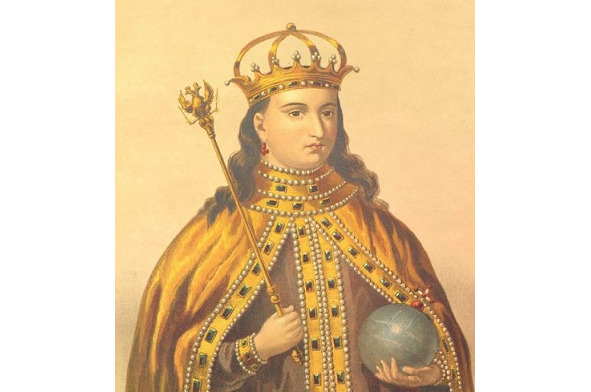
The first, the Nerchinsk agreement with China is concluded. In general, Sophia’s reign was not marked by special events. Russia is accumulating strength to withstand the era of Peter the Great. Peter turns 17 in May 1689, and at the insistence of his mother he marries Evdokia Lopukhina. Love lasts a year. The Tsar finds solace in the arms of the daughter of a goldsmith from the German Suburb, Anna Mons. Despite the beginning of adulthood, almost no one around Peter takes his orders seriously. Rumors of an impending assassination attempt reach the king. Together with his closest relatives and confidants, Peter takes refuge in the Trinity-Sergius Monastery. From here he sends instructions to the regimental commanders to appear with a dozen people in person. Arriving archers are waiting for the sovereign’s mercy, vodka and feasts, but Peter himself leads the exemplary life of the Moscow Tsar. Sophia loses her supporters. She has to retire to the Novodevichy Convent, although she does not become a real nun until the suppression of the Strelets uprising. Ivan the Fifth meets Peter in the Assumption Cathedral and in fact gives up all power.
Peter likes to fight. In 1695 he carried out the First Azov campaign. More than 30,000 troops travel along the Don to the Azov (the top of the Sea of Azov), on transport ships and by land. Here it is revealed that it is impossible to take the city without warships. Only two fortresses overlapping the river are captured.
In the village of Preobrazhenskoye, on the banks of the Yauza, not far from Moscow, new transport and military ships are being built in a wild haste. They are disassembled and transported to Voronezh, to the Don, where they are assembled again. The number of troops reaches 70 thousand. In May 1696, Azov again fell into a siege. In July, after massive shelling, the garrison surrenders. According to the agreement, the Ottomans leave the city with their families and movable property. Voivode Shein becomes the first Russian generalissimo. Under the Constantinople Peace Treaty of 1700, Russia is officially exempted from paying tribute to the Crimean Khan. She receives Azov and a number of adjacent territories. But, the main goal — access to the Black Sea, even though through the Kerch Strait, is still not achieved.
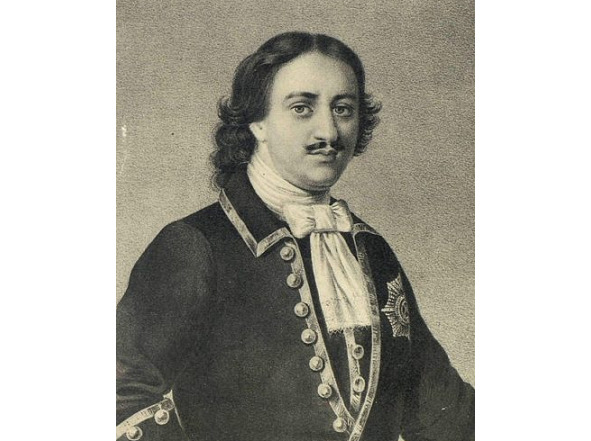
In 1697, Peter the Great, who a year ago became the autocratic tsar, presented as a «sergeant of the Preobrazhensky regiment», set off on a journey across Europe. The goal of the «Great Embassy» (60 people) is to gain allies in the fight against Turkey, purchase weapons and hire craftsmen. There are many inconsistencies during this period of government. Meetings with the English king William III in Utrecht, the ruler of Austria Leopold the First, with Newton, Leibniz, Levenguk, Halley (the same astronomer), are still classified as «secret». Some historians believe that Peter the Great does not participate in the Embassy at all.
.. It is impossible to reach an agreement with Austria and Holland on an alliance against the Ottomans. Vienna refuses even to recognize the transfer of Kerch and the corresponding strait to Russia, if they were captured by it. The young tsar has personal friendship only with the king of the Commonwealth Augustus II. For the election of his candidacy at the Polish Sejm, Peter the Great at one time made certain efforts and resources. Among other things, colleagues of the same age manage to agree on a joint war against Sweden.
Herbariums, tools and 15,000 small arms are being purchased.
In the summer of 1698, having received news of the uprising of the archers, the tsar returned to Moscow. The rebellion had already been suppressed by that time. The instigators have been punished. The troops of Generalissimo Shein, practically with one artillery, defeated a three-thousandth detachment of archers. Princess Sophia, the main reason for the revolt, becomes a full-fledged nun and goes to the Novodevichy Convent. He is in charge of the reprisals, according to the definition of Prince B. Kurakin, «… by his appearance as a monster, by his temper an evil tyrant, a great unwilling person to do good to anyone, drunk all the days», the ruler of Russia in the absence of Peter, Prince Caesar Fyodor Romodanovsky. The Emperor, however, needs more sacrifices. For the first time, Muscovites see the Russian Tsar in the guise of a fierce executioner. He not only personally cuts off the heads of the archers, but makes the eminent boyars do the same. Some rebels are deprived of their lives in a progressive «overseas» way — wheeling. Two thousand people die on the scaffolds. Several hundred underage «sons of the regiment» receive a shameful stigma and are sent to an eternal settlement in Siberia. Sixteen rifle regiments that did not participate in the uprising are disbanded.
…Then that significant number of Russian good people decide that Peter the First (or the one who became him) is «the beast that came out of the abyss» Antichrist and Miroed. Confirmation of this judgment is the «All-Sure Councils» regularly convened on the island in the middle of the Yauza, where Orthodox rituals are parodied. The naming of church ranks and rituals are being altered using profanity. The «pontiff» chosen by the cathedral floats in a ladle in the middle of a vat of alcohol, while naked men and women of the highest boyar families drink wine and sing obscene songs.
Russia is a member of the Northern Union, created on the initiative of the rulers of Saxony and Poland. The general direction is the war with Sweden, the king of which, Charles the Twelfth, seems to other monarchs to be insufficiently experienced in military affairs. Peter’s aspirations are Karelia and Ingria (aka Ingermanlandia, the future Leningrad region). In addition, he is driven by personal resentment — a cold welcome in the then Swedish Riga during the Great Embassy.
In 1700, Russian troops, 35 thousand fighters, mostly recruits, with light and varied artillery, with insufficient supplies, besieged Narva. Once this city intended to include in its possessions the prince (or tsar) Ivan the Third. To reduce human losses, he built the Ivangorod fortress opposite him. Then the Russian monarch was successful. However, 80 years later, the Swedes recaptured Narva and, connecting the defenses of the two cities with a fortified bridge, created a powerful citadel.
Charles the Twelfth, having forced the allies of Russia to withdraw from the war, rushes to the aid of the besieged. Sheremetyev’s detachment enters into clashes with the advanced units. The prisoners, in accordance with the agreement with the king for this case, announce the size of the Swedish army at 50 thousand fighters. Believing this information, Peter leaves the army. Maybe he wants to quickly call other regiments to the place of battle, meet with an ally, the Polish king, or, in the end, he is simply afraid of perishing. A certain Dutch duke remains in command of the army.
The actual number of Karl’s troops is 8—9 thousand fighters. The king is building soldiers in columns and so attacks the Russian army. The latter is a six-kilometer line, five to six rows of soldiers within their camp. Columns of Swedes break through it like a crowbar. In the ranks of the regiments the cry «The Germans are traitors!» Is heard. Fearing beating by soldiers, foreign officers surrender. Preobrazhensky, Semenovsky and Lefortovo regiments, fenced off with carts, are resisting. Later they will be allowed to leave. Some units leave the battlefield with banners and weapons, but without the convoy and artillery, others without all of the above. The losses of the Swedes are 700 soldiers, the Russians — 9,000, as well as all, except for 5 cannons out of 184, artillery. Charles the Twelfth is a good general, but a weak strategist. Instead of an immediate attack on Moscow, he turns his gaze to Poland and Saxony. Meanwhile, the troops of Boris Sheremetyev, who was not young at that time, but experienced, began to learn the art of war in practice. One by one, they break up detachments from the fifteen thousandth Swedish garrison left in Ingermanland and Livonia (present-day Lithuania). The whole of Narva is in the hands of the Russians. At its mouth, on the territory of Fomin Island, two and a half by four kilometers, with a village of thirty households and forty inhabitants, on May 27, 1703, Peter the Great founded St. Petersburg.
Peter’s Polish friend, Augustus II, loses the Fraustadt battle to Karl, in which the auxiliary Russian corps also participates. 4500 Russian soldiers are killed (all 500 prisoners of war by the Swedes were executed), 700 allied Saxons. Karl has at his disposal «an immense number of prisoners» of the Germans. The losses of the Swedes — 450 people. August with a 12-thousandth army stands 25 kilometers from the battlefield and does not take part in the battle. In February 1706, a 20,000-strong Swedish army besieges a 40,000-strong Russian and Saxon army near Grodno. Peter instructs Commander Menshikov «not to accept in an open battlefield.» During the siege, retreat and crossing the Neman, the Russian army loses 17 thousand people. Because of the drift of ice, Karl’s troops miss her. The Polish king, who left Grodno in advance, concludes the Altranschnedt peace, breaks the alliance with Russia and abdicates the throne. The Great Lithuanian army is at the disposal of the Swedish protege in Poland, Stanislav Leszczynski. In June 1708, the Swedish monarch embarked on a long-planned large-scale campaign to the East. Its purpose, according to a group of historians, is the complete destruction of the statehood of Russia, its division into specific principalities, the rejection of Pskov, Novgorod, the annexation of Ukraine and other Western Russian territories. Another well-known version is that Karl plans to establish a buffer Pskov-Novgorod Republic in the north, return all the Swedish territories captured by Peter, and establish a direct protectorate over Eastern Ukraine.
By the beginning of the Russian campaign, Charles’s army reached 120 thousand people. Of these, 38 thousand are the invading army. The number of regular forces of Peter — 200 thousand, plus 100 thousand in the irregular troops of the Cossacks and Asian peoples. Defense spending reaches 80% of the budget. The country is being militarized. Grain is brought to the cities, which are declared fortresses. The Moscow Kremlin is once again becoming a full-fledged citadel. Bastions are attached to it. The ditches near the walls, dried up since the seventeenth century, are filled with water from the Neglinka River.
The trek of the Swedish king starts from the outskirts of Minsk. Both armies are swiftly eating away supplies from the local population. Menshikov orders to burn cities — Vitebsk, Orsha, Mogilev…
Nine months before the Battle of Poltava, in October 1708, a battle will take place near the village of Lesnaya (east of modern Belarus) with a 12.5 thousand Swedish-Finnish detachment accompanying 7 thousand convoy wagons with provisions, artillery and ammunition. The so-called «corvolant» — «flying detachment» of Peter the Great has the same number of soldiers and officers. But these are the guards, the noble cavalry thirsting for victories, the Preobrazhensky and Semenovsky regiments. The majority of the Swedes are not fully motivated Finns, Karelians, residents of the territories of the modern Baltic. However, the battle is fierce. The detachment of General Levengaupt loses 4,000 killed, 800 prisoners, 1,500 deserters. Charles the Twelfth receives only 6,000 new soldiers — without artillery, ammunition and food. The Russian army loses 3,000 people.
Due to the lack of food, the Swedes turn south, to the Seversky Territory (North-Eastern Ukraine). Hetman Mazepa, who laid the symbols of hetman power under the feet of the Swedish king; banner, mace and military seal, now openly promises support to Charles the Twelfth. In the city of Baturin, he collects supplies of food, ammunition and three hundred so necessary for the Swedish army cannons. A very irritated Peter gives orders to Menshikov to set the city on fire. Alexander Danilovich is following the order. Defenders perish — 5—7 thousand Cossacks, 4—5 thousand inhabitants, and 4 thousand besiegers. In March 1709, the Cossacks of the Zaporozhye Sich went over to the side of the Swedes.
Charles’s army, already somewhat discouraged, circles around Little Russia, then, obeying the king’s whim, begins the siege of Poltava. They are opposed by 5 thousand military and, which is not confirmed, 2.5 thousand local residents. Three assaults, preceded by explosions of underground mines, fight back with great damage for the attackers. Above all, the lack of artillery and gunpowder affects. Charles’s army loses 6 thousand soldiers and officers, suffers hardships when Sheremetev arrives at Poltava with the main army, and a week later Peter the Great.
…During reconnaissance, on his birthday, Karl is wounded in the foot of his left leg. Perhaps this circumstance affects the clarity of his thinking during the battle. The plan of the Swedish monarch is to attack in the early morning, more precisely at night, when the advantage of the Russians in artillery comes to naught. At 2 o’clock in the morning, July 8, 1709, having lingered somewhat during the formation, the Swedish army moved to the battlefield.
Sheremetev’s idea is a novelty in military affairs of that time. The main point is to create a chain of six fortifications located at a distance of a shot between the forests. Two more redoubts are being built behind this line. The attackers would have to either storm them, or go to the main army, exposing the flanks to fire. An innovative, albeit dubious, idea, when applied with the irritation of a wounded king, is quite successful.
At about 3 a.m. the cavalry of Charles the Twelfth slipped between the redoubts almost without loss. She gets involved in a battle with the Russian cavalry, which exposes the enemy to the weapons and artillery fire of the fortifications. Trying to help the Swedish infantry get bogged down in the attack of the redoubts and come under fire from the camp. Peter gives the order to withdraw the cavalry. She, turning in the sight of the enemy, gallops three kilometers to break away from the pursuit. This maneuver creates the impression of the defeat of the Russians in the Swedes’ camp.
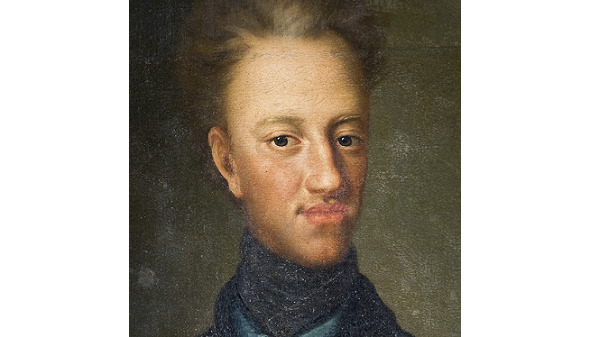
Both sides take time out to regroup and continue the battle. At nine o’clock the Swedes attack again. This time, captured or blocked redoubts do not divide the armies. The forces of the opponents are. Russians — 25,400 infantry, 9—12,000 noble cavalry, with 72 guns, Swedes — 8,300 infantry, 9,000 cavalry, 4 cannons used for signaling. This is followed by a frontal three-hour battle. The career infantry of Charles the Twelfth sees a higher purpose in battle. Accustomed to adversity, Puritans march into battle, singing religious hymns. At one time, Protestant Swedes were the best fighters in Continental Europe. An important role in the battle is played by the Russian core, breaking the Swedish king’s stretcher. The rumor about the death of the commander discourages the army. The Swedes retreat to the wagon train, where 7,000 cavalrymen and several thousand Cossacks are in reserve, then to the crossing over the Dnieper. Ahead of the retreating Karl with only a few dozen retinues. He manages to escape to the Ottoman allies, now Ukrainian Bendery. Here the king, without getting out of bed, will appeal to the Swedish government to send new troops for a year. The remaining army, including 12,575 soldiers and 3,000 non-combatants, surrenders.
Losses of the parties in the battle. Swedes — 9,300 killed, 15,000 prisoners. Russian army — 1400 dead. Captured Swedes are marching defeated through the streets of Moscow. They will return home, due to the ongoing war, only after many years.
In 1710, without waiting for the end of the armistice, wishing to return Azov as soon as possible, and in response to Peter’s too zealous demands to expel Karl from Bendery, Turkey declares war on Russia.
It occurs to Peter that the peoples of Wallachia and Moldavia will be happy, having got rid of the Ottomans, to accept his protectorate, or even complete absorption. In March 1711, taking in addition to the 80-thousandth army, a friend of his heart, Ekaterina Alekseevna, deep in position, he set off on the Prut campaign. Already in mid-July, from the raids of the Tatars, disease, lack of food and water, the army is reduced to 56 thousand. Even before the start of major battles, it becomes clear that it is time to retreat. An almost 170,000-strong Turkish army and a 20,000-strong detachment of the Crimean Tatars press the Russian army against the Prut River. The military camp is under continuous fire from 160 cannons. The Grand Vizier is quite complacent. For a bribe, he agrees to the terms of peace proposed by Peter. Manages to bargain for more than the king expects, already quite willing to lose all northern conquests. This is the return of Azov to the Turks, the destruction of Taganrog and other Russian settlements near the Sea of Azov. The best ships of the southern fleet are sold to the Sublime Port. The rest have to be set on fire.
…In 1712 Peter will be married to his mistress Martha Skavronskaya, the widow of a Swedish dragoon, now Catherine.
In 1718, the son of Peter the Great, Alexei, takes refuge in one of the castles of Naples. The Emperor of the Holy Roman Empire allows the emissary of the Russian monarch to speak with the Tsarevich. The diplomat presents false evidence that the extradition of Alexei by the Austrian government has already been decided. The prince agrees, not knowing that his request for help to Charles the Twelfth has received the king’s approval. The entire Swedish army could be given to the rightful heir. At home, Alexei is immediately arrested. He dies in prison from torture, stroke, exacerbation of tuberculosis, it is not known exactly. Three priests, with whom he conferred, are killed. The Tsarevich abdicates the throne in favor of the son of Peter the Great from his marriage to Catherine, as well as Peter, who later dies at the age of four. His only son, born in a marriage with the German princess Charlotte, again Peter, would later become the Russian emperor.
.In the same year, the first full-fledged census («revision») of the population starts. Some lists include peasants and disenfranchised courtyard slaves. The idea is to raise the latter to the level of the former. But it turns out differently. The landlord must pay tax on each servant. It’s clear. But the peasants, who have their own means of production, and the skills that make it possible to earn money, wherever, now have to pay through the landlord. A person is freed from the need to personally lay out one and a half rubles for himself and his sons every year, but falls into real slavery to the nobleman, the head of the accounting department.
…Peter the First roughly understands what happened. It even seems that he does not like this turn of events. But to stop what is happening, in view of the monolithic opposition of the nobles, the powerful sovereign is no longer able to.
In 1721, the Nystadt Peace Treaty was signed between Russia and Sweden. Russia returns the conquered Finland, pays compensation for the rest of the northern territorial acquisitions. At the same time, Peter takes the title of emperor.
In 1722 Peter the Great carried out the Persian campaign. The reason was attacks on merchants and a Russian reconnaissance detachment. The global goal is to restore trade routes to Central Asia and India by conquering the Caspian Sea and adjacent territories. India itself is also a mouthwatering bite. The forces of the Russian army — 30 thousand people, 200 guns, 270 transport ships. Derbent, Baku, the territories of modern Dagestan and Azerbaijan have been under the rule of Peter the Great for only ten years. In 1732—1735, in order to avoid a new major war with the Ottoman Empire, these areas were returned to Persia
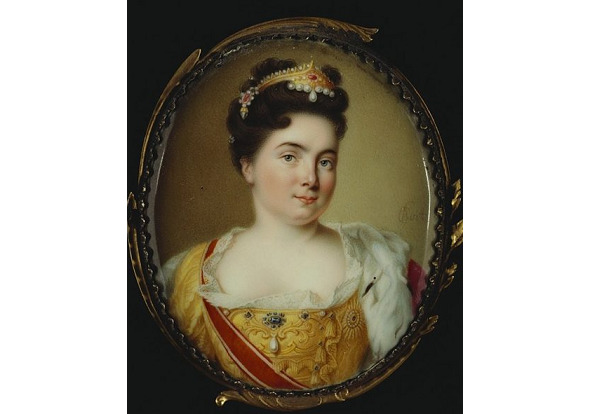
Peter begins to think about a successor. He and his brother Ivan the Fifth have no more sons. The new decree, allowing the monarch to appoint any person, including a woman, as heir to the throne himself, causes some ferment in society. In the same 1724, the tsar’s kidney stone disease was aggravated. Catherine is suspected of adultery. Her candidacy for a high post is being questioned.
In February 1725 Peter the Great dies.
For two years Catherine the First (Skavronskaya), the king’s widow, has ruled. She exhausts her strength at balls and feasts, and in 1727 she leaves the sublunary world.
The last representative of the Romanovs in a straight line, eleven-year-old Pyotr Alekseevich, the son of Tsarevich Alexei who died in prison, ascends the throne. Almost immediately A. Menshikov, the «semi-sovereign ruler,» betrothed him to his 16-year-old daughter Maria.
The new rulers, not lovers of hasty changes, are moving the capital back to Moscow. The military fleet is in decline. The boyars and the Supreme Privy Council rule, and not an heir, prone to wine since childhood. Locally and centrally, the nobles do whatever comes to their mind.
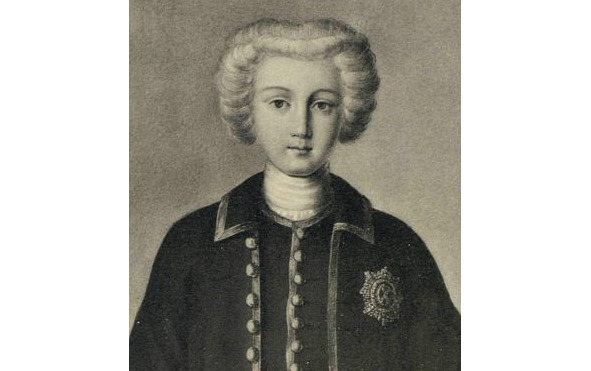
In 1730, Peter II died of hypothermia and fever, which complicated the disease with smallpox. This actually ends the Romanov dynasty.
At the Privy Council, the Dolgoruky presents a forged testament to the emperor; to give the rights to the throne to the bride of Peter II, Ekaterina Dolgoruka. The powerful Golitsyns make their competitors laugh. Anna Ioannovna, daughter of Peter the Great’s brother, Ivan the Fifth, widow of the Duke of Courland, becomes Empress.
In 1735, another war starts with Turkey and the Crimean Khanate. The Russian army captures Azov and Ochakov. With an interval of a year or two, three trips to the Crimea are carried out. The army even reaches Bakhchisarai, the capital of the khanate, but returns due to lack of food and water. The cholera epidemic that broke out in 1736 reduces a significant part of the army, as well as the entire population of the peninsula. The European allies are withdrawing from the war. According to the Belgrade Peace Treaty of 1737, Russia loses all conquests, except for Azov, subject to the tearing down of its fortifications. Exit to the Black Sea and trade are allowed exclusively on Turkish ships.
Laughing at the Dolgoruky, trying to make the monarchy manageable, the Golitsyn brothers fall into disgrace on charges of high treason.
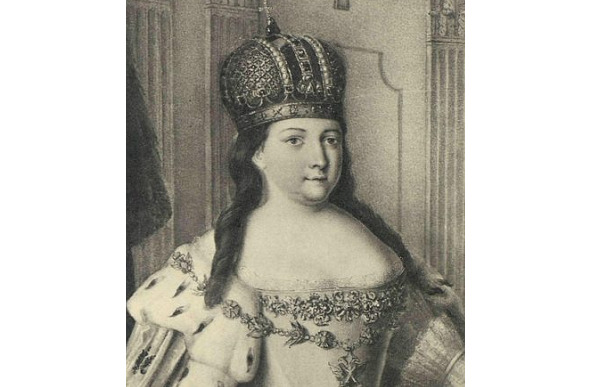
In 1740 Anna Ioannovna dies from an attack of urolithiasis. According to the will, the son of the empress’s sister, two-month-old Ioann Antonovich, becomes the emperor. With the regency of the mother and the supervision of Biron, the baby rules the year. Further, to the throne, with the help of the Guards of the Preobrazhensky regiment, who do not want to fight in cold Finland against the Swedes, Elizaveta Petrovna, the daughter of Peter the Great, who was born before the tsar married Catherine Skavronskaya, rises to the throne. All portraits, church books, passports, coins with the image of the juvenile king are confiscated. Ivan the Sixth together with his parents goes to the Shlisselburg Fortress. Here he, playing with spiders and rats, is kept in solitary confinement, out of communication with people.
In 1741, Sweden, not yet realizing that it had entered the category of militarily second-rate European powers, wishing to return the Northern Territories, declared war on Russia. The main actions take place all in the same Finland. A year after her accession to the throne, Elizabeth inclines the people of these lands to the side of Russia. The main carrot is the possibility of creating your own state. The forces of the parties are approximately equal. The losses are also about the same. The Russian army 10,500 people, the Swedish — 12,000. In the end, the Swedish army capitulates, goes home, leaving the Russian artillery.
In 1757, as part of a broad coalition, Russia launched military operations against Prussia. The reason is the illegal annexation of Saxony. Together with the Austrian troops, during the Battle of Kunersdorf, she manages to defeat the army of Frederick II. Of the 48 thousand soldiers, according to the German monarch himself, only 3 thousand remain alive. But the allies get entangled in orders and, instead of an immediate march on Berlin, disperse. Presumably, this «miracle» is associated with Catherine-Friderica, the future empress and her entourage — the commander-in-chief Apraksin and Chancellor Bestuzhev, who are playing their secret game at the court of Elizabeth. The second «miracle of the Brandenburg House», which Adolf Hitler hoped for a third time later, will take place in January 1762. Peter III, who ascended the throne, an ethnic German, a fanatical admirer of Frederick II, will break the treaty with Austria without explanation and conclude a separate peace.
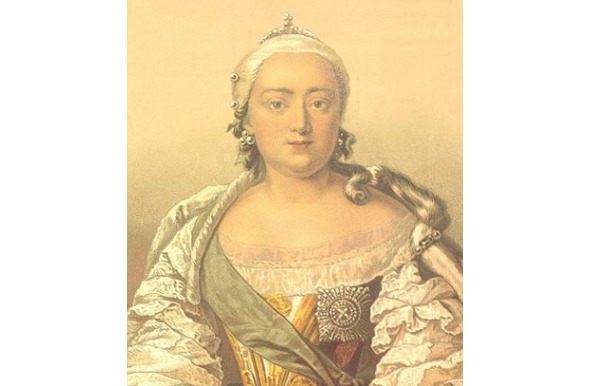
In 1761, the childless and unmarried Elizabeth dies of an undiagnosed illness after a sudden throat bleeding. She is inherited by the grandson of Peter the Great, the son of his daughter Anna from his second marriage and the Duke of Holstein, the Holstein-Gottorp (German) ducal dynasty. Actually, according to the dynastic rules of inheritance, Anna joins this clan. Her children can no longer be «Romanovs» at all. But, in the conditions of a political crisis, this trifle is not paid attention. The main thing now is at least a bit of «royal» blood.
So, Karl Peter Ulrich, aka Peter the Third Fedorovich, occupies the Russian throne. The health and upbringing of the boy is affected by the fact that at one time the prince was flogged with rods, put his knees on peas, and subjected to more sophisticated tortures. The young man seems to be inclined to military affairs. However, he attaches importance not to the maneuvers and material support of the army, but to drill and parades. At the age of 17, already at the Russian court, Peter was married to Sophia Frederick Augusta, a native of the German city of Stettin, the future Catherine II. The dignitaries even assign mentors to the couple of monarchs — an exemplary married couple. But, it doesn’t help much. Instead of fulfilling the duties assigned to her husband, according to contemporaries, in the evenings the prince plays with the tin soldiers. Peter is unpleasantly surprised when, in 1754, Catherine still gives birth to his son Paul (the future emperor). However, the emotional attachment between the spouses remains.
Under Peter III, some sensible laws begin to work, but these are, rather, the homework of influential nobles. The monarch’s own initiative is the return of East Prussia, which has been part of the Russian Empire for four years, to its former owner, beloved Emperor Frederick II. Not quite fulfilled idea — reduction of church property, abolition of monastic land tenure, ban on icons. The third remarkable idea of the native of Holstein is a dynastic war with Denmark, a long-time ally of Russia, for the Schleswig (territory in the south of Denmark) taken from the German ancestors of Peter III.
Peter is also thinking about marrying his favorite, Elizaveta Vorontsova. Relations with his legal wife, Catherine, naturally deteriorate somewhat. In particular, the emperor considers it possible to call her a «fool» in the presence of the court and foreign princes, for refusing to listen to the toast while standing.
Interested persons are preparing a palace coup. These things usually require high-quality cash. Catherine turns to the French and British for help. The French try not to understand subtle hints. But the British ambassador easily gives the requested amount: 100 thousand gold rubles.
Peter the Third hesitates to march to Denmark, wishing to properly celebrate his name day (June 28, 1762) in Peterhof. However, upon arriving at the palace, he does not find the official organizer of the holiday — his other half, Catherine. She is already in St.Petersburg, taking the oath of office from St. Synod, Senate, guards regiments and part of the population. Again hesitating disastrously, the monarch rushes on a yacht to Kronstadt. However, the garrison of the island-fortress has already managed to swear allegiance to Mrs. Catherine. The last way to save the throne and yourself is the army in East Prussia. But the emperor gets tired of such throwing. Peter returns to the residence and signs the decree of abdication.
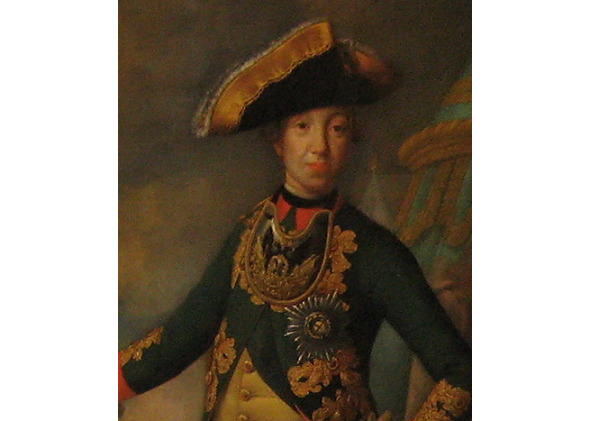
The only desire now is for the wife to allow her husband to leave for his native Holstein. This is theoretically possible. Hardly ever. The situation requires complete certainty.
Peter the Third is kept in the palace of the town of Ropsha (near St. Petersburg), under the supervision of the eminent Orlov brothers. The officers do not dare to finish off the emperor with their own hands. They find a way out. Senator Grigory Teplov and Fyodor Volkov are involved in the operation, an actor, founder of the Russian Theater, once not recognized by Peter III as a stage genius. The latter, as follows from the research of historians, is the most likely murderer of the emperor.
Catherine II ascends to the Russian throne. The Catherine Age, the Golden Age of the nobility opens. Yes, the German Empress, a representative of the Gottorp sovereign house of the Oldenburg dynasty, who took the throne through a palace coup. But, it is the very precariousness of the situation that compels Catherine to respect the interests of the parties, to find balance, to carefully study the processes taking place in society. She is not a regent under her son Paul, but, contrary to the rules, «at the will of all Our loyal subjects, explicit and unfeigned», a full-fledged empress.
One of the innovations is the secularization of monastic lands. Previously, the collection of taxes, the management of the villages belonging to the church was carried out by the clergy themselves. Farmers worked out corvée, performed a lot of natural obligations introduced «out of friendship», and fell into debt bondage. Now the peasants, numbering a million, and this is only males, are being freed from church feudal lords. They acquire many liberties, legal rights, are called «economic» and pay one and a half rubles a year to the state personally. Their villages are under the supervision of retired officers. Monasteries, the number of which is reduced by three times, are paid amounts for their maintenance from the state treasury.
The influence of Russia in Poland is growing. Polish and Lithuanian magnates openly oppose the monarch Stanislav Poniatowski, who was elected in 1764. The side of the ex-lover of Catherine II is taken by a powerful eastern neighbor. At the invitation of the king, the empire introduces a military contingent into the territory of the Commonwealth. Suffering defeat after defeat from the troops of Suvorov, the Confederates find nothing better than to turn to Turkey (the reward for the help of the Ottomans is Volhynia and Podolia).
…In May 1764, the Empress, after consulting with the scientist M. Lomonosov, dispatches an expedition to the North Pole. The commander of six ships equipped with perfect equipment of that time was Captain V. Chichagov. The expedition stops northwest of Spitsbergen (Grumant Island), reaching a latitude of 80 degrees and five minutes, in front of insurmountable ice. The second campaign wins over the North by only one geographic minute. Thus, Lomonosov’s hope that «the ice will disperse» and the Russian ships will reach the shores of North America is not justified.
…Using some pretext, the Turkish authorities imprison the Russian ambassador Obreskov in the Seven-Tower Castle. This, according to Ottoman custom, means the beginning of a full-scale war. In response, on November 29, 1768, Catherine also declared war. The Russian fleet is sent to the Mediterranean Sea under the control of the favorites, the Orlov brothers. Its main goal is to incite anti-Turkish uprisings among the Christian peoples conquered by the Ottomans. Crimean Tatars cross the Russian border and attack Novorossiya. The wheel of war is turning. The Russian detachment occupies Azov and Taganrog. The clatter of axes and the grinding of saws marks the revival of the Azov flotilla. On the other side of the theater of military operations, Prince Golitsyn provokes the Turks, departs, and waits for two months for the booty to come to him by itself. Indeed, the Turks come, but because of the corruption that reigns now in Ottoman society, they are worn out, hungry and demoralized. In 1770 a series of fierce battles will take place. We should especially note the battle near the Cahul River, in the south of modern Moldova. The forces of the sides: the Russian army — 32 thousand, 118 guns, the Turkish army — 150 thousand with 140 guns. A detachment of Tatars, 80 thousand soldiers is preparing to attack Rumyantsev’s carts. The commander withdraws part of the troops to protect them. Only 17 thousand people remain for the general battle. On the night of August 1, soldiers line up in squares of 800 soldiers and move at an accelerated pace towards the Ottoman army. It is difficult for the Turkish cavalry, like cavalry in general, to attack the cadre infantry prepared for battle. Russian guns are effective. Confusion is caused by ten thousand janissaries who have appeared on the flank. After the intervention of officers, the square continues the offensive. A detachment of Kurds as part of the Ottoman army, instead of helping the Turks, is taken to plunder them. The next day, a Russian detachment attacks the Danube crossing. Here, on 300 ships, the remnants of the Turkish army are trying to evacuate. Losses of the parties. The Turkish army has 8 thousand soldiers, 140 cannons, 4 thousand prisoners «on a moderate basis». Russian army — 364 people.
Further, almost without resistance, Russian troops for the first time capture the strategically important fortress of Izmail. Problems with the delivery of provisions, the establishment of comprehensive relations with allies are a thing of the past. Catherine’s army remains to spend the winter in Moldavia and Wallachia.
The Russian fleet moves from the Baltic to the Mediterranean, losing 40% of the materiel due to leaks and other incidents. For the occupation of Turkish fortified points, together with the Greek rebels, amphibious assault forces are landed. At first, things are successful, but after the Greeks brutally dealt with the prisoners of war — no longer. In addition, there are two admirals at the head of the fleet, which cannot but cause some friction. Favorite of Catherine II, Alexei Orlov acts as a powerful arbiter. After a warm-up clash in the Chios Strait, where the losses of the parties are approximately equal, the Battle of Chesme takes place. It develops simply. After a serious artillery barrage, the Russian ships release four fire-ships against the Turkish fleet huddled in the bay. With two such oared torpedoes, the crew is evacuated in boats too early. The third ship runs aground near the coastal battery, preventing it from conducting aimed fire. The fourth «torpedo» interlocks with the battleship, ignites it and, a few minutes after the team leaves the fire-ship, explodes.
Debris falls on other Turkish ships, causing a firestorm. 14 Turkish battleships, 6 frigates and an uncountable number of small ships are burning, sinking. Out of 15 thousand Turkish sailors, 4 thousand are saved. The Russian fleet controls the entire Aegean Sea. The blockade of the Dardanelles begins — a number of straits between the islands off the western coast of Turkey. The main goal, in the future, is the capture of Constantinople. Russian citizenship is accepted by 27 islands of the Aegean Archipelago. The fleet numbers up to 50 pennants. In August 1773, a Russian squadron begins the siege of Beirut (then Syrian). Two months later, the city capitulates. It is passed on to the allies who have accepted the patronage of Russia. At the same time, 200,000 piastres of indemnity, according to the Naval Regulations (not the usual correct war for the Russians), are distributed among the ship’s crews.
In July 1774, the parties to the conflict signed the Kuchuk-Kainardzhiyskiy (place in modern Bulgaria) peace treaty. In comparison with the successes of the Russian army and the funds spent, he is modest. Russia acquires Kerch and a part of the northern coast of Crimea, with the right of navigation in the Black and Mediterranean Seas (unhindered passage through the Straits), also 4.5 million rubles in indemnity. The Crimean Khanate becomes independent from Turkey. A number of territories, including Ochakov, remain in the possession of the Port. The population of the Dardanelles who have taken Russian citizenship has to be transported by ships to Kerch and St. Petersburg. In 1778, Alexander Suvorov organized the resettlement of 30 thousand Christians persecuted from the Crimea to the Azov region.
The funds allocated for the military expedition are truly enormous. Catherine II, for the first time in the history of the Russian state, turns to foreign loans. The external debt, which exceeds the annual budget at times, is swelling. Inflating territories, which is not a bad thing in itself, and increasing international prestige, does not improve the life of the population of Central Russia. The cost of bread increases 4—6 times. Farmers often starve and slowly but surely turn into slaves.
In 1769, the first Russian paper money came into circulation. This is an obligation-receipt for receiving a coin (if copper nickels, 20 kilograms for 20 rubles). Very popular banknotes are in circulation until 1843. A cow and a horse cost a ruble and a half, the same tithe of land (a little more than a hectare). Sermyaga (simple clothes) — 20—40 kopecks, an ax 7 kopecks, a pood of rye — 5 kopecks. The most popular among the people are dimes. Gold coins are used for international payments. A foreman at a state plant receives 120 rubles a year (33 kopecks a day), while a freelance worker gets 20 rubles.
Under Catherine II, the market for people was finally formed. At the prices of 1782, the standard inventory of the estate: «… In the courtyard of courtyard people: Leonty Nikitin is 40 years old, according to an estimate of 30 rubles. His wife Marina Stepanova is 25 years old, estimated at 10 rubles. Efim Osipov 23 years old, according to the estimate of 40 rubles. His wife Marina Dementieva is 30 years old, estimated at 8 rubles. They have children — a son Guryan 4 years old, 5 rubles, the daughter of a girl Vasilisa 9 years old, according to the estimate of 3 r., Matryona is one year old, according to an estimate of 50 k. «A good village «girl» can be bought by a landowner for 200 rubles. Pedigree puppies are more expensive — up to 10,000 rubles.
…On the Don, there is a stratification of the Cossacks into «old», serving the state, and fugitives. The latter have serious financial problems. In addition, in conditions of peace, they desire to gain fame. Siberia and the Urals are a huge cauldron of war. The uprising of the peasants under Catherine II has a historical basis.
…In 1667, the Cossack Stepan Razin became the leader of free warriors: Cossacks, Tatars, Bashkirs, Kalmyks, Nogays. Thieves’ campaigns are made to the lower Volga and across the Caspian Sea to Persia. The fleet of Stepan Timofeevich launches the ship of Admiral Mamed Khan to the bottom, seizes other vessels that have lost their speed, which, according to the inexplicable plan of the naval commander, are connected by chains. Among the trophies were the khan’s son and daughter — a Persian princess, the heroine of a famous song. According to legend, the Cossack sacrifices the maiden weighed down with rich decoration to the river.
In the spring of 1670, Razin entered into open confrontation with the tsarist administration. The entire Volga and part of the Volga region is under his control. The main idea is to extend the Cossack military-democratic system to the Russian state. The governors are trying to settle the matter peacefully. They send ambassadors to Stepan, but only death awaits them in the camp of the rebels. The Cossacks claim that among them is the son of Alexei Mikhailovich, Alexei Alexeevich and the exiled Patriarch Tikhon.
The Cossack structure of communal life, over time, is not liked by all peasants. Nevertheless, the rioters seize Astrakhan, Tsaritsyn, Saratov, Samara and stop in front of Simbirsk. Here they engage in battle with the 60,000-strong tsarist army under the command of Yu. Baryatinsky. Razin is seriously injured. Supporters take the ataman to the Don, to the Kagalnitsky town. Here the «homely» Cossacks hand over Razin to the tsarist governors.
Astrakhan, the capital of the rebels, lasts less than a year.
…Probably, not all Russian subjects share the conviction of Catherine II that she was elected empress «at the request of everyone …". Interestingly, both Stepan Razin and Emelyan Pugachev were born, 112 years apart, in the same Cossack village Zimoveyskaya (Zimoveiko). Empress Catherine II orders to literally raze the village to the ground. Now the location of the village rests at the bottom of the Tsimlyansk reservoir in the Volgograd region.
Pugachev takes part in the Seven Years War with Prussia, the Russian-Turkish war of 1769—1774, when he is ill, he asks for resignation, but does not receive it and hides from the authorities. The Cossack fled to Novorossiya, from there, on the advice of the Old Believer, to Poland. Here, declaring himself a schismatic wishing to return to normal life, he receives a passport and a residence permit in the Mechetnaya Sloboda (later the city of Saratov, on the Volga tributary). Emelyan is called Peter the Third and asks his friend, a retired soldier Stepan, to bring him to the instigators of the former Cossack uprising. The people are dissatisfied with the assignment of state peasants to the factories. Catherine II forbids serfs to even complain about the landlords. There is a rumor about the transfer of all the peasants «to the treasury», where life is really better, or even a decree on liberty drawn up by the deceased Peter III. In the fall of 1773, the first followers of the daring Cossack appeared. The riot flywheel spins itself. Pugachev may no longer lead the army. Cossack foremen arrange everything that is needed in his name. Over time, the Cossacks are looking for the «tsar» bride from «their» — Ustinya Kuznetsova. In 1774, during the siege of Orenburg, after the wedding, she acquired the title of «Empress». The rebels seize carts, military factories, but exhaust their forces in the siege of Ufa and Orenburg. A series of defeats opens up.
Government troops are pushing the insurgents. However, the death of the commander-in-chief from illness gives the detachments of E. Pugachev a month to regroup. There is a connection with the formations of Salavat Yulaev, the poet, the leader of the uprising in Bashkiria. At the height of the uprising, the combined army reaches the number of 40 thousand fighters. To manage it, Pugachev creates a Military Collegium, with field courts and others.
The peasant army almost in one day captures most of Kazan (except for the Kremlin). Here, in the prison of the Secret Commission, Pugachev discovers his first wife Sophia with three children. He takes them with him separately, saying that this is the family of a Cossack, «whipped» for his name. Sometimes he also mentions his «son», Paul the First.
«Tsar Peter the Third» distributes manifestos on freedom for the peasants, distributes to the inhabitants supplies of salt and bread. His army, greeted with enthusiasm by the people, is approaching the Moscow province.
Saratov opens with a bell ringing.
Instead of an immediate attack on Moscow, Pugachev turns south. According to one version — in order to capture Tsaritsyn and gain strength in the Don army, according to the other — to finish this performance and dissolve in the vast steppes of the Kuban. On the way, the militia overtakes a large government detachment. Due to the rapid cavalry raid, the rebels immediately lose 24 guns. Artillery was already the god of war at that time. Detachments of advancing peasants scatter cannon volleys. Cossack colonels, wishing to earn forgiveness, bind the leader and hand him over to General A. Suvorov who arrived in time. The future generalissimo personally guards the cage with Pugachev. After the investigation, on January 10, 1775, on Bolotnaya Square in Moscow, the people’s tsar was executed.
Both wives of the peasant leader and his children are imprisoned by the sovereign in a monastery.
…In the name of strengthening the administrative apparatus, the government of Catherine is downsizing the provinces. Instead of 23 centers of power, there are 56 of them. The bureaucracy and the power bloc are doubling, and the costs of them are increasing four and a half times.
As a result of the uprising, the position of the serf factory workers is slightly improved, but conclusions about indulgences for the entire peasantry do not follow.
A year before the start of the Pugachev uprising, in 1772, the first partition of the Polish-Lithuanian Commonwealth took place. The Polish Sejm abuses the principle of proclaiming a ban on the discussion of a resolution by at least one dissenting participant. The Russian ambassador Repnin is working on the creation of a pro-Russian stratum. The king of Poland, Stanislav Poniatowski, in the past — Catherine’s lover, her protege, treats Russia friendly. But he and his followers are no longer capable of managing anything. The country is divided into many small republics even before the centralized states pay attention to it. So, by mutual agreement, the contingents of Prussia, Austria and Russia enter Poland. A. Suvorov’s troops occupy the ancient capital of Krakow, as well as part of the present-day Baltic and Belarus. Polotsk and Mogilev provinces after six years will be transformed into one Belarusian province. Prussia gets the present West Prussia. Austria receives Galicia without Krakow, Lvov and a number of adjacent lands. The allies occupy Warsaw and demand that the Seimas ratify the legality of the incident. For the fastest decision-making, the principle of «liberum vito» is canceled, and the majority says «yes».
In 1775, according to the decree of Catherine, the Zaporozhye Sich was finally liquidated. Turkey is reconciling. On the night of June 5, 50 combined cavalry regiments — Don Cossacks, Hungarians, Wallachians and up to 10 thousand infantry — approach Novaya Sich. The Cossacks, after heated discussions, accept the ultimatum and leave the fortress. After that, the fortifications are destroyed by artillery fire. Part of the Cossacks went to the Crimean Khanate (under the protectorate of Russia, but quite independent), then to Turkey to serve the Ottomans (Transdanubian Sich). Some remain in the service of Russia. The elders receive the nobility. The lower ranks, if they are able to withstand discipline, join the dragoon and hussar regiments. The irregular «Army of the Loyal Cossacks» settles on the left bank of the Kuban.
In 1777, the son of Alexander, the beloved grandson of Catherine, was born to the heir to the throne (23 years old) Pavel and the German princess Sophia-Dorothea.
In 1783 the Empress issued a manifesto on the annexation of the Crimean peninsula and the Kuban to the Russian Empire. All this together is now called Tavrida. The last khan, Shahin-Giray, a man of a European mentality, although a spender and despot who failed to build communication with the Russian authorities and his population, abdicates the throne. Later, with a salary of 200,000 rubles (this is a lot), he lives in Kaluga. Later, the ex-monarch asks the Russian government and the Vysokaya Porto to return to their homeland. There, in the fortress of the island of Rhodes, the Ottoman authorities will execute him.
Eastern Georgia passes under the protectorate of Russia on August 4, 1783. The Georgievsk Treaty does not provide for the kingdom’s entry into the Empire, and therefore protection by all forces and means. The construction of the Georgian Military Highway starts. In 1787, for some hidden reasons, Russia withdraws two battalions from the possessions of the Kartvels. Georgia will still be subjected to powerful blows by the Dagestani Umma Khan and the Persian Shah Agha Mahomet, before the document signed by Paul the First and the strong Russian garrison will give its lands peace.
In 1787, in the summer, with a retinue of three thousand, in the company of Potemkin and representatives of foreign missions, the empress set off on a Tauride voyage across Novorossiya and the Crimea. The procession goes through Kiev, Kherson, Bakhchisarai, Sevastopol, Sudak (Surozh), Old Crimea, Feodosia, Mariupol and Azov.
This catwalk does not go unnoticed in the Port. Revanchist sentiments are fueled there. The Sultan puts forward a note on Russia’s renunciation of Crimea. The Russian envoy, in turn, conveys to Turkey a demand to stop attacks on the borders of Georgia. In the end, the diplomat is imprisoned in the Seven Towers Castle, which means war. The fighting begins in August 1787.
By that time, Russia was already concerned about creating an alliance with Austria. The troops of Suvorov and Potemkin besiege Ochakov. The commander-in-chief hesitates, citing concern for the people, but it comes to winter, and the sorties of the Turks bring tangible losses. We have to accept Suvorov’s plan — a decisive assault. The attack, from different sides in six columns, is being carried out in 20-degree frost. Ochakov is captured and, by order of Potemkin, is destroyed. Actions are transferred to the territory of modern Romania (Rymnik River), where Suvorov, commanding also the Austrian troops, inflicts a number of serious defeats on Porte. Austria itself, having achieved the liberation of Belgrade, but also having learned the bitterness of defeat in several battles, after the change of emperors, withdraws from the war. In December 1790, Suvorov begins the assault on Izmail, which, according to him, represents «a fortress without weak points.» The forces of the parties: Russian troops 31 thousand people, 600 guns, the Turkish garrison — 35 thousand, with 260 guns, plus 10 meter walls of the fortress and a moat. After two days of artillery preparation, at three in the morning, on a signal flare, the convoys of soldiers storm the fortifications. The night passes imperceptibly into day. One and a half thousand horses escaping from the burning stables intensify the confusion. The Ottomans cannot retreat. The Sultan defines execution as the only punishment for those who leave the fortress. The card fire of 20 cannons supporting the infantry clears the streets, but every house has to be taken with a fight. Suvorov throws rangers into battle, who, acting ruthlessly, complete the rout by four in the afternoon with bayonets alone.
Losses of the parties. Port — 26 thousand, 8 thousand prisoners. Russian Empire 4600. The corpses of Turkish soldiers have to be thrown into the Danube, because it is impossible to carry out excavation work on such a scale in winter.
According to the Yassy Peace Treaty, Izmail has to be returned to Turkey.
On the Black Sea, the Russian fleet thwarts the plans of the Turkish command to land troops in the Crimea (battle in the Kerch Strait). The new Sultan Selim the Third fails to approach the signing of the peace with at least one victory. The Yassky peace treaty is concluded on January 9, 1791. The Crimea, the Northern Black Sea region, and some other lands are assigned to Russia. Odessa, Grigoriopol, Tiraspol are based on them. New lands — the Black Sea region, the Volga region, as well as Volyn, are populated by 70 thousand ethnic Germans who do not pay taxes invited by Catherine.
In addition, Turkey refuses to take hostile actions against Georgia. The once formidable Porta evokes sympathy. The Russian ambassador, on his own responsibility, deletes the clause on monetary indemnity from the peace treaty.
Catherine’s dreams of creating New Byzantium do not come true due to the position of the French, who are already in a privileged position in the East, and the British, who do not want to disrupt the existing balance of power.
Бесплатный фрагмент закончился.
Купите книгу, чтобы продолжить чтение.
